








When you become our client, we get to know you first then create a wealth plan that meets you where you are today and where you hope to be tomorrow. Your Amarillo wealth team is committed to being here for everything life brings your way.
*Barron’s awarded the 2021 and 2020 #5, 2019 #4 and 2018 #3 Top RIA Firms ranking to Mariner Wealth Advisors based on data compiled for Mariner Wealth Advisors and the 2017 #2 and 2016 #1 rankings to Mariner Holdings based upon data compiled for Mariner Holdings’ registered investment adviser subsidiaries. The number of firms included in the rankings were: 20 (2016), 30 (2017), 40 (2018), 50 (2019) and 100 (2020 and 2021). Barron’s publishes rankings based upon a number of criteria and the firms’ filings with the SEC were used to cross-check the data provided. The listing includes numbers of clients, employees, advisors, offices and state locations. The award is not indicative of future performance and there is no guarantee of future investment success. For additional information visit www.barrons.com.


The Forbes Top Women Wealth Advisors Best-In-State Wealth ranking by SHOOK Research is based on an algorithm of qualitative criteria, gained through due diligence interviews, and quantitative data. Those advisors that are considered have a minimum of seven years’ experience, and the algorithm weights factors like revenue trends, assets under management, compliance records, industry experience and those that encompass best practices in their approach to working with clients. Portfolio performance is not a criteria due to varying client objectives and lack of audited data. Neither Forbes nor SHOOK receive a fee in exchange for rankings. Third party rankings and recognitions are no guarantee of future investment success and do not ensure that a client will experience a certain level of performance or results. These ratings should not be construed as an endorsement of the adviser nor are they representative of client evaluations. Generally, ratings, rankings, and recognition are based on information submitted by the adviser.


Mariner Wealth Advisors (“MWA”) is an SEC registered investment adviser with its principal place of business in the State of Kansas. Registration of an investment adviser does not imply a certain level of skill or training. For additional information about MWA,

please contact MWA or refer to the







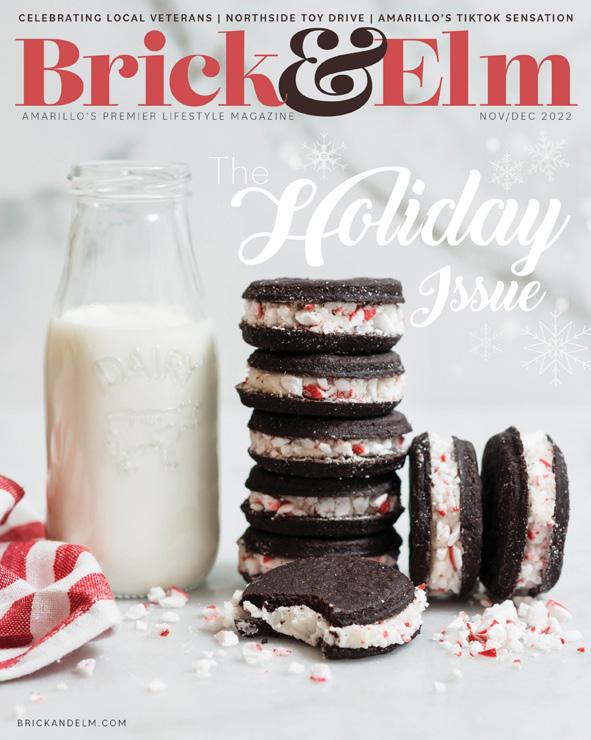
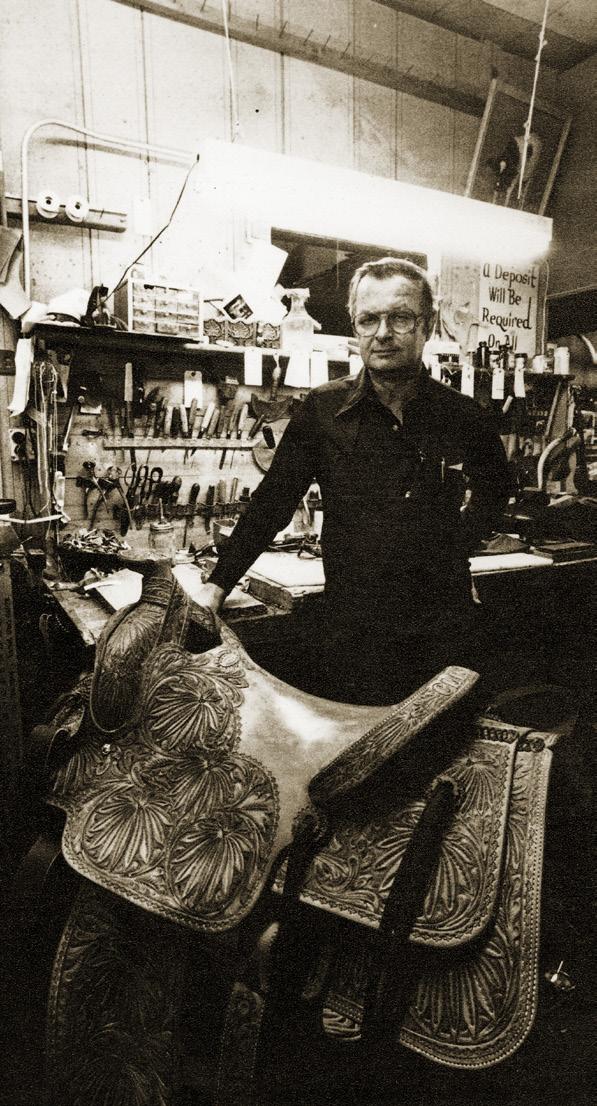

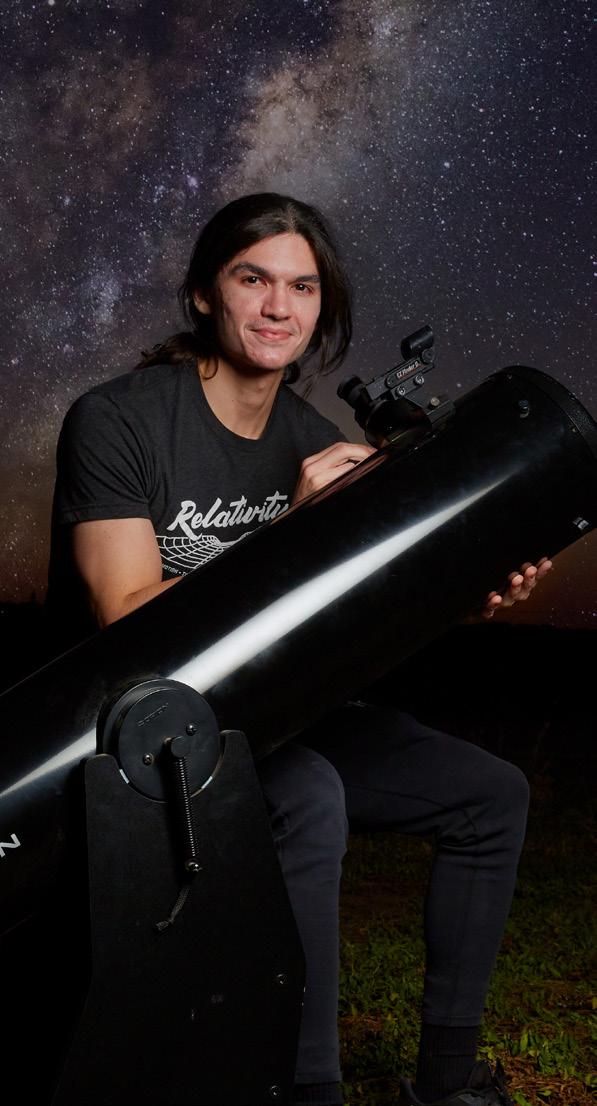
Michele McAffrey mm@brickandelm.com

Michele McAffrey mm@brickandelm.com
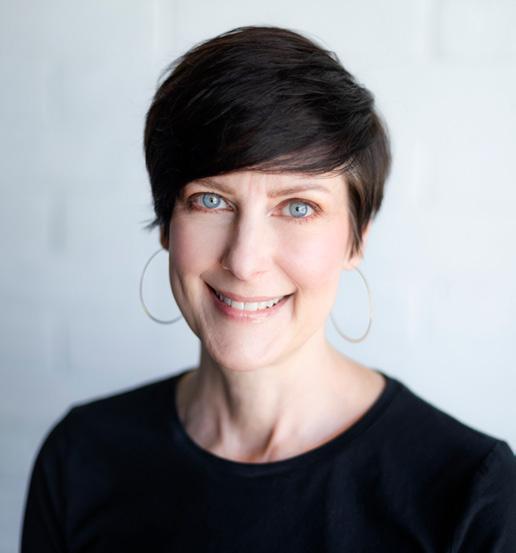
Jason Boyett jb@brickandelm.com
Jason Boyett

jb@brickandelm.com
DESIGNER
Kayla Morris km@brickandelm.com
Kayla Morris km@brickandelm.com
hen I look back over the past few months, it feels like ages since I last wrote an editor’s note, and then at other times the weeks have flown by. In the middle of January, it seemed my days of typing up my last-minute thoughts prior to printing a magazine were over. And then … a miracle.
Adam Baker
Angelina Marie Scott Thomas Shannon Richardson Mason Dudley Gray Gillman
Venice Mincey Shannon Richardson
IWt’s hard to believe that we’ve completed an entire year of Brick & Elm. I have cherished the past year and a half. We hear so much positive feedback, nearly everywhere we go, from Brick & Elm readers and followers of our weekly newsletter, Brickly. Our aim when launching the magazine was connection for a city both in need of it and deserving of it. As this year comes to a close, we see the fruits of connection we feel compelled to provide. We see our citizens stretching themselves to learn more about and understand one another. It is immensely gratifying.
My longtime writing partner Jason Boyett became my new business partner and Brick & Elm was born. This “hyper-local” magazine was created in meetings at our respective homes, and it’s the compilation of everything we’ve ever hoped a Panhandle-focused publication could be. The community outpouring for our new project has been overwhelming in the best way. My friends and local businesses have sent streams of encouraging messages of support. Now I truly know what it means to say my cup overflows


Jonathan Baker Christy Bertolino Chip Chandler Andy Chase Cundiff Maddisun Fowler
Chip Chandler
Andy Chase Cundiff Wes Reeves
Julie Grimes Carrie Huckabay Ruthie Landelius Ryan McSwain Patrick Miller
Wes Reeves
TO SUBSCRIBE: brickandelm.com
Print subscription: $14.94/year
Digital subscription: $8.94/year

This is the first of many fantastic Amarillo-centric issues created by a true dream team—Jason and the incomparable Kayla Morris. I’m thrilled beyond measure to share Brick & Elm with you. Thanks for reading.
Amarillo is in a season of extensive change and growth, unlike any time in my remembrance as a lifelong resident. The excitement and opportunities that these changes promise remind me that this is the best time to live here. Amarillo and its people are worth investing in and celebrating. Amarillo’s businesses need our support and investment now more than ever. I hope you’ll follow along with us as we continue to strive for connection and a standard of living that all of our citizens can enjoy. I can’t wait to see what next year brings.
My dad’s dad, John E. Boyett, was an Army veteran who spent a year in a Nazi prison after his plane was shot down over Austria during World War II. (He spent the rest of his life in Amarillo.) My maternal grandfather, John E. Brown, served in the Marines during World War II, stationed in New Zealand
ll the best parts of my career began in the Amarillo College Journalism Department. There, in the mid1990s, I learned to write fast. I learned to edit. I learned desktop publishing, design and photography. But what I learned most of all is that I really liked magazines. I ended up the editor of AC’s award-winning campus magazine, AC Current, and fell in love with the process of creating a publication, start to finish.
Aa member of the Military Police Corps. Both of my grandfathers had a profound impact on me.
All of us, whether we know it or not, encounter military veterans on a regular basis. With that in mind, we asked a few business and community leaders to share about their own military service, helping readers understand how those experiences still guide them today. I loved hearing from these men and women. I also had the pleasure of spending an afternoon with another local World War II veteran and community leader—the 96-yearold Ed Owens—who shared with me how the military changed him.
Brick & Elm Magazine is published bimonthly by Edgebow Media. All rights reserved. Reproduction in whole or part without written permission is prohibited.
Here I am again, more than a quarter-century later. For years, Michele and I have worked together telling stories about our city. A few months ago we decided the time was right to launch a new, sophisticated, independent magazine about Amarillo. It feels appropriate that our first issue covers topics like trail-building, business reopenings, creative problem-solving and breathing new life into historic structures. We feel like all of those are metaphors for Brick & Elm, and maybe for print magazines in general.
I’m as excited as everyone else about the holidays. But before we jump right into Thanksgiving and Christmas celebrations, we wanted first to celebrate local veterans and acknowledge the importance of Veterans Day on November 11. I’m grateful for the influence of veterans in my family and in this community.
So here’s to fresh starts and a new way to shine a spotlight on the city we love. Thanks for reading. We’re honored that you’re here with us, at the beginning.
the
Your Downtown Athletic Club is now powered by Cooper Aerobics. Our mission is to deliver innovative, customized programming to drive engagement and create lasting, healthy changes for you. At the foundation is our Cooper Quest® wellness program. Designed around Dr. Kenneth H. Cooper’s 8 Steps to Get Cooperized™, Cooper Quest provides five key health assessments focused on your total well-being.

Join the Downtown Athletic Club today! daclub.com 806.324.5402

Kayla has been designing professionally for local businesses and nonprofits for more than 10 years. Kayla was raised in the Panhandle and graduated with a design degree from West Texas A&M University. When not designing she loves spending time outdoors with family and friends.


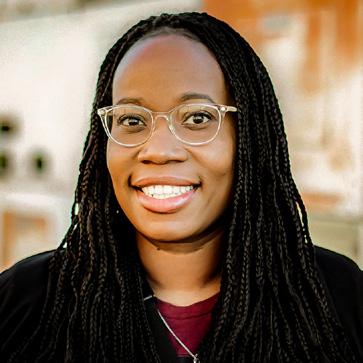
Shannon has been a commercial/advertising photographer for almost 35 years. His work can be seen at shannonrichardson.com.
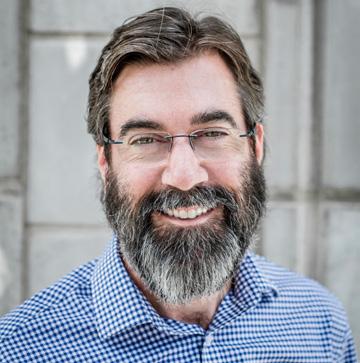
Born and raised in Amarillo, Adam graduated from the University of North Texas School of Fine arts in 2009, and spent the following decade as a commercial photographer in the Metroplex. After the pandemic brought him home to Amarillo in 2020, he began offering tintype photography via Perry’s Tintypes. See his work on Instagram at @perrys_tintype_studio and @adam_baker_photography.

Venice is a natural light photographer, specializing in senior, family and child photography. Her passion is photographing high school seniors, especially those who might not have the opportunity to have professional photos taken. Venice has been taking photos for more than 20 years. See her work at veniceminceyphotography.com.
Wes was raised in the Texas Panhandle and has been a resident of Amarillo for almost 30 years. He has been active in the Amarillo Historical Preservation Foundation for the past 15 years, and works in his spare time to bring history alive through historical preservation and engaging new generations in the appreciation of the region’s colorful history.
Julie is a cookbook author, recipe developer, food writer and editor. She was Senior Food Editor at Southern Living and Cooking Light magazines, and her work has appeared in Garden & Gun, Women’s Health, and Fine Cooking, among others. Grimes has deep roots in West Texas. She’s a Texas Tech graduate and recently relocated back to Texas, settling in Amarillo where she’s looking for her next food adventure.

Ryan is the author of the horror thriller Monsters All the Way Down and the superhero meta fantasy Four Color Bleed. Alongside his fiction, he’s written for all the best industries in Texas. With his wife and two children, he’s happy to call Amarillo home. You can find him at ryanmcswain.com.


Jonathan’s work has appeared in The Daily Beast, and he has been featured on The Other Stories podcast. Originally from Canyon, Texas, he now lives on the coast of Maine, where he writes crime novels set on the High Plains.

Maddisun is the student media coordinator and a mass media instructor at Amarillo College, where she also helps advise the nationally award-winning magazine, The Current, and the newspaper, The Ranger. Maddisun has years of experience in mass communication, working in print, radio, television and multimedia news.
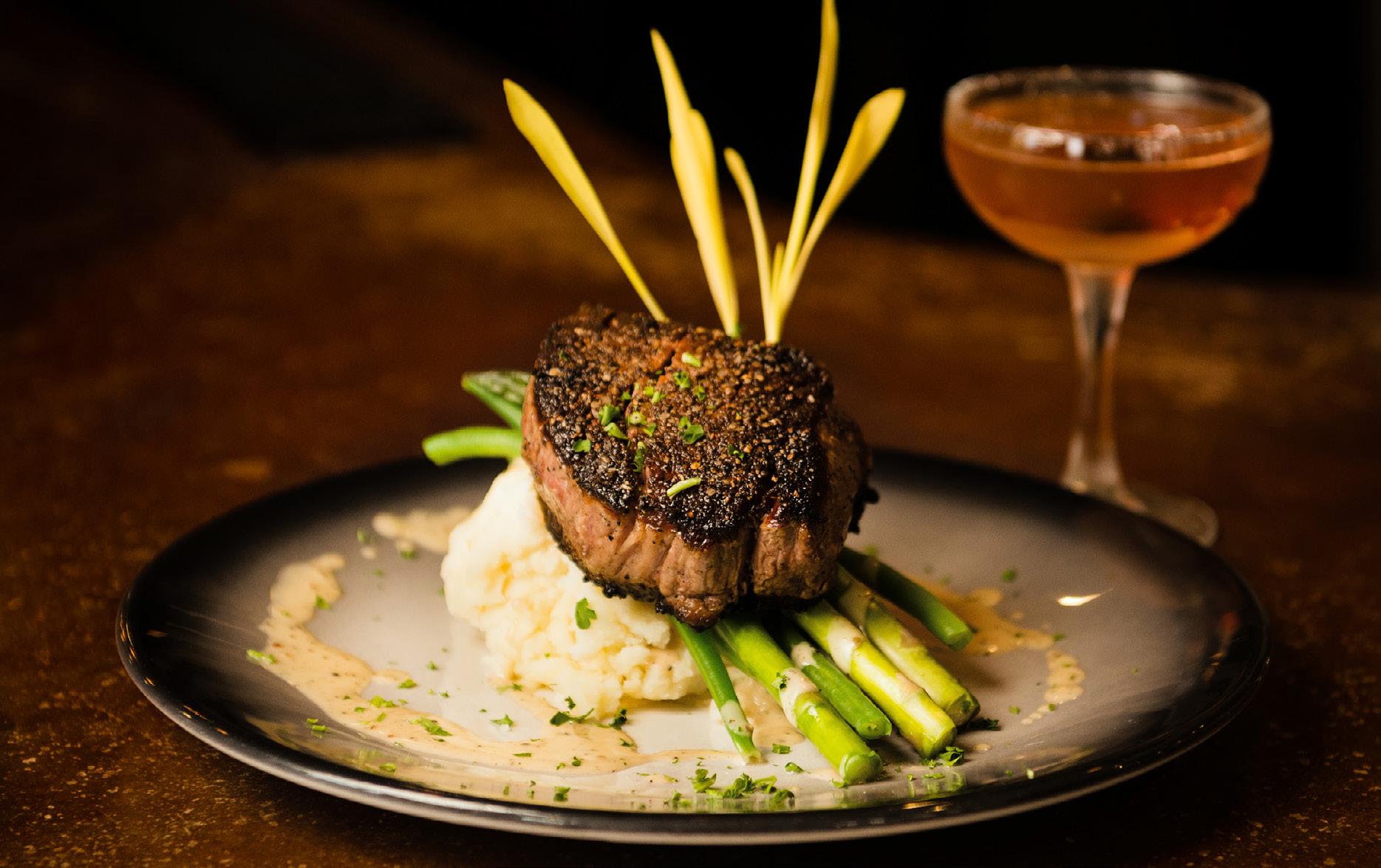

It’s the holiday season, and Santa Claus is coming to town—not to mention ranch cowboys, highly anticipated movies, beloved traditions, new favorites and some world-class drag queens. Here’s a taste of what to expect; for weekly roundups of your best bets, make sure to subscribe to our Brickly and Flavorillo newsletters. Look for the tabs at brickandelm.com.
A DRAG QUEEN CHRISTMAS: Some of the world’s best queens, who’ve found global fame on RuPaul’s Drag Race, hit town Nov. 29 for a holiday extravaganza in the Globe-News Center for the Performing Arts, 501 S. Buchanan St. Other November events include the Working Ranch Cowboys Association World Championship Ranch Rodeo from Nov. 10 to 13 in the Amarillo Civic Center Complex, 401 S. Buchanan St.; Grant Freeman’s An R-Rated Magic Show, which certainly does sound descriptive, on Nov. 4 in the Globe-News Center; comedian George Lopez’s OMG Hi! tour on Nov. 5 in the Civic Center Complex Auditorium; and Amarillo Wranglers hockey games on Nov. 5-6 and 19-20 in the Civic Center Complex Coliseum.
AMARILLO SYMPHONY: The orchestra welcomes Metropolitan Opera soprano Susanna Phillips for Johann Strauss’ “Four Last Songs,” along with familiar works by Wolfgang Amadeus Mozart and Pyotr Tchaikovsky; the concerts are set for Nov. 18 and 19 in the Globe-News Center. Other arts highlights for November include an exhibition by Marcia Tippit from Nov. 3 to 30 in West Texas A&M University’s Dord Fitz Formal Gallery; the Harrington String Quartet on Nov. 4 in WT’s Mary Moody Northen Recital Hall; WT Opera’s Postcard from Morocco on Nov. 9, 11 and 13 in Northen Recital Hall; the Amarillo Symphony Youth Orchestra on Nov. 6 in the Globe-News Center; Amarillo Little Theatre’s premiere of the highly acclaimed new drama Clybourne Park from Nov. 10 to 20 in its Adventure Space, 2751 Civic Circle; Chamber Music Amarillo’s Five Winds concert on Nov. 12 at Sharpened Iron Studios, 1314 S. Polk St.; and WT Dance’s Falling into Dance from Nov. 17 to 20 in the Happy State Bank Studio Theatre.
LINDSEY STIRLING: The violinist/dancer brings her Snow Waltz Tour Nov. 19 to the Civic Center Complex Auditorium; her Warmer in Winter album, with her version of “Carol of the Bells,” was a smash hit. Other concert offerings in November will include the long-awaited return of Mannheim Steamroller’s Christmas show on Nov. 25 in the Civic Center Complex Auditorium; Texas country up-and-comers Corey Hunt & The Wise on Nov. 11 at The Golden Light Cantina, 2906 SW Sixth Ave.; Americana singer-songwriter and former Amarillo star Charlie Shafter on Nov. 19, also at Golden Light; and Texas rockers The Dirty River Boys on Nov. 11 at Hoot’s Pub, 2424 Hobbs Road.
CHRISTMAS ROUNDUP: Amarillo Museum of Art’s annual shopping extravaganza—set for Nov. 4 to 6 in the Civic Center Complex—leads
off a month full of mostly holiday-themed fundraisers. Also on tap: Friends of the Amarillo Public Library’s Books to Broadway night on Nov. 3 in the Civic Center Complex Heritage Room; Window on a Wider World’s WOWW Factor: 1940s USO Variety Show on Nov. 4 in the Civic Center Complex Grand Plaza; the Amarillo NAACP’s Dr. R.W. Jones Freedom Fund Banquet on Nov. 5 at Four Points by Sheraton, 1911 E. Interstate 40; the Texas Panhandle Veterans Ball on Nov. 5 in the Civic Center Complex Heritage Ballroom; the Veterans Honor Banquet celebrating North Heights neighborhood vets on Nov. 12 at United Citizens Forum, 901 N. Hayden St.; the National Philanthropy Day luncheon on Nov. 16 in the Civic Center Complex Heritage Ballroom; Lone Star Ballet Guild’s Nutcracker Ball on Nov. 19 in the Civic Center Complex Heritage Ballroom; and the Original Toy Run on Nov. 20 from Skooterz, 410 Bushland Blvd., to Tripp’s Harley-Davidson, 6040 I-40 West.
BLACK PANTHER: WAKANDA FOREVER: This one, opening Nov. 11, could be one of the Marvel Cinematic Universe’s biggest hits, with anticipation at a fever pitch to see how the franchise bounces back after the tragic death of star Chadwick Boseman. Also scheduled in theaters in November: critically acclaimed drama Armageddon Time, opening Nov. 4; #MeToo drama She Said on Nov. 18; and animated adventure Strange World, war drama Devotion, cannibal romance Bones and All and Steven Spielberg memoir The Fabelmans, all on Nov. 23.
BLACK TIE AFFAIR: Get gussied up for an evening of dinner, dancing, cocktails and casino games at the Northside Toy Drive’s smash-hit annual fundraiser, set for Dec. 16 in the Civic Center Complex Heritage Ballroom. (See page 46 for a feature about this nonprofit.) Tables are sold out, but limited free admission, without reserved seating, is available. Other community holiday events include
Visit brickandelm.com for Chip’s expanded event coverage and movie reviews. Better yet, subscribe to our email newsletters for breaking entertainment news every week!
CHIP CHANDLER
Chip is the city’s arts and entertainment expert, having covered area events since 1998. Stay up to date on local happenings with Chip’s Can’t Miss picks in every issue.

Center City of Amarillo’s Electric Light Parade on Dec. 2 in downtown Amarillo; and Panhandle-Plains Historical Museum’s annual Christmas Open House on Dec. 3 at the museum, 2503 Fourth Ave. in Canyon.



ELF THE MUSICAL: Buddy comes to singing and dancing life from Dec. 1 to 18 on ALT’s Allen Shankles Mainstage, 2019 Civic Circle. Other December arts offerings will include Three Redneck Tenors on Dec. 2 in the Globe-News Center; WT Chamber Singers’ Christmas Concert on Dec. 3 in the Sybil B. Harrington Fine Arts Complex Recital Hall; the WT Symphony Orchestra’s Music of the Christmas Season on Dec. 4 in Northen Recital Hall; Lone Star Ballet’s mainstay The Nutcracker on Dec. 9 to 11 in the Civic Center Complex Auditorium; and Amarillo Symphony’s Happy Holiday Pops concert on Dec. 17 in the Globe-News Center.

NATE BARGATZE: The Grammy-nominated comedian brings his family-friendly Raincheck Tour on Dec. 18 to the Civic Center Complex Auditorium. Other December events include Colorado country band The Barlow on Dec. 3 at Rounders Club; and Amarillo Wranglers vs. the Lone Star Brahmas on Dec. 9 and 10 in the Civic Center Complex Coliseum.
AVATAR: THE WAY OF WATER: I know I’m supposed to care about this sci-fi sequel, opening Dec. 16, but I’m struggling. Thankfully, there are several other movie options in December, including comedic horror film Violent Night on Dec. 3; period romance Empire of Light and (in limited release) Brendan Fraser comeback drama The Whale on Dec. 9; romantic drama Spoiler Alert, also on Dec. 16; animated sequel Puss in Boots: The Last Wish and Whitney Houston biopic I Wanna Dance with Somebody on Dec. 21; and searing drama Women Talking on Dec. 25.



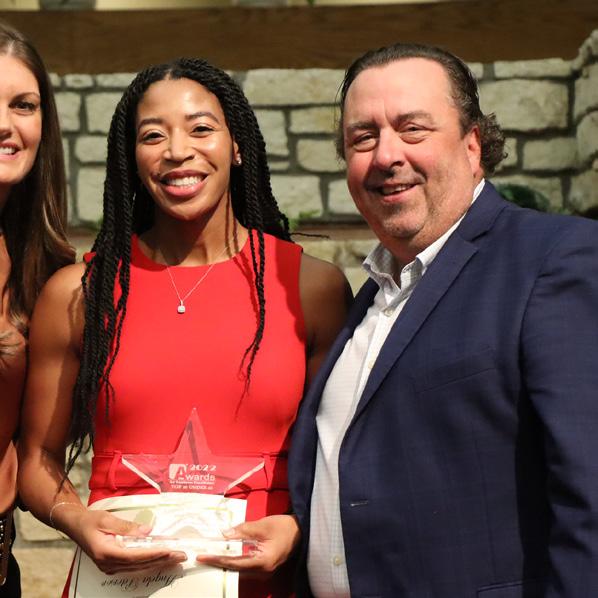
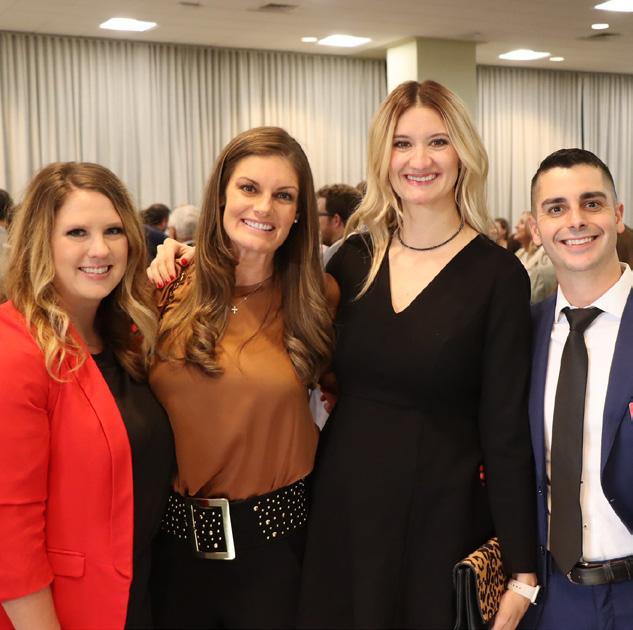




Madly, Deeply is a rare invitation into the mind of Alan Rickman—one of the most magnetic, beloved performers of our time.
From his breakout role in Die Hard to his outstanding, multifaceted performances in the Harry Potter films, Galaxy Quest, Robin Hood: Prince of Thieves, and more, Alan Rickman cemented his legacy as a world-class actor. His air of dignity, his sonorous voice, and the knowing wit he brought to each role continue to captivate audiences today.
But Rickman’s ability to breathe life into projects wasn’t confined to just his performances. As you’ll find, Rickman’s diaries detail the extraordinary and the ordinary, flitting between worldly and witty and gossipy, while remaining utterly candid throughout. He takes us inside his home, on trips with friends across the globe, and on the sets of films and plays ranging from Sense and Sensibility, to Noël Coward’s Private Lives, to the final film he directed, A Little Chaos
Running from 1993 to his death in 2016, the diaries provide singular insight into Rickman’s public and private life. Reading them is like listening to Rickman chatting to a close companion. Meet Rickman the consummate professional actor, but also the friend, the traveler, the fan, the director, the enthusiast—in short, the man beyond the icon.

Madly, Deeply features a photo insert, a foreword by Emma Thompson, and an afterword by Rima Horton.



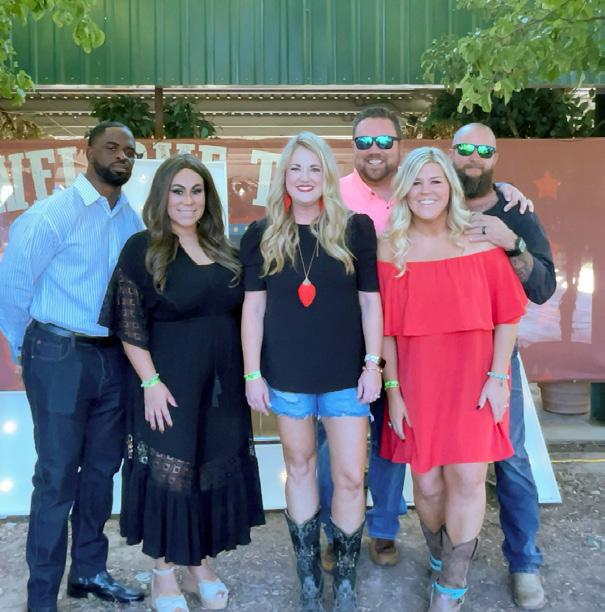
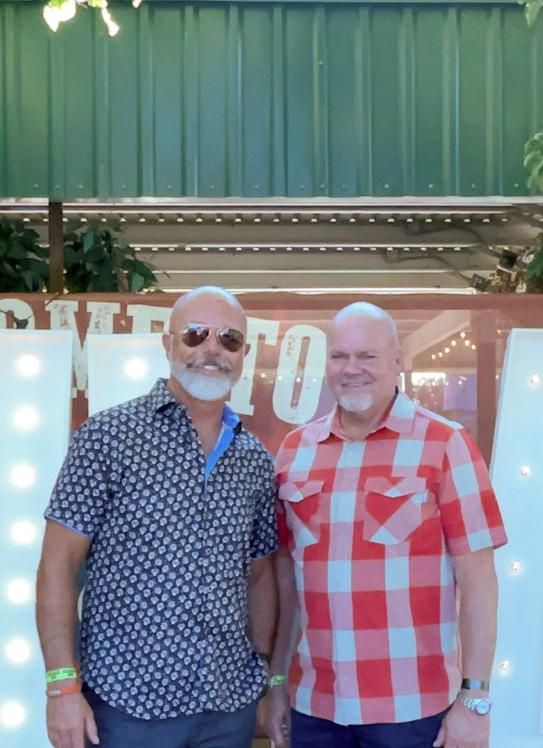
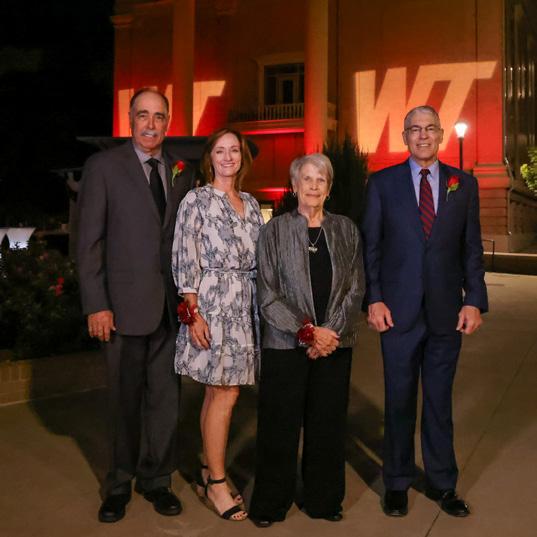

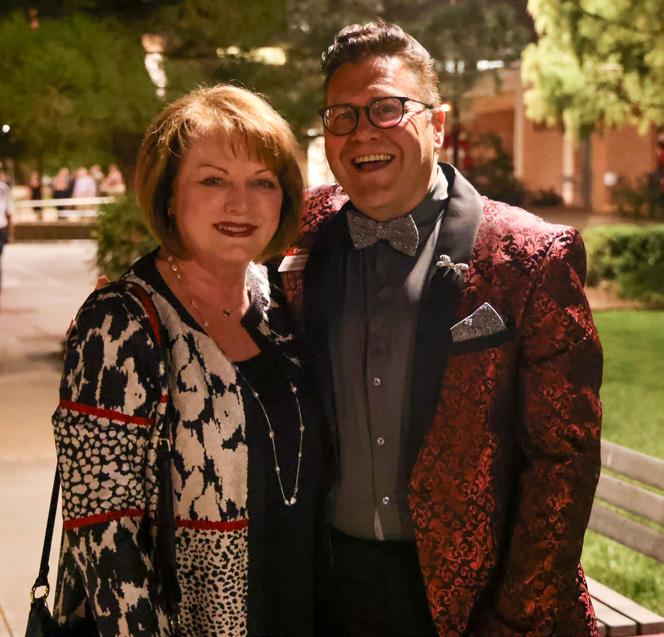
 The WT Alumni Association honored four recipients of its 2022 Distinguished Alumni Awards on Sept. 29 at the Phoenix event during Homecoming Week. This year’s honorees were Col. Steven McCraw, director of Texas Department of Public Safety; Val and Pat White of Wellington; and Betty Solis of Amarillo. Former Texas Gov. Rick Perry spoke at the event. (Provided Photos)
The Junior League of Amarillo hosted its annual fundraiser, Best of Texas, on Sept. 24 at the Starlight Ranch Event Center. The dinner and dance featured live music from headliner Easton Corbin, Roger Creager, Pat Green and Lindsey Lane. (Photos by Cody Perez Photography, courtesy of the Junior League of Amarillo)
The WT Alumni Association honored four recipients of its 2022 Distinguished Alumni Awards on Sept. 29 at the Phoenix event during Homecoming Week. This year’s honorees were Col. Steven McCraw, director of Texas Department of Public Safety; Val and Pat White of Wellington; and Betty Solis of Amarillo. Former Texas Gov. Rick Perry spoke at the event. (Provided Photos)
The Junior League of Amarillo hosted its annual fundraiser, Best of Texas, on Sept. 24 at the Starlight Ranch Event Center. The dinner and dance featured live music from headliner Easton Corbin, Roger Creager, Pat Green and Lindsey Lane. (Photos by Cody Perez Photography, courtesy of the Junior League of Amarillo)

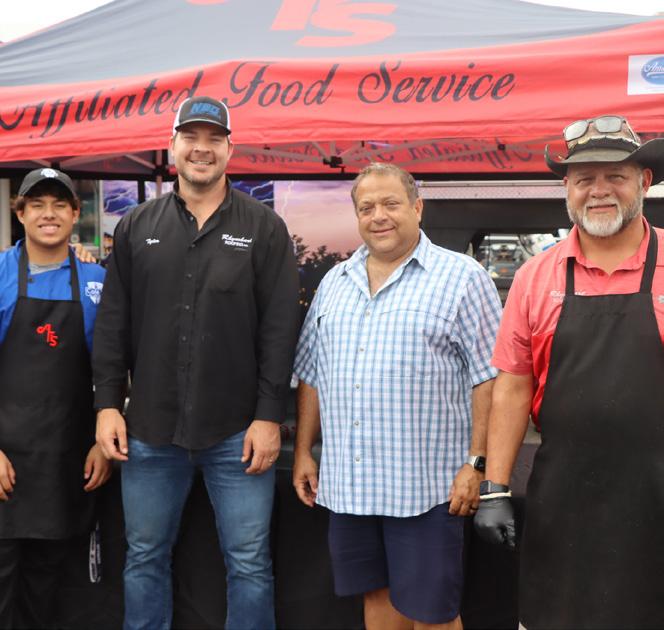

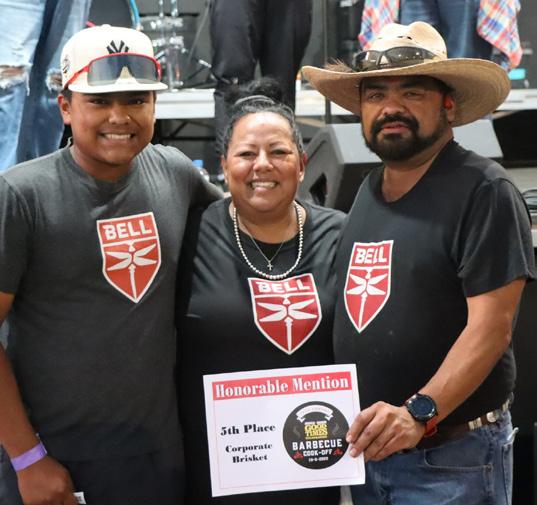
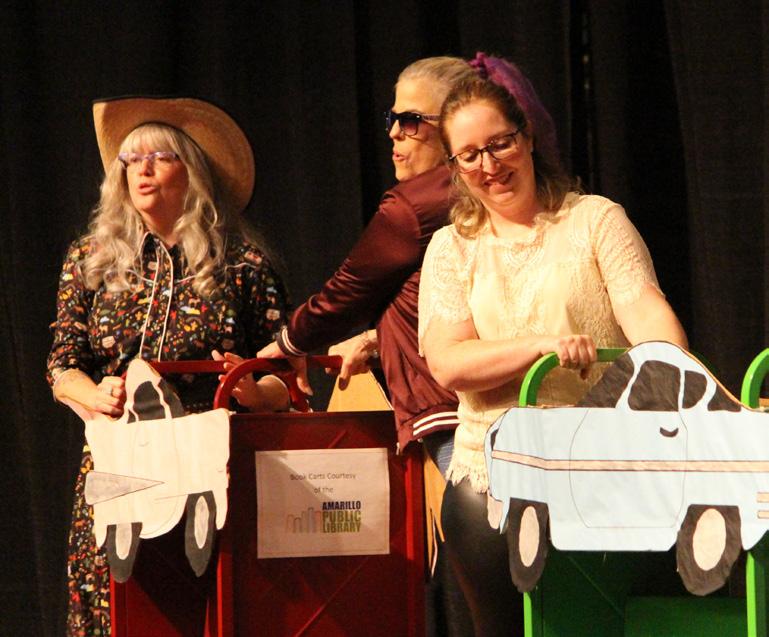




No one’s ever told me I was doing a good job until you guys came along.”
Those were the recent words of a foster mom, directed toward Gwen Hicks and her organization Amarillo Angels, a nonprofit whose mission is to support children in foster care and their foster families. Hicks is a retired educator who learned directly about the plight of children in the foster care system as a CASA volunteer.
The statistics were overwhelming. More than 2,500 children and youth in this region have been removed from their homes and placed in foster care due to situations like neglect, abandonment or abuse. According to research, only 50 percent of these youth will graduate from high school. One in five will become homeless after they exit the system at age 18. They are much more likely to become teen parents or end up incarcerated. Less than three percent will graduate from college, even though the state of Texas waives tuition at statesupported colleges and universities for foster youth.
And those are just the kids. The foster families who work hard to provide them a loving home—if only temporarily—also face challenges. “Half of new foster homes close in the first year,” Hicks says. “They just don’t have enough support.” As a result, children in the foster-care system move an average of seven times every two years, which harms their educational attainment.
“When you make the decision to start fostering, your social circle drifts away,” Hicks explains, because large families don’t often get invited to people’s homes for dinner or games.
Amarillo Angels seeks to meet that family need through two programs. The first, Love Box, supports foster families with what Hicks calls “wrap-around” community support. Groups of volunteers, like a Sunday School class, are connected to caregivers and asked to commit for a year. They build relationships, share meals, host game nights and deliver personal care packages to meet practical needs. “Just having someone there who’s not paid to be in the family’s life is incredibly powerful to them,” says Hicks. Currently, Amarillo Angels has 35 families on a waitlist who are seeking a Love Box group.
Another program, Dare to Dream, provides one-on-one mentorship to children (ages 11 to 14) and youth (ages 15 to 22) in foster care.
“We’re just doing everything in our power to help kids who experience foster care to have the best shot at living their best life, achieving goals and meeting dreams,” says Hicks. “That support is just so meaningful. It’s amazing work.”
Amarillo Angels is always seeking groups of people to start a Love Box group, become mentors, or otherwise get involved. “Tell us what you do and we can tell you how you can help,” Hicks says. Learn more about Amarillo Angels at amarilloangels.org



All November
December 2022, a percentage
Wolflin
| Amarillo,
In November, the Pulitzer Prize winning play, Clybourne Park, explores a neighborhood in Chicago

both acts, which are set 50 years apart. Both acts have explosive conflict, a knack for the wrong thing
said at the wrong time, and many twists and turns in-between. Clybourne Park runs Nov. 10-20 at ALT’s Adventure Space.
ALT’s December production, Elf the Musical, is based on the beloved holiday movie. This Christmas comedy follows Buddy the Elf, who is determined to help New York remember the true meaning of Christmas. Elf will run Dec. 1-18. Bring your entire family to enjoy this modern-day holiday classic!

It’s not too late to become a season ticket holder for the 2022-2023 season—and reserve tickets one week prior to public sale dates!
For more information on shows, season ticket options, and goings-on at ALT, visit amarillolittletheatre.org or call the box office at 806-355-9991.
Support Amarillo Little Theatre by visiting Royal Bar, inside of Palace Coffee’s Wolfin location, and ordering the Rosemary Haze. You can also support ALT in this year’s Panhandle Gives campaign, Nov. 21-29.

can’t wait to see you at the theatre!

Dr. Eddie Henderson, longtime dean of the Terry B. Rogers College of Education and Social Sciences at WTAMU, will step down Aug. 31, 2023, unless a successor is appointed sooner. He will return full-time to the classroom.
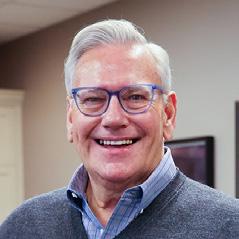
Modern Healthcare has announced rankings for health care organizations recognized as Best Places to Work in Healthcare, with Physicians Surgical Hospitals ranked 49th Best among the top in the country for the ninth year.
Dr. Paul Morley, a professor at the Texas A&M School of Veterinary Medicine & Biomedical Sciences and director of research for the Veterinary Education, Research, & Outreach program, has been selected as the holder of the newly established Sally Rau McIntosh Endowed Chair for Veterinary Strategic Initiatives


FirstBank Southwest was ranked No. 18 among the Best Companies to Work for in Texas under the “Medium Employers” level, a survey and awards program recognizing the top workplace cultures.

Dr. Angela Phillips is now the Mike Wartes Professor of Nursing and Health Sciences. Phillips joined the WT faculty in 2003. She is a member of National Organization of Nurse Practitioner Faculty, Sigma Theta Tau International Honor Society of Nursing, American Academy of Nurse Practitioners, Texas Nurse Practitioners, and Panhandle Nurse Practitioner Association.
Amarillo College announced that it has received a $3 million gift that provides its athletics program with a “Founding Sponsor” and a prestigious name for its new home, which henceforth will be called FirstBank Southwest Center
The Amarillo Fire Department recently announced a number of promotions. Capt. Lance Perdue promoted to District Chief; Lt. John Russell promoted to Captain; Driver Pepper Ramon promoted to Lieutenant; and FF Matt Moss promoted to Driver.



The Department of Energy’s National Nuclear Security Administration announced that it awarded a contract extension to Consolidated Nuclear Security, LLC for the management and operation of the Y-12 National Security Complex (Y-12) and Pantex Plant (Pantex).


Sarah Griffin has been promoted to Director of Grants and Community Investment at Amarillo Area Foundation. She has been a part of AAF’s grant staff for 6 years.
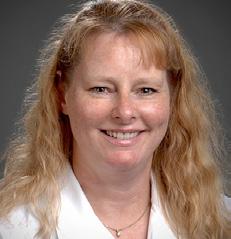
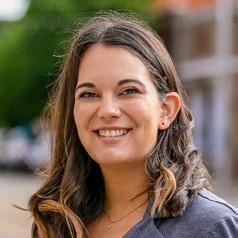
Beth Cameron Gunn has expanded from Scholarship Program Officer to Grants Program Officer at Amarillo Area Foundation. Beth will manage Strategic Education Grants, and many of the Foundation’s Cooperative grants.
Jada Carr Simms was promoted to Scholarship Program Officer at AAF. Jada has been on the scholarship staff and the program assistant since 2021.

One Health Scholar Smriti Shringi has joined Texas Tech University’s School of Veterinary Medicine as an assistant professor of microbiology. Shringi brings more than 15 years of academic and industry experience.

Amarillo College received on-site accreditation with a perfect score for its on-site visit. The Southern Association of Colleges and Schools Commission on Colleges (SACSCOC) completed its on-site visit to AC on Sept. 22.


Angela Knapp Eggers, Senior Director of Community Outreach of the Laura Bush Institute of Women’s Health at Amarillo, has received a Lifetime Achievement Award Eggers has more than 20 years of service and has raised more than $3.65 million with the Power of the Purse luncheon.
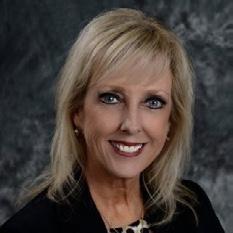

The 2023 National Merit Semifinalists from Amarillo ISD were announced. From Amarillo High School: Michael Carathers, Mehtan Rahman, Lily Sobey and Jeffrey Zheng. From Caprock High School: Christopher Castaneda From Tascosa High School: William Ellis and Elijah Hamilton
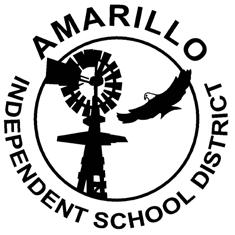
Amarillo College and West Texas A&M University joined with ISDs to increase the number of teachers in Texas Panhandle school districts. The program, One2Teach, will reduce the time and costs for high school students who want to become teachers. Participating school districts at the launch of the One2Teach program are Amarillo ISD, Canyon ISD, Dumas ISD and Hereford ISD. Students completing One2Teach will receive priority placement and guaranteed interviews at their home district.
AC Foundation presented its Chairman’s Award to Caviness Beef Packers for gifts to the College totaling an excess of half-million dollars. The Chairman’s Award is given annually to an individual, family or organization who has exemplified the mission of the Amarillo College Foundation through giving and service.

Tom Hodges was named Professor Emeritus at Amarillo College, for his 40-year teaching span.

The National Nuclear Security Administration has named Carlos Alvarado as Deputy Field Office Manager for the NNSA Production Office (NPO). NPO serves as the federal oversight for the Pantex Plant in Amarillo and the Y-12 National Security Complex in Oak Ridge, Tennessee.
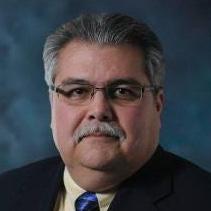
West Texas A&M University has raised more than $73 million in its One West comprehensive campaign.


The Kylie Hiner Memorial Park Committee announced its fundraising goal of $1.1 million has been surpassed to reach $1.3 million. Donations for the park were coordinated through and raised by Southwest Ambucs, a nonprofit service organization dedicated to creating mobility and independence for people with disabilities.

The United Way of Amarillo & Canyon announced that Kiley Murray was named President and CEO in September. Murray previously served as Executive Director of the American Red Cross of Texas.


The Amarillo College Board of Regents approved a 3 percent pay increase for all full-time faculty and full- and part-time staff in 2023, while also raising the College’s minimum wage to $15 an hour.



Amarillo National Bank presented Amarillo College with a $1.2 million gift, funds that will support three specific initiatives: the Mary Ware Scholarship Endowment, capital support for Ware Student Commons renovations, and establishment of the Ware Athletic Scholarship.

West Texas Botanicals opened a new location in Western Business Park. The shop provides natural herbal and botanical remedies.

Opal Nutrition is now open on I-40 West in Wolflin Pointe. Owner Ashleigh Archer provides supplements and infrared therapy.

Owner Donnie Trammell recently opened Panhandle Meat Processing & Ranchers Store on Dowell Road. The storefront carries fresh beef, pork and lamb cuts, and local dairy, spices and vegetables.

The Amarillo City Council recently approved new Amarillo Economic Development Corporation proposals. Austin Hose would bring up to 30 new jobs to Amarillo and have an almost $70 million economic impact over the next 20 years. Unmanned Systems, Inc., dba Albers Aerospace, would result in some 400 jobs with an average annual salary of $100,000 and an estimated economic impact of over $1.65 billion over the next 20 years.
Cadre Fuller Construction opened on I-40 West. The business provides remodeling and construction. Cadre is owned by Jason and Nicole Fuller

Riney & Mayfield Law recently merged with Underwood Law Firm. Underwood has offices throughout Texas. Riney & Mayfield was listed as one of the best firms in the U.S. by U.S. News and World Report.
The Craig Retirement Center was acquired by Lifespace Communities. Lifepace operates three other facilities in Texas.

Andria Keelin was named the General Manager of Four Points by Sheraton on I-40 East.

Carpet Tech has expanded its services to San Angelo, Texas.

Natural Grocers is set to build a new location on the west side of Hillside and Coulter.

Brown & Fortunato announced that John Ben Blanchard and Brad Howard are 2022 Super Lawyers. John Ben Blanchard was selected as a Texas Super Lawyer in Business Litigation Law. Brad Howard was selected to Super Lawyers for his practice in Employment and Labor Law.
John Collins has been named Director of Utilities for the City of Amarillo (COA). Collins is responsible for water production and distribution, wastewater collection, water reclamation and the environmental laboratory.


BSA Health System recently exceeded two surgical milestones utilizing the da Vinci® XiTM robotic system, with the 10,000th procedure being performed at BSA Hospital and BSA Amarillo Surgical Group’s Dr. Shane Holloway performing his 1,000th procedure.

West Texas A&M University was ranked No. 26 in the list of Top Public Universities in the West and at No. 57 in the full Regional Universities (West) list by U.S. News & World Report. WT also ranked among Best Value Schools, Top Performers on Social Mobility, Best Bachelor of Science in Nursing Programs and Best Undergraduate Engineering Programs

Texas Tech University Health Sciences Center was named one of the best colleges in the nation to work for, according to the Great Colleges to Work For® program. This marks the third time the university has been recognized. TTUHSC won honors in eight categories.

Richard “Rich” Tighe became President and Chief Executive Officer for Consolidated Nuclear Security in September. Tighe assumes leadership for NNSA production plants under CNS’s contract: the Pantex Plant in Amarillo, Texas, and the Y-12 National Security Complex, in Oak Ridge, Tennessee.
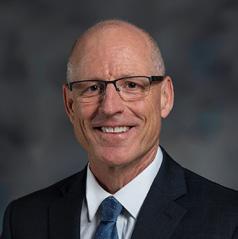

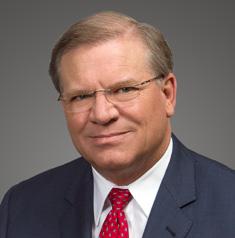
Amigo’s supermarket in east Amarillo has been retrofitted with LED lighting throughout the store. The Xcel Energy lighting project will save on bills and provide rebates for retrofit expenses.

RE/MAX

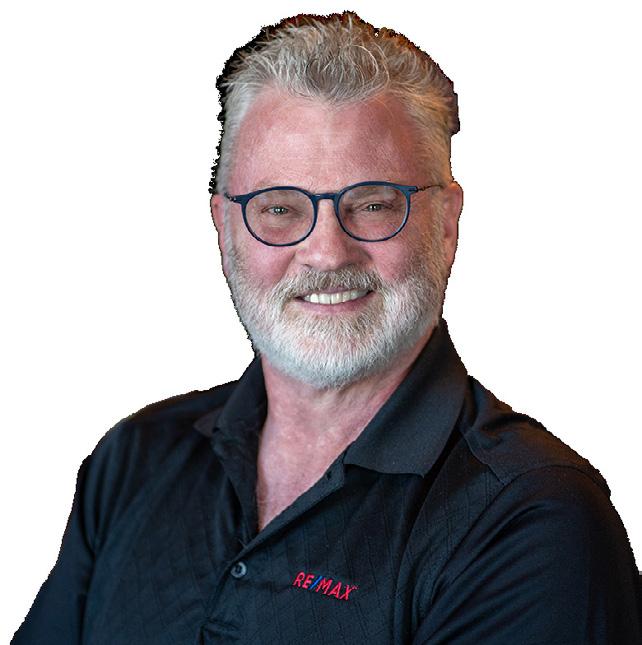
Fire, N.M. 87710

806.683.1355
Having lived in the Texas Panhandle for 22 years. I know Texans appreciate hard work and
contact me for a no-obligation
talk.
already own or to see what is currently available in the Angel Fire/Red River area. I’ll work hard to earn
trust. I’ll work even harder to keep it.

Richard Pullen, Ed.D., MSN, R.N., from the Texas Tech University Health Sciences Center (TTUHSC) School of Nursing, received the NLN Mary Adelaide Nutting Award for Outstanding Teaching or Leadership in Nursing Education. The award honors individuals and organizations of stature and distinction within nursing education and the wider field of American health care.


Education Credit Union (ECU) announced the launch of the Education Credit Union Foundation. The Foundation’s three main areas of focus are Pocket Change Grants for school employees, scholarships and philanthropy.
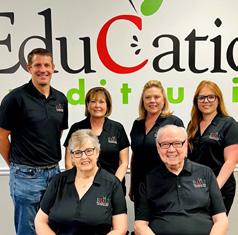
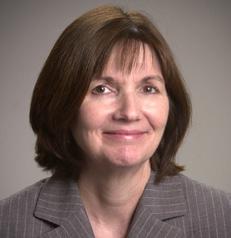

The Amarillo and Panhandle Chapter of the American Institute of Architects awarded a $3,000 scholarship to Jonathan Malott, graduate student and researcher at the University of Texas at Austin School of Architecture.

The WTAMU Foundation named its new Board of Directors last month: Dr. Andy Cole, Lance Jones, T. Luke Longhofer, Chris Lyons, Larry Oldham and Velrick Wilson. The WTAMU Foundation was founded in 1946 to provide student scholarship assistance and to support faculty, staff, and programs.

WT’s Small Business Development Center was named Center of the Year by the Northwest Texas SBDC Region this past August. The center was recognized for its efforts in 2021 assisting small businesses across the Texas Panhandle recovering from the pandemic, as well as working alongside a large number of entrepreneurs starting new businesses as a result of the pandemic.


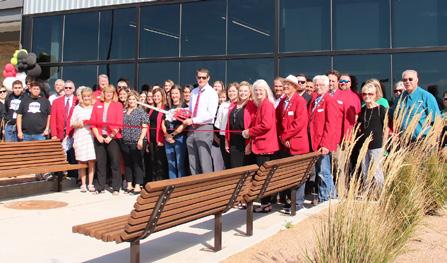

New emeritus faculty members were recently honored at WT Dr. Deborah A. Davenport retired in 2019 as a professor of nursing; Dr. Ted A. DuBois retired in 2016 as a professor of music; Dr. Karyn Friske retired in 2021 as a professor of accounting; Dr. Harry R. Hueston retired in 2021 as a professor of criminal justice; Dr. Darlene A. Pulliam retired in 2021 as a professor of accounting.


Brian Enevoldsen has been named managing director of the WT Enterprise Center. A Texas Panhandle native, Enevoldsen previously served as WTEC’s program manager.
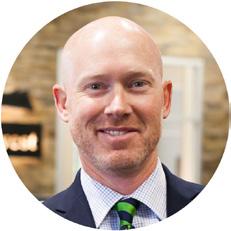

Texas Tech Physicians expanded to Canyon with its new Texas Tech Physicians Obstetrics and Gynecology (OB/GYN) clinic. The clinic is located at 3404 4th Ave.
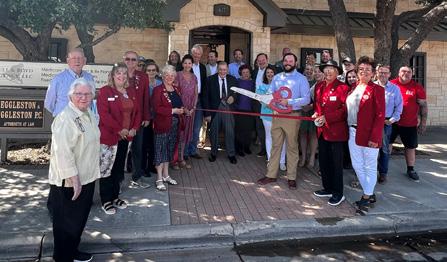
FirstBank Southwest recently announced the promotion of Matt Mathias as Amarillo Market President. Matt has been with FBSW since 2018, and served as Senior Vice President for the Bank’s commercial lending team at FBSW’s Downtown Banking Center located in the FirstBank Southwest Tower. Matt specializes in commercial real estate and residential construction loans.

Dr. Christopher Thomas, currently vice president for student affairs at McNeese State University in Lake Charles, Louisiana, has been named new West Texas A&M University Vice President for Student Affairs. He will begin his duties on Dec. 1.
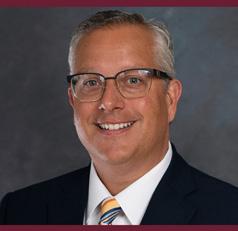
We want to hear from you! To highlight your business, promotions, awards and ribbon-cuttings in this section, email a press release or your business brief to mm@brickandelm.com.



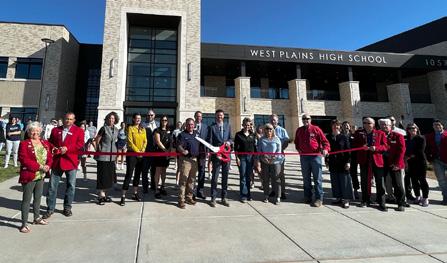
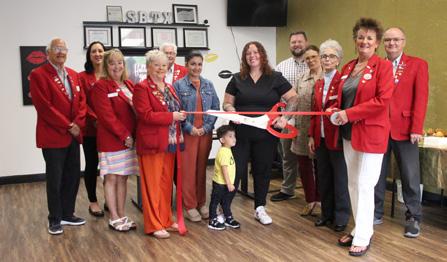


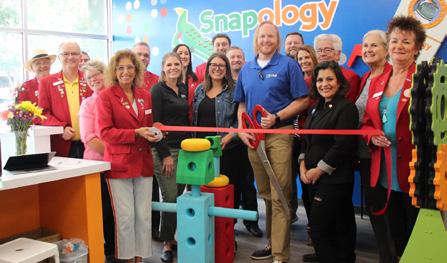
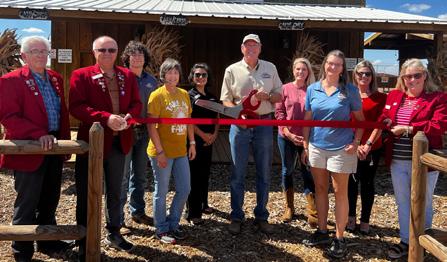


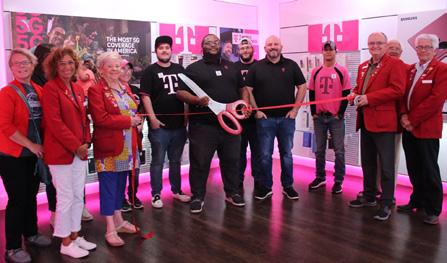
We are now in the middle of that grandest of yearly stretches: “The Holiday Season.”
From the end of October to the end of December, we celebrate like no other time of the year, indulging in any excuse to throw down, throw a party, throw a curve ball, throw anything in reach. Mostly, we throw the baby out with the bathwater. It’s an old saying. If you’re young, Google it.
Some of us over-schedule work to make up for missed days, take “recreational time” to the point of physical exhaustion, travel like ocean salmon on the final return home, cram in twice what we are capable of accomplishing, and still manage to read articles like, “Why Americans Stress Out Over the Holiday Season.”
For your convenience, I have compiled a short list of things you shouldn’t waste a single drop of worry-sweat over this year, mainly because none of them are going away.
The most controversial item on my list is Pumpkin Spice. This polarizing fragrance, flavor, presence, essence—whatever you want to call it—is the initial signal of the season, like it or not. It is everywhere at once; coffee shops, grocery stores, doctor’s offices and public libraries. As a matter of fact, as I write to you from my cozy home in Oliver-Eakle, pumpkin spice wafts in the open door from somewhere down my beautiful street. It’s pretty much inescapable.
The holiday season hasn’t arrived until the first whiff of pumpkin spice. Every few years, I have a pumpkin spice coffee—or whatever that stuff is—just for the sake of sentiment. Mostly, it’s a flip of the coin for me. I don’t really despise it as a cliché, but it does get old after a bit. As long as I don’t see it, hear it, smell it, or read about it in August. Which I did this year. Tacky.

The next on the list is fruitcake. In my mind’s eye, I see you throwing rotten vegetables at me. I know all of the jokes about the first fruitcake coming over on the Mayflower, and that being the same one that is passed around to this day, etc., etc. I hear all the standup routines about “Who actually consumes fruitcake? I mean, it’s the perfect gift for regifting,” etc. I only have one thing in reply to all the fruitcake naysayers: You have never had the right fruitcake. My mother’s mother made not one, but TWO kinds of fruitcake that were absolutely delectable—a dark and a light one. I could never decide which I liked best. Danielle’s mom, my mother-in-law, still makes an amazing molasses fruitcake. If you come to my house over the holidays, I might share with you. If you are nice.
Two tips on fruitcake: Slice it thin, and do not combine it with pumpkin-spiced anything.
Peeps. You know, the little marshmallow chick things. They’re not exactly seasonal—at least, not this season—but they are so maligned I thought I’d add them to the list. Kids consume them by the ton every year, which says a lot because they’re nothing but spun sugar and air. They weigh virtually nothing. They’re harmless. And they come in so many pretty pastel colors. What do you have against the poor little things?
Meatloaf. Why does meatloaf have such a bad name? Maybe because any kind of abomination (like eggplant or squash) can be slipped into meatloaf and still fit the category. I know some people put “stretchers” in, like bread or crackers. No, no, no. At my house, we love to include spicy stuff, like onions and Hatch green chilis. This is part of my wife’s heritage, and also one reason why I can never leave Texas for long.
Candy Corn. Remember this one thing about these little multicolored morsels: They are for kids, not grownups. They are just for us to look at and enjoy the autumn colors while we wistfully recall our golden childhood. You don’t actually have to eat them. You may not recall the exact date, but one of the rites of passage into early adulthood is that October day when you wake up and discover that candy corn tastes pretty nasty. You have lost that kid filter which allows incredible amounts of sugar ingestion. You think, “I used to put these things in my mouth? By the handful?” because your adult self has applied the brakes.
Lastly, but certainly not least, Circus Peanuts. If you had grandparents, your chance of knowing these little nuggets by name (and taste!) increases by 100 percent. The only reason I ever buy them is to return to that childhood place by smell. I never could eat them.
Happy Holiday Season!
Andy is an artist, singersongwriter, music producer and musician. In every issue, his column explores the parts of his life that don’t always make it into his songs, accompanied by his own illustration.


Election season is upon us again, as is the holiday season. Elections—like holidays—can bring out the best and the worst of us. By the time you read this, we will be in the waning days of the midterm elections and our Texas gubernatorial election cycle, or we will have already determined who will represent us at the Texas Capitol, the Governor’s Office, or the U.S. Capitol. Or you might be reading this in the middle of the holidays. You might be memorializing a loved one whose physical absence is resoundingly obvious this time of year.
Over the past couple of years, we have had to strive relentlessly to return to “normalcy” while minimizing the spread of COVID-19. We watched too many family members and read about too many friends who battled or even died battling a virus that seemed to strike when we were inadequately prepared. We also saw people we never knew become the friends we never knew we needed step up to support those impacted the most by this virus. Humanity found a way to shine through the darkest of hours.
Over the past couple of years, we have dealt with extreme cold temperatures resulting in the loss of life during the Winter Storm of 2021, and extreme hot temperatures resulting in the loss of commercial crops and produce in the Texas Panhandle. But we learned how to conserve energy and water resources, proving our empathy and belief in utilitarianism.
Over the past couple of years, our nation has grieved the tragic deaths of children in schools, adults in market places, patrons of public attractions, and public servants in the line of duty. Our rallying cry, “Enough is enough,” seemingly was heard when the United States Congress ultimately passed bipartisan, bicameral legislation to address the issue of gun violence. Action was taken when few thought it possible.
When life has seemed to be the most overwhelming, our instinctual desire to survive has always been matched with our faith and resilience. Though we may not always agree on the appropriate steps toward a resolution, we always seem to march forward. Our finite time here on earth demands that we love and serve as we ought to— without regard to what others may do or how others may elect to live their lives. Therefore, we must all strive to devote our service to the people or causes we hold in great esteem, exercise our fundamental rights as Americans by voting, and extend grace to others—even when we disagree.
Whether you consider yourself to be left or right of center, most would agree the political thermostat has reached an earth-scorching high, while our political discourse has precipitously fallen to an
abysmal low. Have we not all suffered enough without having to add political incivility to the equation? If the past two years taught us anything, it should have been that we are far more dependent on one another than we were previously led to believe.
We can disagree and we should disagree. However, we should not allow our disagreements to lead us to hate one another. Whether you consider yourself a conservative, moderate, or perhaps neither ideological category, your perspective matters. Monolithic “groupthink” leads to isolation from reality, which interferes with the successful transfer of governing authority. This results in the loss of life, destruction of property, and chaos. What we need to prove more than ever is that we genuinely care about the effects of laws impacting our lives, a common respect for our democratic republic, and the ability to peacefully exercise our most fundamental rights without being chastised for the personal experiences which have led to our own political beliefs. Regardless of the outcome of any election, irrespective of our preferences, the results of the election will always be finalized and certified.
When the political advertisements end and the loudest voices are barely a whisper, we then must decide whether to work peacefully for the betterment of our neighborhoods or be responsible for further tearing them down. We have to decide if we are going to build bridges which lead to understanding, tolerance and unity or if we are going to construct barriers to progress. Every election cycle provides opportunities to select between candidates or ideals. But it is the time between election cycles that determines whether or not we are truly committed to making real the promises of democracy.
This holiday season needs to be different. It should be different. As our families gather around dinner tables or pray hand in hand, let us reaffirm our commitment to lead lives filled with love. Let us strive daily to ensure our nation is more united than what it has recently become. The truth is, we all are either anticipating or dreading something over the next couple of months. I pray we can all find grace within and extend that grace to one another.
A passionate local educator and President of the Amarillo Branch NAACP, Patrick writes in every issue about education, faith and forward momentum.











ometimes you just pretend to be asleep, hoping that tonight will be different and maybe he’ll just go to bed. Sometimes you wake up in the dark with the weight of reality bearing down on your chest. Sometimes, out of nowhere, your breathing accelerates and your heart rate spikes as fear, anxiety, uncertainty and dread start to pile up. Your stomach twists into knots when you hear his car pull into the driveway. You wonder which version of the person you’ve devoted your life to is going to walk in the door.
Sometimes you just try to put a smile on your face. You robotically prepare his favorite meal. You set out a beer or glass of wine. Maybe if you do everything perfectly, you can “love” him enough to change him.
Or maybe not. Maybe this is the night he doesn’t just yell, hit or demean you, but he lashes out at your children. You know deep inside you need to leave, but he’s isolated you from the outside world. You’ve been separated from friends, family, money, maybe even a vehicle.
Hopefully you’ve never experienced even a portion of this, but odds are someone in your life has gone through this trauma—a sister, friend, daughter or co-worker. One in four women in the United States has reported experiencing domestic violence, and domestic violence rates in this area are three times higher than the state average. The numbers may even be higher than that, because many survivors are afraid to speak up.
Domestic violence can take many forms, and isn’t limited by gender or sexual orientation. All of them are abusive:
• Physical abuse: Hitting, punching, choking, using weapons or other objects to cause severe injury
• Sexual abuse: Forcing a partner to engage in unwanted sexual acts, refusing to practice safe sex or treating a partner like a sexual object
• Emotional abuse: Name-calling, denying/shifting blame, treating a partner as an inferior, threatening to harm self or others, stalking, using threatening looks, actions, or technology to monitor or frighten
• Economic abuse: Stealing or destroying belongings or money, preventing a partner from getting or keeping a job, not allowing the partner to have access to family income, damaging or ruining a partner’s credit
It’s not always easy to recognize survivors of domestic violence because they don’t often “look battered.” Many suffer for years in silence. The abuse typically begins with warning signs that only continue to escalate:
• Possessiveness and extreme jealousy
• Subtle control, such as strongly encouraging the victim to dress a certain way
• Guilt tripping
• Unpredictability
• Building you up, then breaking you down and repeating this cycle
• Forced sex or disregard of their partner’s unwillingness to have sex
• The silent treatment
• Sarcastic comments downplayed as jokes
• Publicly or privately demeaning the victim
• Coercive and confrontational behavior
• Antiquated beliefs about roles of women and men in relationships
• Accusations of the victim flirting with others or having an affair
• Severing the victim’s relationships with family or friends
This is a common question directed at victims of domestic violence, but people stay in these relationships for complex reasons:
• Fear: The victim may believe it is more dangerous to leave than to stay in the relationship. The abuser may threaten to hurt or even kill the victim, or to take away or hurt their children or pets if she attempts to leave.
• Economics and logistics: Abusers often control the financial resources as well as access to phones, car keys, and even medication and food. When victims believe they cannot support themselves and their children, they struggle to leave.
• Social isolation: The abuser often restricts the victim’s ability to communicate with friends and family, keeping them from reaching out for support. This creates psychological dependence on the abuser.
• Stigma, shame and failure: Many victims have been made to feel, by their abuser or others, that they are responsible for the abuse, leading to shame and embarrassment.
• Children: Survivors may believe their children deserve a twoparent family, even at the expense of their own safety. In some cultures and religious traditions, the victim is stigmatized and shamed for leaving a spouse—even an abusive one—or for seeking a divorce.
• Hope: A survivor may believe her abuser’s expressions of remorse and any promises that it will never happen again. Many survivors also feel it is somehow their responsibility to change or redeem their abusers.
• Immigrants: Survivors whose native language is not English may find it difficult to communicate with health care providers, advocacy services and law enforcement. In some cases, the abuser has legal, documented status while the victim does not, leaving the abuser with near absolute power over the victim.

Domestic violence is not your fault. If you or a loved one is in this situation, please seek help. If you are in immediate danger, always call 911. You can also call the Family Support Services 24-hour crisis hotline (806-374-5433) to access our advocacy services or our emergency safe house.
Christy is the Director of Donor Engagement for Family Support Services of Amarillo (FSS), a nonprofit agency founded in1908. While serving on the Board of Directors, Christy witnessed firsthand the countless number of people FSS served and is grateful to be back where her heart is: FSS, “The Beacon of Hope.”


It’s that time of the year, again, folks. The time strategic lists start being planned for Thanksgiving and Christmas. Who willbringwhattoeachevent?Whendothedecorationsgo up? We definitely don’t want another mayonnaise-whipped cream-induced nightmare of a salad from Aunt Paula, and absolutely no one wants JoEllen to put some kind of unidentifiable nut in her stuffing, again. If that isn’t enough, Grandpa nearly had a self-induced aneurysm last year explaining why not putting up the Christmas decorations until every last dish from Thanksgiving dinner is dried and put away is some sort of sacrilege to the Baby Jesus and, we’re quoting here, “only Communist-sympathizers do things like that.”
So. Navigating family during the holidays is at best a challenge, and at worst an afternoon, possibly stretching into an evening of hiding in your closet with a flask of something strong in one hand, dark chocolate in the other, and a Brene Brown audiobook in your AirPods.
First, you have your parents of toddlers and elementary-age children, and it seems everyone in the world thinks it’s a great idea to keep the little ones hopped up on sugar from Halloween to New Year’s. The parents of these kiddos have holiday program after holiday program, concert after concert, and according to these parents’ strained expressions, if they see one more kid dressed as a pilgrim or singing an off-tune carol, they’ll jingle your bell. (No one even knows what that means.) Do not even get them started on the Elf on the Shelf and all the messes that little doll forces parents to make on its behalf. And then forces them to clean them up for the entire month of December. That elf has some explaining to do, and no one seems to be too sad when he gets crammed back into the attic with the other decorations in January.
How about the college students who have lived away from home all year? For the holidays, they come home to rules and a curfew. If that’s not bad enough, they are peppered with questions like, “When are you going to be finished with school?” or “A Liberal Arts Degree? What are you going to do with that?” Or “When are you getting married?” Or “When are you going to have baaaabies?” No wonder they want to stay out past midnight.
Then there’s the age-old argument about where to hold the holiday celebrations. Do you let the passive-aggressive mother-in-law have it at her house again, or give it to dear Aunt Rose, whose home always smells vaguely and inexplicably of cats, even though she doesn’t have one? When you do decide where to have your holiday dinner, there’s the hostess who is the compulsive cleaner who hangs the embroidered
guest towels and the pressed guest soaps shaped like Santa that “No one in the family had better touch because they are for company!” And they forbid anyone to touch anything or sit anywhere until the event is over, generally making life miserable for everyone. Exactly how the holidays should be.
Of course, one of the most important people during the holidays is the cook, and they know it. The kitchen is the hot zone. The turkey mustn’t be dry, the dressing should be the perfect mixture of crispy edges and a tender center (and at my house, blessedly celery-free). The pies are set in the center, and the cakes never fall. Heaven help you if you wander in with a glass of wine and ask if you can be of assistance. The glass will be whisked away, an apron will be slapped on your person and you will be chained to the kitchen cabinet, chopping something important until dinner is served. It’s a rookie mistake, and you hate to see it. Just steer clear. Stay with the holiday veterans watching football in the living room. Even if you don’t like sports, it’s better than the pecan pie sweatshop happening in the kitchen. The cook is a perfectionist, and perfection will be had.
(Unless your cook isn’t a cook, and everyone brings a potluck dish. In that case, God bless you all, and may the casseroles have come from clean kitchens.)
After the food has been eaten, you then have what some families lovingly treat as the bloodsport of board games. This is where you find out sibling rivalry doesn’t stop at childhood, as fully grown adult people get ridiculous over a game of Monopoly. I’ve seen shouting matches over who gets to be the shoe. Hands are thrown over someone not getting their two hundred dollars for passing Go. A board upturned when a monopoly was had on Park Place. Real tears shed over getting sent to jail. My husband eventually forgave our sons, though. Or maybe he forgot. In any case, I’m sure they’ll play again this year.
So, yes. Family can be difficult to navigate during the holidays. But with a little grace and love—and remembering what the holiday is about in the first place—holidays can be enjoyable. If all that fails, please see my closet plan, detailed above.
Carrie is an actress, playwright and cook, who loves her family, coffee and Jesus, not necessarily in that order.
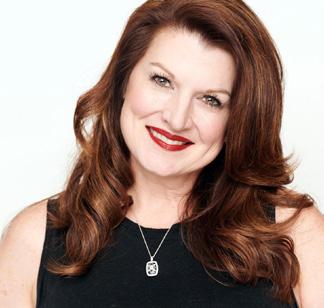





Few things are more discouraging than a stubborn stain, especially on a beloved article of clothing or expensive table linen. Holiday parties happen to be hotbeds for accidental stains—clothing or otherwise—so we asked Taylor Van Valkenburg for advice. Taylor is the Vice President of Operations at U.S. Cleaners, a family-owned dry cleaning business in Amarillo and Canyon.
While her company’s stain-removal approach relies on specific, commercial chemicals—which most consumers won’t have available—she says a lot of stains can be handled at home. One important note, though: “Always pay attention to the care instructions on your clothing,” Taylor says. “Any article of clothing labeled ‘dry clean only’ can be damaged by water.” For dry-clean only fabrics, don’t attempt the advice below.
Cloth napkins are particularly vulnerable to makeup stains during holiday meals. Long-lasting lipsticks can be a big challenge. Taylor suggests putting a paper towel below the napkin, then dabbing the stained area with rubbing alcohol. “The alcohol breaks down waxy or oily stains,” she says.

Another simple tool? The handy makeup wipe. They don’t just remove makeup from faces—they can also erase it from fabric. Ice and cold water can also work. “Take an ice cube and rub it on the

First, most importantly, never waste chocolate by spilling it on your clothing. If you can’t follow this critical step, then scrape off any extra chocolate. For a soft or melted chocolate like Nutella or a hot cocoa drink, let the item of clothing dry first, or put it in the freezer until it hardens. “After scraping, rinse it under cold water and try to get as much of the chocolate out as possible,” Taylor says.
Soak it with a stain remover product then wash it in the hottest water allowed by the fabric. (See care instructions.) “If you still can’t get it all out, rewash it using a bleach that’s safe for that kind of fabric,” she says.
Maybe it was a juicy hamburger. Maybe you forgot to wear your apron during Thanksgiving prep. Either way, you’ve discovered an annoying grease stain on your favorite pants—or the nice tablecloth or cloth napkins. The longer you wait to address it, the worse it can get. “These stains can darken fabric over time, and once it dries, the stain will be a lot harder to remove,” Taylor says.
Start by blotting at the stain with a paper towel or napkin so you can absorb as much of the oil as possible. Then spray it with an enzymatic pretreat. As with coffee or wine, use your fingertips to rub in a dab of laundry detergent. A drop or two of dish soap may also help to loosen the oils. “Then launder it in cold water, and if you need to, repeat those steps before you dry it.”
Whether you knocked a pumpkin-spice candle off the counter or were overzealous at the Christmas Eve service, wax stains can certainly diminish holiday cheer. Address it by letting the wax harden, then use a dull knife to scrape off any extra surface wax. “Then take clean paper towels and put the stained fabric between them,” Taylor says. “Press it with a warm iron on low and non-steam. As the wax melts, the paper towels absorb it. When they do, replace them so you don’t end up transferring the stain somewhere else.”
After this step, put the stain facedown on another set of clean paper towels. “Sponge it with a prewash stain removal product and then blot it with paper towels,” she says. Let it fully air dry before running it through a usual wash cycle. Check that the wax stain is gone before drying.
These plant-based stains are some of the most common. For washable fabrics, Taylor says to start by flushing the back of the fabric with cold water. These are water-based stains, so added water will help dilute it. Blot with a clean cloth or paper towel, then add water again. After the blotting process, apply a laundry enzyme presoak or pretreat, like the popular products made by Biz or OxiClean.
“After that, we recommend you actually use your fingers to rub laundry detergent into the stain,” she says. “Launder it with warm water—the warmest the label allows.”
Repeat this process until the stain is gone.

We’re not going to ask how you got blood on your clothing, nor are we making assumptions. But to remove it, act fast before the blood dries. Start with a familiar process from this feature: Flush with cold water to get as much of the blood out as possible. Then spray with an enzymatic pretreat, and massage some laundry detergent onto the stain.
Repeat this as necessary. “The important thing is not to put any blood-stained article of clothing into the dryer unless you’re sure you’ve gotten the stain out,” Taylor says.
When dropping off clothing with a dry cleaner or professional laundry service, be sure to let them know about certain stains. “Oil and grease stains are very difficult to get out with water-based solvents, so it’s always better to not pretreat those,” Taylor says. “Make sure to let the front counter staff know what the stain is so that we can treat it correctly the first time.”
Some stains are invisible, and don’t appear to the naked eye until after the professional cleaning process. These include juice, which may be mostly clear until the heat of cleaning makes the sugars or tannins oxidize faster. The same applies to beer and wine, as well as soft drinks. In these cases, seemingly “unstained” fabrics can come back looking much worse. “Definitely let the front counter staff know of those stains before cleaning and exposure to heat,” she says.
 PHOTOS BY ADAM BAKER
PHOTOS BY ADAM BAKER
Strolling the hallways of West Texas A&M University, Evan Guerrero doesn’t look much different from your average student. Sure, he might attract attention with his confident good looks, his long, silky hair, or his personal-trainer physique. Your eyes might even be drawn to his sharply designed T-shirts, with eye-catching logos reading “Quantum Mechanics” or “Electromagnetism”—T-shirts that are part of the ever-evolving brand that is “Evant Horizon.”
What would not be immediately clear is that this bright-eyed young man is a rising star in the dual worlds of astronomy and social media, an assured content creator with more than two million followers on TikTok.
In truth, it’s almost unfathomable how rapidly Evan Guerrero’s star has risen. In the way that a young Neil deGrasse Tyson took the astronomy world by storm a generation ago, Evan Guerrero seems poised to do the same—and for many of the same reasons. Rising to fame in the 1990s, Tyson didn’t look or sound like our collective idea of an astronomer; there were no pocket protectors or coke-bottle glasses, no endless computations on dry-erase boards. Instead, here was a funny and engaging Black scientist from the Bronx, cracking wise about red dwarfs and solar flares.
Like his hero Tyson, Guerrero breaks the old-school astronomer mold. Long-haired and Latino, hailing from an out-of-the-way city on the High Plains of Texas, fit and muscular, Guerrero has gained prominence for his irreverence and charm. Oh, and did we mention how funny he is?
Sometimes, it’s the smallest decisions that have the biggest impacts on our lives. For Evan Guerrero, that fateful decision came in the form of an online purchase. It was 2014, and he was working as a grocery sacker at Market Street, earning his own money for the first time in his life. In the evenings, the high schooler had become hooked on a PBS documentary series about the universe, Cosmos: A Spacetime Odyssey, hosted by Neil deGrasse Tyson.
During the day, while filling paper-or-plastics with egg cartons and cereal boxes, Guerrero found his thoughts returning to outer space. “Watching Cosmos,” he recalls, “there was an immediate thing that I could feel, this connection to astronomy, and to astrophysics in particular. It just drew me in.” That’s how, in an impulsive moment of online shopping, he spent some of that newly earned money on a
BY JONATHAN BAKERtelescope—a purchase that would change his life forever. “It was just a spur-of-the-moment purchase. It was on sale, and I figured, why not? It might be cool.”
Looking up at the moon through his new telescope, then at Jupiter and the rings of Saturn, Guerrero felt himself drawn to the ineffable splendor of outer space. In some ways, the majesty of the cosmos echoed a longing within him that had always been there. “I don’t know what you would call it,” he explains. “I guess you could say it’s a top value in my life. Beauty. I really do find the universe, astronomy, and nature in general, just to be just overwhelmingly, breathtakingly beautiful. I think that’s what I connected with at that time. It’s just the vast expanse of space, the infinitude—the overwhelming awe of it. That really captured me.”
After high school, Guerrero made another fateful decision: He chose to take a couple of years off from school so he could travel. He always had a sense that he would go to college, but he wasn’t totally sure what he’d study. Guerrero has myriad interests outside of astronomy, including physical fitness—he currently works as a personal trainer at Verdure, a health club in southwest Amarillo— and he wanted to simply let himself be for a while, to travel to some national parks and let his future develop at its own pace.
He’d also always had a sense that he would attend West Texas A&M, and that’s where he eventually enrolled at the conclusion of his gap years. Even though WT is not as renowned for its astronomy curriculum as it is for, say, agricultural sciences, Evan found himself drawn once again to studying the stars. “I was thinking, what can I dedicate myself to that seems like one of the grandest endeavors that I could embark upon? Studying the universe, and really understanding nature, just seemed like it to me.”
He knew the astronomy path would be arduous, but he wasn’t deterred. From the beginning, Guerrero has applied what he calls a “growth mindset” to his academic career—a concept he learned from the writer Carol Dweck. The idea has held the young scientist in good stead, bolstering him when he felt overwhelmed or when imposter syndrome began to creep in. “Growth mindset really has changed my life. This idea that you can improve on anything. You can learn anything. It’s not about being naturally smart. It’s just about a dedicated pursuit, knowing that you can improve, and just carrying that with you. You might not be good now, you might not be a natural, but if this is your interest and you like to pursue it, then you can get good at it.”
WT undergrad Evan Guerrero has amassed 2M followers on TikTok, and he’s poised to be astronomy’s next superstar

Around this time, another of Guerrero’sinterests began to tug at him. The nascent astronomer has always had an interest in education, and he began to wonder how he might share with others some of the knowledge and enthusiasm he felt about the cosmos. In another bit of kismet, his sister introduced him to the social media platform TikTok, then exploding in popularity. Guerrero saw possibilities in the platform, and he decided to try his hand at making a few funny and informative videos about astronomy.
His first few TikTok outings were a bit clumsy, as he tinkered with various approaches and learned to create and edit smooth videos. But he didn’t give up; on the contrary, he made two or three videos a day for several months without gaining much traction. Eventually, however, one of those videos did take hold. Big time.
Guerrero recorded a mock dialogue about the speed of light, a conversation in which he played both parts—a “genius” character and an interlocutor who is befuddled by astronomy’s mind-bending ideas. Guerrero went to sleep, not giving the video much thought. When he
woke up the next morning, his phone had exploded with notifications, and his entire world had changed literally overnight. His new video had garnered five million views in a few hours.
That first speed-of-light video, which itself seemed to explode at lightspeed, would be the first of many to go viral. “It’s funny,” says Guerrero, “most of my biggest videos all have to do with the speed of light. ‘Is the universe expanding faster than the speed of light?’ That one has 15 million views. I have one called ‘What’s the speed of dark?’ That one has 20 million views. Another one was, “What’s the speed of gravity?’ That one had 15 million, too.”
It wasn’t long before the astronomy world took notice. Guerrero started getting approached by various science companies who were hoping to sponsor him. Today, the young scientist is contacted constantly by companies interested in engaging with Guerrero’s online audience. Guerrero remains conscious of his brand, though, always reluctant to seem like he’s fallen prey to gross commercialism.
With that said, some offers seemed like a perfect, organic fit. One such opportunity came from Northrop Grumman, an aerospace

THE THING I WANT TO GET ACROSS IS THAT THIS STUFF, EVEN THOUGH IT MIGHT SEEM RESERVED FOR THE GENIUSES AMONG US, REALLY ISN’T. IT’S JUST ABOUT PERSEVERANCE. IT’S ABOUT STAYING DEDICATED.
GUERRERO’S FUNNY AND INFORMATIVE VIDEOS ABOUT ASTRONOMY HAVE GARNERED MILLIONS OF VIEWS ON TIKTOK.
enterprise instrumental in the construction of the James Webb Space Telescope. The largest optical telescope in outer space, the Webb Telescope regularly captures photos of such stunning beauty that they almost beggar belief. Guerrero leapt at the chance to be connected with such a monumentally important project.
Networking opportunities like that one show just how thoroughly and impressively Evan Guerrero has set himself up for future success. An undergraduate at a small state university in West Texas, he’s already in contact with some of the most powerful forces in the aerospace industry—and all thanks to the power of social media.

These days, Evan Guerrero isn’t seen as often in those WT hallways. Most of his classes occur online, as the university doesn’t offer the comprehensive array of classes Evan needs to complete an astronomy degree. The young social media phenom has yet to apply to grad schools, but it won’t be long until he takes that next step. Ultimately, he plans to obtain a PhD and make a life of educating people about astronomy.
It might seem as though Guerrero’s path has been comparatively easy, or even predestined. That’s far from the case. “Growing up, I was never some math wizard,” he explains. “I was never really into STEM or into logical things. In fact, I would say my strengths, even to this day, are not in mathematics or complex logical thinking. My natural strengths are in things like writing and being creative.”
Guerrero is careful to stress this point; he wants young people in the Panhandle—no matter what their passion is—to know that success is possible if you keep growing and learning in small ways every day. “The thing I want to get across is that this stuff, even though it might seem reserved for the geniuses among us, really isn’t. It’s just about perseverance. It’s about staying dedicated.”

“Well,” says Guerrero, “obviously Palo Duro Canyon is a great place to go for stargazing. But it’s funny— where I actually live right now has been a great spot for it. It’s outside the city limits, near Tradewind airport, in that area. Even where my parents live now is really incredible, by McCormick and Rockwell Road [between Amarillo and Canyon]. It’s in the middle of nowhere, and those are obviously the best spots to stargaze. Basically, just get outside of town.”
Listen to Evan Guerrero‘s interview on the Hey Amarillo podcast.
Of the United States population, around 19 million Americans are veterans of the U.S. Armed Forces. That’s nearly 7 percent of the population. The Amarillo/Canyon area boasts a similar number of current and former military personnel.
And while the share of Americans with military experience has been declining over the past 50 years, veterans still play a major role in the life of our city. With the approach of Veterans Day on November 11, Brick & Elm is highlighting a few local executives, educators, business owners and other community leaders who served our country—and who continue to draw on the skills and lessons they learned during their military careers.
As always, we are incredibly grateful for their service.
JARED MILLER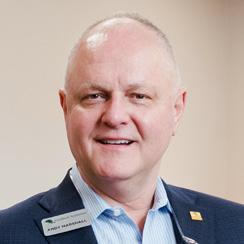

• U.S. Navy and Navy Reserve, Lieutenant/Intelligence Officer (2004-2015)
• Worked for USN Pacific Command (PACOM), deployed to Iraq A naval intelligence officer, Jared Miller worked in a variety of counter-terrorism capacities, including more than a year working with the interagency, National Security Council-directed Iraq Threat Finance Cell (ITFC).
“I believe that my service in the Navy has affected how I lead and do my job more than anything other than possibly the Bible,” Miller says from his office at City Hall. He adds that the Navy core values (Honor, Courage and Commitment) continue to influence his perspective as Amarillo’s City Manager. “We are taught to have a relentlessly positive mental attitude, to be mentally tough, to lean into challenges, to facilitate leadership and initiative at all levels and ranks. All of those have contributed significantly to who I am today and how I serve my community and team.”
PRESIDENT AND CEO, FIRSTBANK SOUTHWEST
• U.S. Air Force, USAF Security Forces (1979-1985)
• Permanent duty stations in Florida, Washington, and England. Deployments to the Greater Caribbean Basin, Central and South America, Middle East, Africa, Europe, and East Asia.
• U.S. Army, Squadron Border Officer (1985-1990)
• Stationed in Amberg, Germany.
While serving in the Air Force, Andy Marshall oversaw air base ground defense and ground combat operations, which led to deployments all over the world. Later, as a Germany-based border officer for the U.S. Army in the waning years of the Cold War, he managed day-to-day operations and intelligence along more than 100 miles of the Iron Curtain. Marshall says learning to lead diverse groups of professionals is a strength that continues to inform his work at the helm of FirstBank Southwest. He also draws regularly from the decision-making process he learned in the military. “While decisions can be hard, the process is simple and repeatable, regardless of the weight of the decision to be made,” Marshall says.
• U.S. Air Force, Senior Airman/Sergeant (1988-1992)
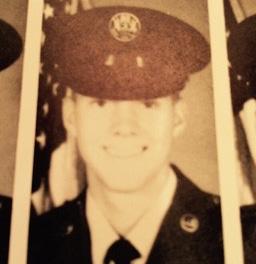
• Stationed at Brooks Air Force Base (San Antonio, Texas) and Wright-Patterson Air Force Base (Dayton, Ohio).
In addition to helping him grow and mature after leaving the safety of Amarillo, Greg Welch says his Air Force experience introduced him to his career path in environment, safety and health—work he’s still doing 34 years later. It was also instrumental in his coming out. Welch, who is gay, says the military helped him come to terms with his sexuality when he was encouraged to enter an officer’s program toward the end of his enlistment. This would have required a multi-year commitment during a period marked by the military’s “Don’t Ask, Don’t Tell” policy regarding same-sex orientation. “In 1990, a military career and being openly gay were not two things that could go together—especially with the political climate that lead to the passing of Don’t Ask, Don’t Tell,” Welch says. “So I got out of the Air Force and came out to my family and friends, and I have never regretted either decision. I am extremely thankful that times have changed and LGBTQ service members can now serve our country openly as their true selves.”
OWNER, AMARILLO LAND SERVICES
• U.S. Navy, Aviation Structural Mechanic Safety Equipment Petty Officer, 2nd Class (2002-2007)
• Stationed at Naval Station Rota in Spain, with detachments to Italy, Greece, Bahrain, Qatar and Curacao.
As an aircraft mechanic, Remmington Holt accompanied naval aircraft all over the world with VQ-2, a U.S. Navy air reconnaissance squadron, until the squadron’s home port changed in 2005 to the air station on Whidbey Island, Washington. “The military instilled structure in my life,” Holt says today. Among other things, that structure includes his personal insistence on being on time. (“It drives my wife crazy,” he says, “but if you arrive right on time, you’re late.”) His experiences also taught him the importance of teamwork and integrity in the workplace. “In this current market, I have had to learn a new trait that wasn’t needed with leadership in the military, and that’s empathy,” he says. “The best trait from the military that drives me today is attention to detail.”
DR . RICHARD JORDAN• U.S. Air Force, Major (1976-1980)
• Stationed at Wilford Hall Medical Center, San Antonio, Texas.
• Chief, James H. Quillen VA Medical Center (1987-2007), Johnson City, Tennessee
After serving as a physician at the Air Force’s flagship medical facility, Dr. Jordan accepted a position as Chief of the VA Medical Service at the enormous James H. Quillen VA Medical Center in Johnson City, Tennessee, where he served veterans for the next two decades. In 2007, he became the Regional Dean of the School of Medicine at the Texas Tech University Health Sciences Center at Amarillo and is also a physician staff member of the Thomas E. Creek VA Health Center. “My military experience and my time in the VA helped me to develop resilience and discipline in all aspects of my life,” Dr. Jordan says. He was inspired by his uncle, Corporal William H. Jordan, a B17 tail gunner who died in World War II after parachuting from his plane over the English Channel. “My Uncle Billy’s courage and his sense of duty is representative of so many American soldiers who gave their lives protecting our freedom,” he says.
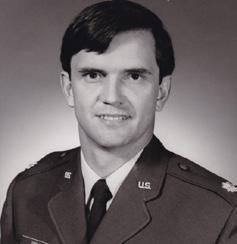

• U.S. Air Force, Information Specialist (1989-1993)
• Stationed in Ramstein, Germany, and Tampa, Florida.
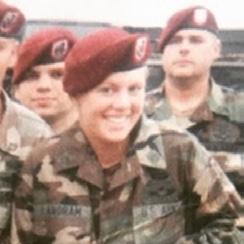
In more than two decades with Amarillo National Bank, Amy Henderson has supported local businesses as a loan officer. In her Air Force career, she supported American forces during Operation Desert Shield and Desert Storm. She was part of the 86th Communications Squadron at Ramstein Air Force Base and also spent time at Riyadh Air Force Base in Saudi Arabia. “As an Information Specialist, I worked directly with directors and leaders. I was mentored on how to be a leader,” she says. Through the example of others, she learned how to persevere during setbacks, how to retain focus on long-term goals and how to be flexible in new environments. “I learned that service to others helps the whole organization towards the mission,” she says. “I valued my time in the military and learned life lessons and skills that help shape me into the person I am today.”
NUTRITIONIST, HEALTH COACH AND YOGA TEACHER, ENLIGHTENED HEALTH CENTER
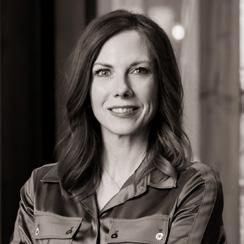
• U.S. Army, E-4 Specialist Parachute Rigger (2001-2003)
• Stationed at Fort Bragg, North Carolina.
As a trauma-informed yoga and meditation instructor, Jennifer Landram has used those practices to manage high-functioning anxiety and depression for the past decade. “My experience has helped me to have a deeper understanding as to why so many veterans are homeless or have alcohol or substance use disorders,” she says. The military also instilled in her a discipline of daily exercise, which led her down the path of becoming a fitness instructor and getting a master’s degree in clinical nutrition. Landram is the founder of the annual Amarillo Yoga Festival, a yearly fundraiser for Amarillo Housing First (AHF).
“Through the miracle of my own healing journey, I have made a career out of practicing what has helped me find health and happiness,” she says.
• U.S. Navy, Chief Petty Officer (1999-2019)
• Stationed in Virginia, Oklahoma, Washington, San Diego and El Paso, with deployments in support of Operation Enduring Freedom and Operation Iraqi Freedom.
“I served in a myriad of locations and positions throughout my 20 years in the Navy,” says Jason Tillery, from clerking on the USS Elrod in Norfolk, Virginia, to serving as the Personnel Officer and Ship’s Secretary on the USS Harpers Ferry, homeported in San Diego. He retired in 2019 as the senior Navy Liaison Officer at the Military Entrance Processing Station (MEPS) at Fort Bliss in El Paso. “One of the greatest things I learned in the Navy was how to work with and lead people from a diverse background,” Tillery says. “I served with men and women from every state in the Union, foreign nationals from dozens of countries who emigrated to the United States and now serve their adopted home with zeal, determination, and love for their new country. I served with women in a predominantly male-driven industry that were every bit as qualified as their male counterparts— and, in many cases, some of the very best and hardworking sailors that I served with.”
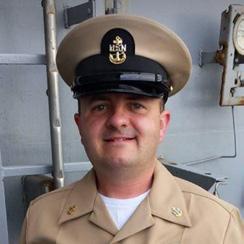
• U.S. Navy, Ensign (1966-1969)

• Stationed aboard the USS Guadalcanal, based in Norfolk, Virginia. Deployed throughout the Caribbean.
After earning an undergraduate degree and MBA from Baylor, Howard Smith enrolled in Officer Candidate School for the Navy, achieving the first officer rank (Ensign). He then held critical positions on the USS Guadalcanal, including oversight of multiple supply divisions. Smith was onboard in 1966 when the Guadalcanal recovered the Apollo 9 astronauts and capsule after its ocean splashdown near the Bahamas. He says his years in the Navy were extremely valuable as the first real-world experience he received after his college education. “The most important in the list of things that I learned was how to work with people,” he says. He learned to listen, delegate, prioritize and respect the chain of command—skills which have been critical during his current service to the city, as well as past stints on the Wayland Baptist University Board of Trustees and the Amarillo ISD School Board.

• U.S. Air Force, Captain (2001-2006)
• Stationed in San Diego and Colorado Springs. Deployments to Saudi Arabia and Iraq.

A graduate of the Air Force Academy, Matt Welch served as a weather officer during his career, supporting B-1 bombers and helicopters in a variety of settings. “My military experience taught me how critical it is to act with integrity. Not because of honor or morality—although these things are definitely important—but because it’s the only way to succeed,” Welch says. “Without a culture that values integrity, we cannot rely on one another to share a true common goal, be it military, civilian or corporate in nature.” It also helped him learn how to plan and problem-solve under intense pressure, whether making weather forecasts during a rescue mission in Iraq or brewing beer in Amarillo. “You have to take your time, work through your progressions, make an informed decision, then follow through without hesitation or doubt,” he says.

ASSOCIATE BAND DIRECTOR, CANYON HIGH SCHOOL
• U.S. Army and Army Reserve, Major (1982-2005)
• Deployed in Operation Desert Shield/Storm and Operation Iraqi Freedom, as well as to Central and South America.
After receiving his commission from Texas Tech ROTC, Luis Hernandez spent 22 years in the Army Reserve as a member of the 413th Civil Affairs Battalion stationed in Lubbock. Hernandez says his experiences serving all over the world continue to influence his job as a high school band director, whether he’s showing a student how to play a particular musical passage on clarinet or saxophone, or showing them positive examples of leadership. “When mentoring our student Leadership Team, we emphasize the value of being part of something bigger than oneself and the concept of delayed gratification through hard work,” he says. Hernandez’s students are all aware he’s a United States veteran. “They know that I’m very proud of my service,” he says.
Last month, members of the Molly Goodnight Chapter of the Daughters of the American Revolution (DAR) delivered several hundred “dignity bibs” to the 80 or so residents of the Ussery-Roan Texas State Veterans Home. This skilled nursing facility is available for veterans and their spouses, along with Gold Star parents who need long-term care.


A dignity bib is a used, collared dress shirt with the back and arms removed. The bib is then fastened around the neck. “You’ve got these veterans, like any man or woman in a nursing home, who sometimes have to wear a bib to eat,” says Shari Morris, chapter regent of the volunteer women’s service organization. “That would be kind of demeaning to me. But when you put these on, it looks just like the front of a shirt. It adds dignity.”
With more than 80 residents eating three meals a day, the DAR group assumed the facility would need at least 240 bibs and delivered well above that number.
“I’m overwhelmed,” says Lee Persefield, on-site representative of the Veterans Land Board at Ussery-Roan. “What a wonderful opportunity for our guys to be spoiled just a little bit more.”
The bibs were just one of several service projects the chapter takes on throughout the year. Morris says the DAR group will likely continue making dignity bibs for veterans and is accepting donations of clean, button-up shirts for men and women. The chapter is also participating this holiday season in the Wreaths Across America program, gathering
sponsorships ($15 per wreath) to place Christmas wreaths on the headstones of the 6,000-plus veterans laid to rest in Llano Cemetery. Sponsor a wreath at wreathsacrossamerica.org/ TX1033.
HEAD OF SCHOOL, ASCENSION ACADEMY
• U.S. Army, Sergeant (2000-2004)

• Deployed to Afghanistan and Iraq, stationed in Fort Campbell, Kentucky.
An infantryman in one of the Army’s most recognized divisions, the 101st Airborne Division, Tim Oditt saw combat in both Iraq and Afghanistan. Today, he’s the Head of School at Ascension Academy, a private college-prep academy, and says lessons learned in the Army impact his leadership every day. “Perhaps the most important lesson is to always take care of your people. That applies to my staff and students now,” he says. “Attention to detail in planning was also drummed into my head and I use that daily and when planning strategically for the school.” Oditt’s time in war zones also has given him valuable perspective. “What may look like a bad day [today] really isn’t,” especially compared to life-or-death situations on the battlefield. “I try to keep that perspective and remain optimistic no matter what the circumstances.”
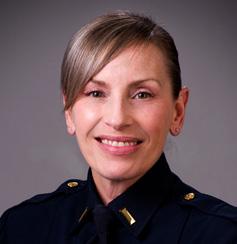
• U.S. Air Force, Law Enforcement Specialist (1991-1993)
• Stationed in Bitburg, Germany.
As a law enforcement specialist (A1C) during Operation Desert Shield and Desert Storm, Barbara Ferrara patrolled the Bitburg Air Base, home to the Air Force’s 36th Fighter Wing and a deployment base for F-15s. In that capacity, she responded to service calls and performed basic investigations. Ferrara says those experiences propelled her directly toward her work today at WT, where she has served for more than 12 years. “The structure and discipline within the military absolutely helped prepare me for law enforcement service, which is structured very similarly,” she says. “I never really learned how to study properly when I was in high school, [but that] is something I absolutely learned in the military. That has followed me throughout my career and has helped me excel in law enforcement.”
On Saturday, Nov. 12, at the United Citizen’s Forum at 901 N. Hayden St., Amarillo residents will gather for the Veterans Honor Banquet. Organized by Hobert “Gunny” Brown—a Dalhart native who served more than two decades in the Marine Corps—the event celebrates veterans from the North Heights neighborhood, including the late Charles E. Warford, the late Rev. Nathaniel Cantly, and Edward Owens.
Owens, 96, is believed to be the oldest surviving Black veteran in Amarillo.

“It’s important to me that we give back to these veterans,” says Brown, who was wounded during Operation Desert Storm in the early 1990s. “As younger veterans, we realize we wouldn’t be at this point in our careers if not for the sacrifices they made.”
Edward Owens was drafted into active service in early 1945, during what would be the final year of World War II. He left his family in East Texas for Japan, where he served the U.S. Army as a truck driver, hauling supplies back and forth from the port in Tokyo to Yokohama. He later served in the kitchen staff on an Army base, managing a cook team of Japanese nationals.
“Uncle Sam took good care of me,” says Owens of his year in the military. “It was one of the best things that ever happened. I didn’t have to worry about what I had to eat or where I would stay. It made a man out of me.”
After an honorable discharge, Owens returned to Texas and
went on to marry and raise a family in Amarillo. He spent decades working for Gunn Brothers Stamps and, later, began serving as a deacon at Greater Mount Olive Baptist Church. Church members know him today as Deacon Owens, and he still drives himself to church every Sunday. Twice a widower, he credits his longevity and health to “living that clean life” and obedience to God.
“I’ve done what the Man Upstairs told me to do and I’m still doing it. When you follow in His footsteps your life will be sweet,” he says.
Brown says Owens is a well-respected mentor in the community. “You wouldn’t believe he’s 96,” he says. “He’s still active in church and sits down with young people and talks to them. A lot of these older vets don’t want to talk about their military experience, but he has opened my eyes to what he went through versus what I went through.”
While Owens was hesitant to reveal too many details about World War II, Brown understands his friend’s service positions were limited because of race. “For me, I could choose any job I wanted, but Mr. Owens couldn’t even eat with fellow white soldiers,” Brown says.
Veterans like Owen are often silent heroes, says Melodie Graves, board president of the Amarillo United Citizens Forum. “They aren’t always recognized for their accomplishments. We want to honor and celebrate them,” she says. “They’ve served our country and they serve our community.”
The Veterans Honor Banquet will be catered by Delvin’s with KGNC’s David Lovejoy, another local veteran, as the speaker. The evening banquet is open to the community at $35 a person.
BY JASON BOYETTThe bandana, the equalizer of fashion, defies stereotypes.
Bandanas have never been drafted into the culture wars. No one questions them, accuses them or suspects them. Bandanas have been worn by gangsters and bandits and still aren’t threatening. Roy Rogers and Dale Evans accessorized freely with bandanas, but no one ever assigned purity to their neck coverings. They just look amazing, is all.
Essentially, we haven’t invested a lot of mental capacity in bandanas. In fact, the time it took to read the first paragraph of this article could be the most time you’ve ever spent thinking about them. The bandana and its storied past are regularly overlooked. Let’s change that.

Amy Sheets, an Amarillo-born fashion designer who now makes her home in New York City, is asking the public to consider the lowly bandana—arrayed in the splendor of Solomon—as a trendy way to dress up any outfit while celebrating our Western heritage. These aren’t just any dollar-store accessories. The intricate designs for Sheets’ bandana collection were created by the elderly Amarillo cowboy and renowned saddle maker, Bob Marrs. He just so happened to be her grandfather.
The idea for this authentic cowboy high fashion began in 2017, when Sheets launched a line of bandanas under the brand Marrs Makers at a bit-and-spur show. The designs were her interpretation of Marrs’ saddle work, but applied to cloth. The intricate, vegetal patterns, imported from the Middle East, also spoke the language of Texas cowboy. As has been the case with so many creative ventures of late, it took a pandemic to bring this garden to full bloom.
In March 2020, at the age of 93, Marrs was still working with leather. Age had slowed him down considerably. Sheets and her husband were visiting the Panhandle the week COVID turned the world upside down, and barely made it out of Amarillo. As the year
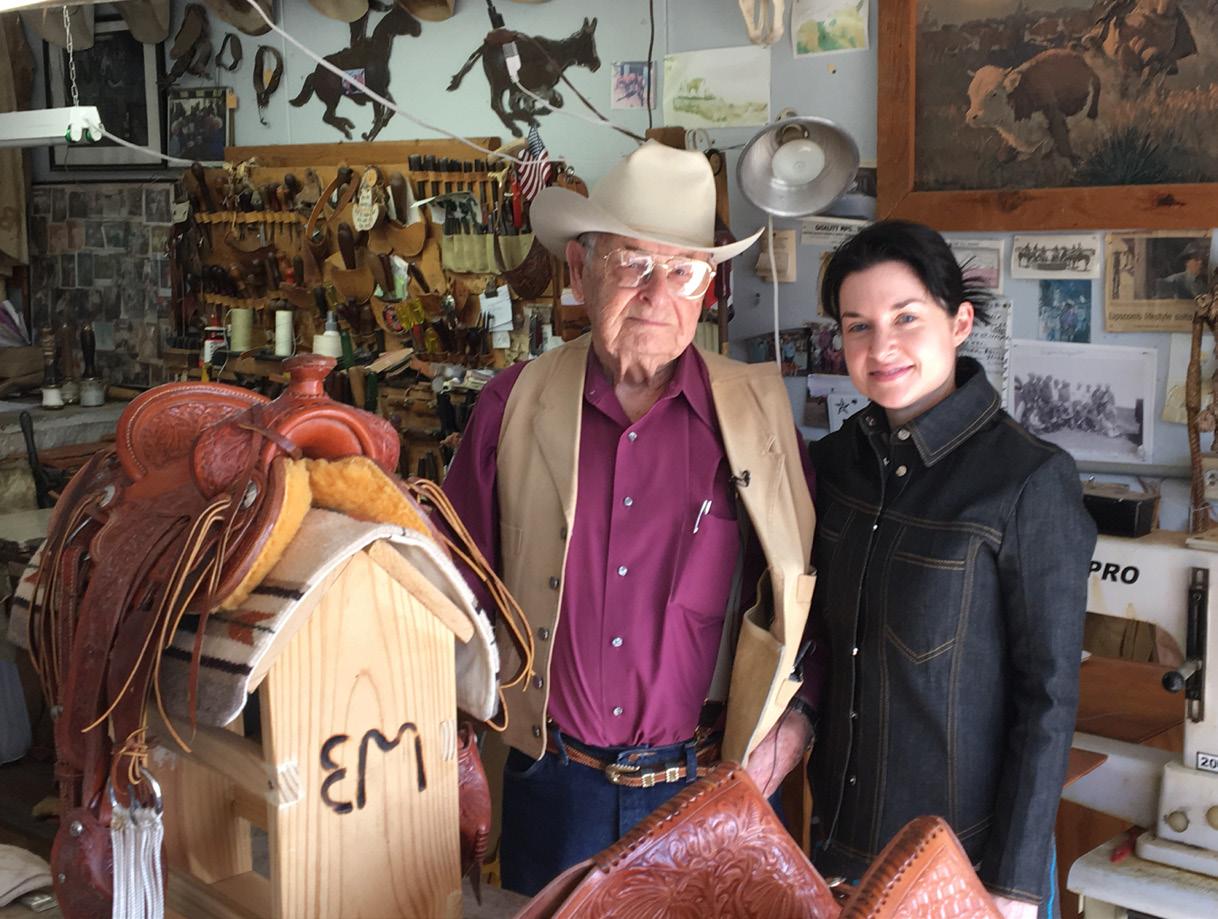
dragged on, Marrs’ movements became even more limited. His work slowed and his spirits began to sag.
“If he wasn’t working on something, he got really down, even though he was generally a positive person,” Sheets says. “We were thinking what would be a way for Grandpa to continue working on what he loves during quarantine and not get discouraged, a way to still draw and design his artwork when he did not feel up to making spur leathers. The answer was a new bandana totally about him.”
Not just about Marrs, but designed by Marrs himself.
Although Sheets and her grandfather were separated by 1,700 miles, they launched a unique, multigenerational collaboration over the phone, through the U.S. Mail and visits to Amarillo—unsure where it would take them. Upon Marrs’ passing in February 2022, just two days shy of his 95th birthday, an effort that began as a way to keep her grandfather’s spirits up found new purpose. It became a means to perpetuate the art and genius of the legendary saddle maker, this time on the canvas of a bandana.
Growing up in far northeastern Oklahoma, Marrs likely never envisioned he’d be designing fashion accessories in his old age. Cowboying was all he knew, working on ranches near his hometown of Delaware, Oklahoma, and later as far away as California. After his service in World War II, Marrs married Betty Lucas and the young couple started life together on the famed Waggoner Ranch near Vernon. It was here he started working with leather, and in 1951 the couple moved to Amarillo, where he got work with Stockman’s Boot and Saddle Shop. He and Betty eventually purchased the shop, renaming it Bob Marrs Stockman’s Saddle Shop.
In the coming decades, Marrs earned a wide reputation for beautiful, top-quality saddles that were popular with working
BOB MARRS AND AMY SHEETS IN THE SADDLE SHOPcowboys and cowgirls. He was recognized across the Southwest for his craftsmanship, earning accolades from the Academy of Western Artists in Fort Worth and the National Cowboy & Western Heritage Museum in Oklahoma City. But as much as anything, it was the service Bob and Betty provided that made a Marrs saddle so valuable. The couple were a team and the shop was their life.
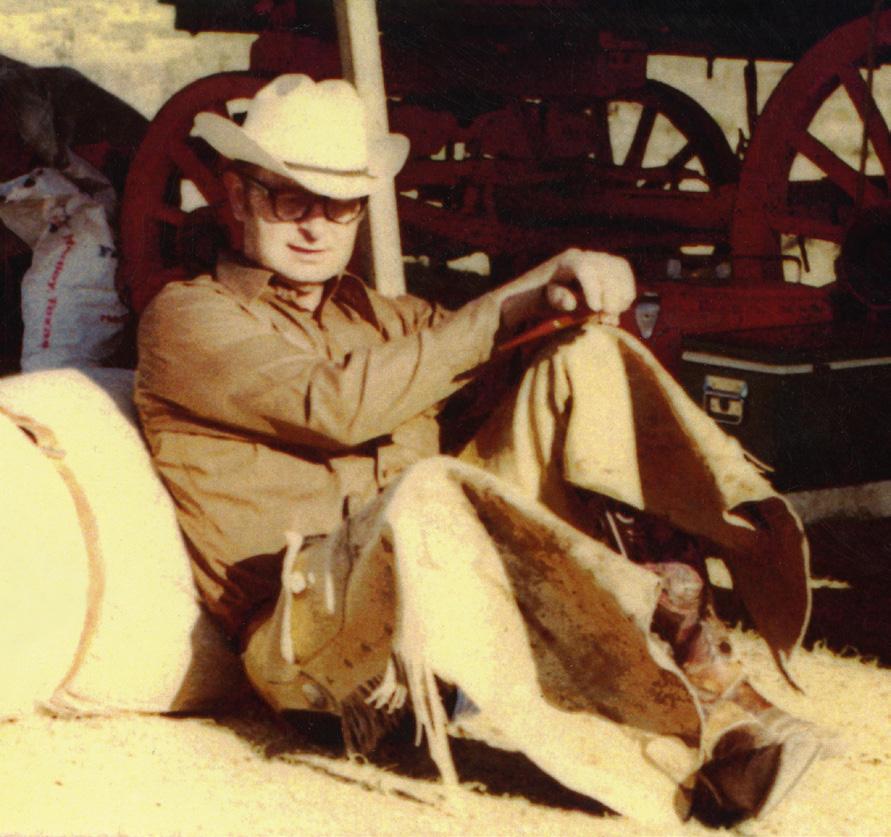
At one point Sheets remembers that her grandparents, in the early days, lived in the shop, which was located across from the Western Stockyards in east Amarillo. And because of the shop’s proximity to the stockyards, Bob and Betty were indispensable to the cowboys who worked there.
“They’d get a call before daybreak from a cowboy doing his job at the stockyards for an emergency repair or to replace some tack,” Sheets says. “The cowboys would call him because they needed that equipment and my grandparents saw it as a service to the community.”
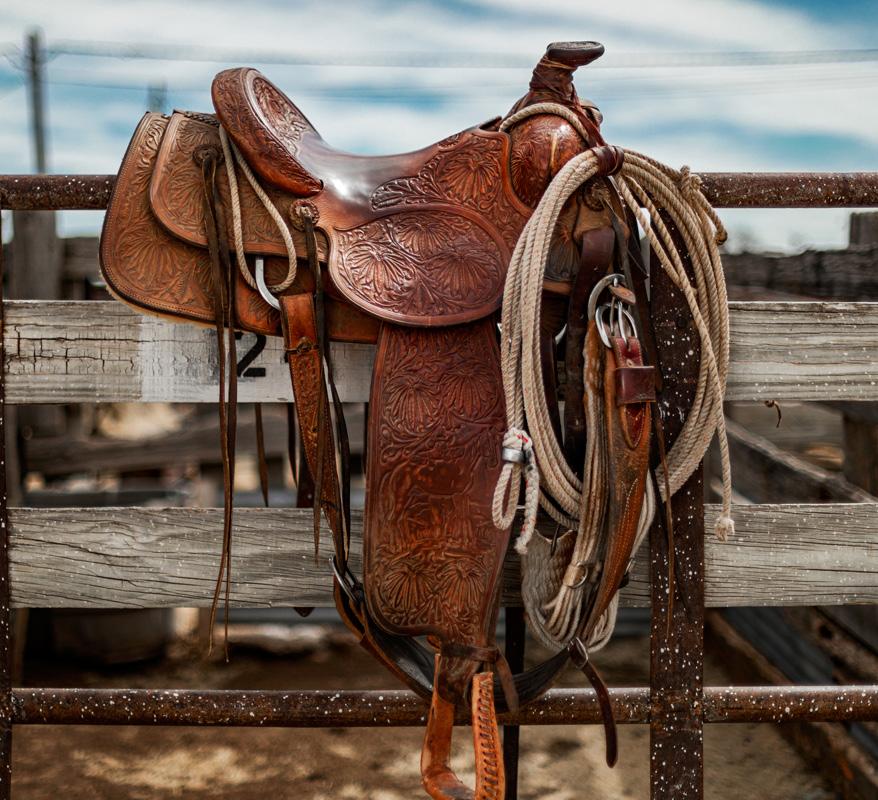
For Sheets, the bandana project is highly personal. It’s important to her that West Texas traditions are reflected strongly in the bandana designs.

“One of his great talents was being able to apply his creativity and craftsmanship to make something that was pleasing in form but also practical,” she says. “That was the hallmark of his work as a saddle maker, making something comfortable for both the horse as well as the rider.”
Drawing on his years of saddle making, Marrs created intricate oak leaf and floral patterns that are strikingly similar to the flowing, plantlike aesthetic of the traditional bandana, which is no coincidence.
Bandanas and Western saddles are not only visual records of the American West, but also tell a story of global trade patterns—and world conflict—that enriched Western design.
It may be surprising to some that Islam influenced the traditional bandana design. When the Moors invaded Spain in 711 A.D., they brought a holy aesthetic with them—intricately flowing vegetal design motifs, cleansed of the idolatry of graven images of humans and animals. The conquered adopted many of these tastes, and long after the Moors were driven out, the Spanish were imitating this style in art and architecture. They also imitated it in saddle design.
Spanish saddles made their way to Mexico, then to Texas by way of the cattle trade. The bandana bears these imprints of long-ago cultural exchanges as well. The word bandana is thought to have come from either the Hindi or Urdu languages and refers to a tied cloth. The familiar paisley patterns of a traditional bandana originated in Persia, where the khil’at shawl, often decorated in paisley, was a gift bestowed by royalty as a robe of honor. As trade increased between Europe and the Middle East in the 17th century, these Persian shawls were so desired that European textile manufacturers began producing knockoffs of their own, most notably in Paisley, Scotland.
The defining characteristic of paisley is the fluid teardrop shape the Persians called the buto, or flower. Sheets started the bandana design process with Marrs by copying butos and hollowing them out. They then arranged the hollow shapes in symmetrical patterns and sent Marrs stacks of the designs with directions to fill the voids inside the shapes, drawing on his artistic instincts—well-honed from years of hand-tooling saddles—to know what looked right and how something should be worn.
The design concept behind the first bandana in the collection,
BOB MARRSnamed the “Poinsettia-Paisley,” demonstrates Marrs’ knack for blending his unique artistry within a widely-known and useful product.
Once he completed his work, Marrs would send the renderings through the mail to New York, where Sheets adapted the designs in ways rarely applied to bandanas. This long-distance collaboration was neither fast nor simple, but in saddle making, something that takes time is going to turn out better. Bob Marrs applied this truth to his bandana design as well.

But time was not something that could be wasted, either. Sheets started the project with her grandfather when he was well into his 90s, and it was vitally important to tap into Marrs’ artistic marrow before time had run its course. Sheets remembers that Marrs worked through the designs quickly and precisely. When she returned to Amarillo in July 2021, she felt comfortable they were getting close to a finish.
Since her grandfather’s passing earlier this year, Sheets has refined the designs and produced prototypes on a tightly woven cotton material using a discharge press that applies the dye to both sides in one pressing. At first glance, the bandanas appear much like a traditional bandana, but the details reveal something special. A Bob Marrs saddle is often distinguishable by its poinsettia motif, another import from Mexico and a design element he began using in 1956 and carried through all his years of leathercraft.
The finished product is as much a work of art as it is an article of clothing, not unlike a Bob Marrs saddle: Both used and useful, it is also beautiful to behold.

“If someone decides they want to frame it, that’s wonderful,”
Sheets says. “But our intent—Grandpa and I talked about it—is when people wear something you’ve made, when someone is really experiencing it, it’s doing its job. So we hope people will want to wear it and see it as something special, but not so precious that if you’re sweating bullets or wiping your face with it, it’s not too precious. That is how Bob Marrs made things.”
In the months since Marrs’ passing, Sheets has been spending more time in Amarillo, developing partnerships with local groups and individuals to firmly establish the Bob Marrs bandana as an export of the community that inspired it.
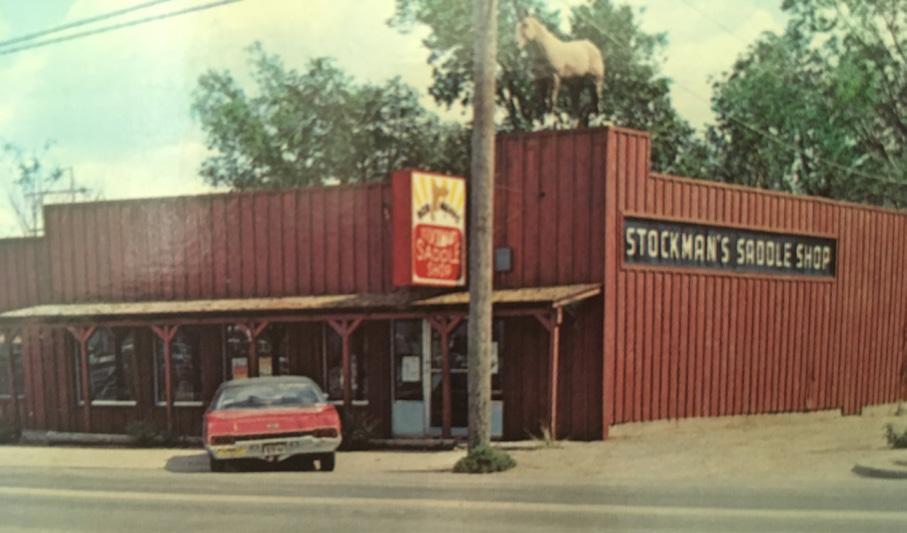
In full production, this bandana is the first to be sold through the Bob Marrs Saddle Shop Collection, which celebrates not only the resourcefulness of the American West but also its own kind of glamor. While it may be possible to purchase the bandana at area retail stores or pop-up events, the bulk of sales are currently online through marrsmakers.com/collections/bob-marrs-poinsettiapaisley-bandanas, as well as on Instagram and Facebook— @bobmarrssaddles and @marrsmakers
Sheets expects the bandanas to sell, not just because of their beauty, but also because her grandfather’s name is on them, a legacy of the artistry he left behind.
“In addition to being a cowboy and saddle maker, he was very much an artist. He was able to see from both perspectives, but it was not in his DNA to make something that didn’t work. He refined it until he felt like it was something he needed it to be,” she says.
In late November 2021, Sheets brought Marrs the latest iteration of the design and asked him what he might change, knowing he was always looking for a way to improve something.
“You know what,” Marrs said, “I think it’s perfect.”
BOB MARRS STOCKMAN’S SADDLE SHOP IN AMARILLO, CIRCA 1980S BOB MARRS WITH HIS SIGNATURE POINSETTIA HAND-TOOLED SADDLE IN HIS SHOP IN 1981ÒWhen people wear something youÕve made, when someone is really experiencing it, itÕs doing its job.Ó—Amy Sheets
Ten years ago, Elton Bradley, president and founder of the Northside Toy Drive, was driving around his neighborhood on a cold day when a group of children, standing at a bus stop, caught his eye. Some of them weren’t wearing coats. Right then, he decided he needed to do something for his community.


“It made me think about Christmas because it was wintertime,” Bradley says. “At the time, everybody wanted to have a Christmas party and what better way to tie it in than to bring a couple of gifts, have a Christmas party and at the same time be able to help out some kids.”
Bradley contacted his longtime friend and owner of Rain Premiere Sushi Bar and told her his idea. He invited around 25 of his friends to the party and asked them all to bring toys. The first year, they filled
half of a small motorcycle trailer with toys and gave them away at the North Branch of the YMCA, now Warford Community Center.
This year, 2022, marks the 10th anniversary of Amarillo’s Northside Toy Drive. What started as a small get-together between friends has grown exponentially into a city-wide special occasion. The organization has hosted its Black Tie Affair fundraiser at the Civic Center for several years now, cementing its status as Amarillo’s largest formal event. Bradley says people come from all over the U.S. to attend the Black Tie Affair.
This year, the event sold out in four days.
“The Black Tie Affair is dinner, dancing, casino games and cocktails,” says Allison Roberts, vice president of the Northside Toy Drive.
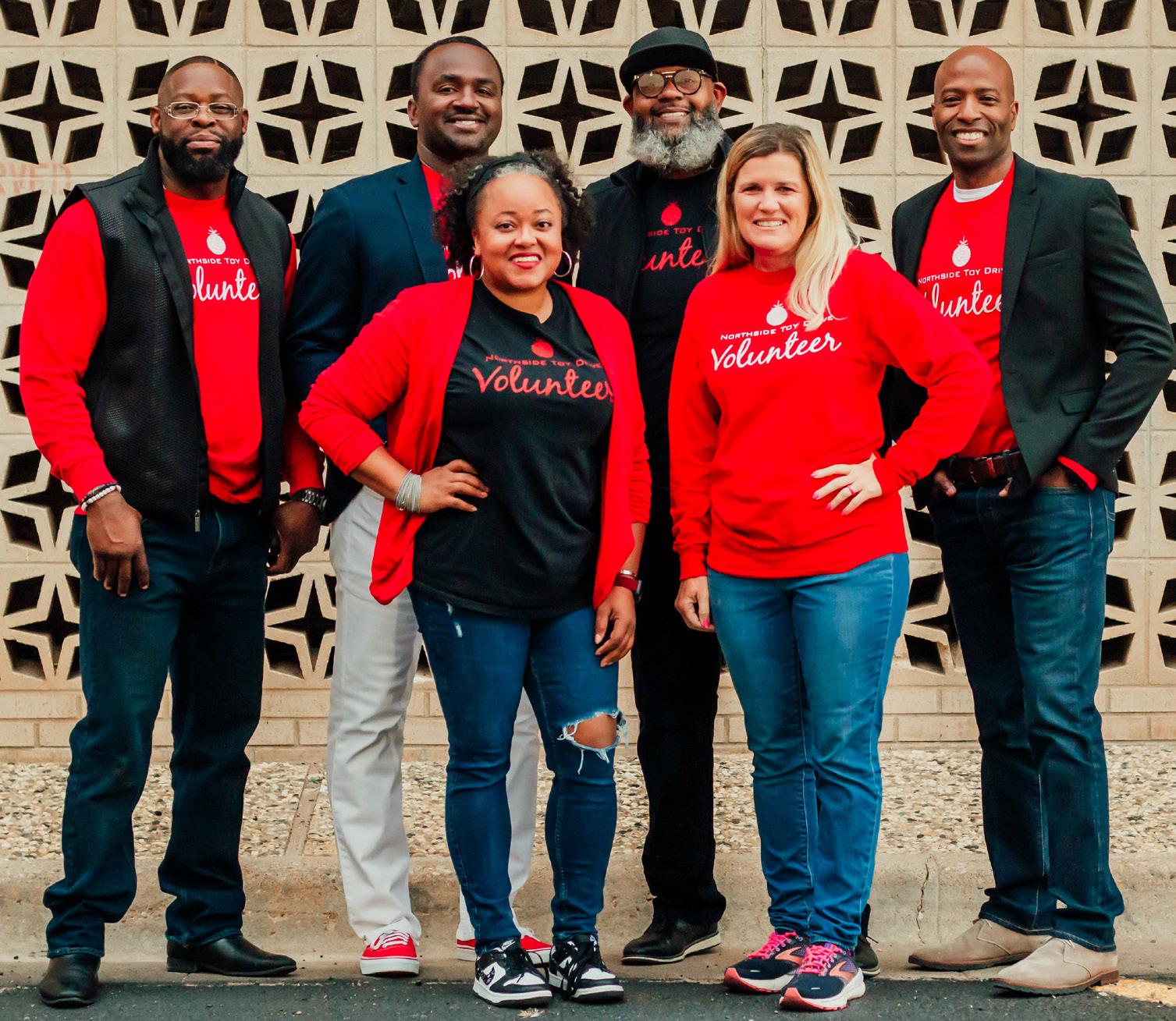 BOWDEN JONES JR.
ELTON BRADLEY
(L-R)
BOWDEN JONES JR.
ELTON BRADLEY
(L-R)
“We’re sold out of tables but people can still come. They can wear their dancing shoes and bring a toy, enjoy the buffet and come and celebrate with us.”
For the second year in a row the Brass-A-Holics and DJ Cleve have agreed to perform at the event. “I’ve never been to the Grammy’s but I feel like this would be a Grammy after-party,” Bradley says. “It’s just a beautiful night, full of energy, full of love, full of laughter and people coming together. It’s just an uplifting experience.”
Bradley says the Black Tie Affair is one of his favorite nights of the year, but he thinks the best part of the toy drive is the giveaway. “I like the party more than the average,” he says. “But that next day, when we go all night until midnight, and then we load these moving trucks and diesel trucks and head over to the gym, there’s a line at 8 a.m. waiting for us to give away something at 1 p.m. You see blocks of people lined up. These kids get to experience a real shopping spree at no expense, other than patience. So, those are tear-jerking moments when you see a kid light up.”
Over the years, the organization has given away toys, clothes, Christmas dinners, goodie bags, gift cards, books, shoes and scholarships. Bradley estimates that the organization has helped more than 15,000 children experience the joys of Christmas. “That’s what Christmas is about. We think about gifts and sometimes people forget about the true meaning and that’s Christ,” Bradley says. “What He has in our life and the purposes He has. That’s to give hands up, not hands out. Not to look down on but help each other. It just reinforces what people can do when they get together, the power people have when they put all their resources in one direction.”
Prisella Arreola and her children have attended the giveaway a few times. “My kids love to go and see all the toys they give out,” she says. “They get to pick a toy without me having to be like ‘No, I can’t get that toy right now,’ so they love that.”
Arreola reached out to the Northside Toy Drive on Facebook not long after Thanksgiving in 2018, when a fire destroyed her home. “I was devastated because I had already bought all of our Christmas gifts for the family. So, we lost it all,” she says.
The same day Arreola sent her message, Bradley called her and without hesitation, told her not to worry, asked her how many children she had and what they wanted for Christmas. “My son wanted a bike and my daughter was still small, she was about 15 months old. I think it is for kids 2 and up but they still got her a kitchen and some stuffed animals. I was grateful for them. I am waiting for my kids to get a little older so we can go and volunteer so they can feel what it is like to help others. I know that my kids would love it,” Arreola says.
Members of the toy drive are adamant that the children choose what they want for Christmas. “We have more toys than we know what to do with,” says Bowden Jones Jr., secretary of the Northside Toy Drive. “If you’ve never attended and you show up, you’ll see that the entire gym floor is basically covered in toys and bikes.”
As soon as it’s a child’s turn to choose their gift, a toy drive volunteer takes them around the winding sea of toys, while their parents meet them after they’ve chosen exactly what they wanted.
“If they want a bike and there are some available, then they are
certainly welcome to them,” Roberts adds. “Sometimes we have kids who only want something small and Mom and Dad are screaming, ‘Hey, you need to pick this,’ and they’re just so thankful for that one little something that they want. Our volunteers know if they choose something small to encourage them to get another one. We want it to be worthwhile for them.”
Jones says as long as gifts are donated in love, it doesn’t matter what people give to the toy drive. He says there’s going to be a child who wants exactly what was provided. “You can see kids come out sometimes with the smallest thing, the smallest toy, but the biggest smile.”
Bradley says he’s seen children pass up $100 and $200 toys and head straight for a $10 toy. “You see a kid pass a bike or pass a four-wheeler for a small Barbie doll,” he says. “You realize what life is about. These kids might go to Family Dollar or Dollar General every day and they’ve been looking at this small toy all year, but their mom and dad couldn’t provide it. But that’s what they had their eyes set on. They didn’t have their eyes set on the expensive bike at Target or Walmart or an expensive karaoke set. They’ve had their eyes on this doll for months.”
Bradley remembers a little boy walking into the toy drive one year. He noticed that the boy’s shoes were falling apart—just completely separating. Someone had donated clothes and several pairs of shoes that year.
“He took his shoes off and threw them in the trash, and he put his brand-new LeBrons on,” Bradley says. “Then he went and got a basketball. This kid, all he wanted to do is play basketball. He didn’t have the shoes to play, and he didn’t have a basketball to practice with. Now, this kid is playing basketball. Ten years later, he’s on a high school basketball team. Here this kid is possibly going to go to school to play basketball in college, but at that time we helped him because we gave him the tools he needed and that was all through giving back.”
The founder says he’ll never forget that moment. “You don’t really realize how much of an impact a small donation can make. Just think, the year he started practicing somebody spent $200 and it made the hugest impact. You don’t know what impact him going off to school is going to have for his family. That story, seeing that kid run up to me and thank me for a pair of tennis shoes and a basketball, that some would’ve taken for granted, but was everything to him,” Bradley says. “That really kind of changed the trajectory.”
Although the beginning was modest, the toy drive has evolved into a beloved annual tradition and Bradley is excited to see what comes next. “I want to take the North Side Toy Drive from being just a community project, to a city project and eventually grow to be a tri-state affair,” he says. “Where we have enough resources to be able to help those in Oklahoma, Texas and New Mexico. That comes with Amarillo being what Amarillo is. It’s just a giving city and it always has been and we just want to continue to help people come together to be able to help others.”
The Black Tie Affair is from 6-9 p.m. on Dec. 17 at the Amarillo Civic Center. The giveaway starts at 1 p.m. on Dec. 17 at the Palo Duro High School gymnasium.
Santa’s elves are hard at work in Amarillo, Texas.
In the offices of Hey Buddy Hey Pal, the Cake-N-Bake Challenge board game has arrived just in time for the holidays. The team of Katie Quinn, Noelle Havens and Christina Thompson pack up boxes of the latest creation from the company responsible for the EggMazing Easter Egg Decorator Kit. They’re shipping games out to influencers, hoping to generate the online buzz that helps make the company successful.
Hey Buddy Hey Pal Investments, LLC represents the joint effort of Amarillo entrepreneurs and longtime friends Curtis McGill and Scott Houdashell. Scott Houdashell is the company’s “Head Egg,” and Curtis McGill holds the title of “Chief Financial Eggspert.” Cake-N-Bake Challenge is the newest addition to their family-friendly catalog, and they’re excited to introduce it to the world.

McGill shows off the game. “It’s fun, but it’s a challenge. You can feel the intensity building. And if you win, you get to ring the bell and wear the chef’s hat. That’s my favorite part.” He slips on the Cake-NBake Challenge chef’s hat. “The kids want to wear the hat.”
In Cake-N-Bake Challenge, two to six players race to build cakes. The game overflows with life-size goodies. There’s the fluffy chef’s hat, a call bell, and colorful cake layers made of textured, half-inch thick foam. Finished cakes boast illustrated toppings, from sprinkles to strawberries.
Players receive an action card each round with a cake illustration. Someone calls out “Ready, set, bake!” and everyone scrambles at once to stack a cake that matches their card. The first to ring the bell and declare “Cake done!” receives a birthday candle card—and the honor of wearing the chef’s hat.
McGill holds up a shiny game card. “There’s another level of play with special actions, like building the cake upside down. Or you might have 10 seconds to
memorize your card. Then you flip it over and build from memory.”
The rules include optional team play. Lead bakers guide assistants, who keep their eyes closed, to find the textured pieces for their cake. According to McGill, “A sight-challenged person could play this version of the game with a sighted partner.”
Cake-N-Bake Challenge arrived in time for Christmas, but another holiday led to the formation of Hey Buddy Hey Pal.
Houdashell is a “born and raised” Amarilloan. McGill, a Spearman native, came to Amarillo to attend West Texas A&M University. They met through the city’s music scene. “Growing up, you think you’ve got all the best friends you’re going to have,” Houdashell says. “But when I met this dude, I thought, ‘I’ve got room for one more.’”
A milestone event occurred near Easter in 2015. Houdashell, McGill, and their families gathered to dye Easter eggs. Houdashell remembers, “The kids got bored and went back to their phones. It came to me, ‘I can make this a little more fun.’” They stuck a hot glue stick into an electric screwdriver and stuck the heated end of the glue stick to an egg. Once the egg started spinning, kids decorated it with markers. “All the kiddos started saying, ‘I’m next, Uncle Scott!”
Houdashell didn’t stop at saving the McGill-Houdashell egg dying party. “I spent a solid year trying to spin an egg perfectly.” After countless prototypes, lightning struck. “I had one of the prototypes sitting in a weird way. Wires touched, and all of a sudden the egg started spinning in a certain way. I sat and stared at it for 10 minutes, thinking ‘How is this happening?’”
He needed help getting the Eggmazing out of his workshop and into people’s homes. “You can have the best idea in the world, but if you can’t get it to the next step, it doesn’t go anywhere.”
Fortunately, McGill has a background in shipping and logistics. They decided to follow the project where it led them and turned to the crowd-funding website Kickstarter.
“Most of that first Kickstarter was bought locally,” says Houdashell. “We had such a supportive push behind us.” They reached their funding goal.
“When I’m not the smartest guy in the room,”
CURTISHoudashell says, “I make sure I’m at least sitting next to him. McGill said, ‘We’re not shipping a container with empty air in it. Let’s figure out how many fit in a shipping container, and that’s how many we’re getting.’ And it was 10,000.”
Houdashell describes the Eggmazing’s arrival. “The semi-truck pulls up to my insurance agency 43 days before Easter, 2017. The driver swung open the door and we thought, ‘What did we just get into?’ Boxes filled up my insurance agency and my workshop. Filled them up to the top. That’s when it hit me. ‘This has to work.’ I told Curtis, ‘I don’t care if I have to put these in the back of my truck and drive all over Texas, we’re gonna sell them.’
“We went to the Amarillo Peddler show. My mom hard-boiled 900 eggs. Curtis’s mom was helping. The next weekend was the Make A Wish Car Show. We did everything local that we could.”
McGill remembers those early challenges. “We went to a local store, Unique Toys. Mike Nowak, who’s been in the Amarillo toy business for a long time, basically said, ‘Look, I like it. I’ll carry it.’” Nowak recommended they join ASTRA, the American Specialty Toy Retailing Association.
Through ASTRA, they reached independent toy stores across the country. One owner made an 8-clip video of the Eggmazing in action. It went viral, and the Eggmazing sold out in 23 days. McGill puts it plainly: “We woke up in the toy business.”
Houdashell recalls, “We had to figure out how to ship those 10,000 units. With all of our family and friends, we were in someone else’s garage every night, packing boxes and hauling them to the post office. We brought in trailers of Eggmazings every day until we got them shipped out.”
Hey Buddy Hey Pal then introduced a new product, the Treemendous Ornament Decorator, and went on the road. “Our first toy show was in Philadelphia. I told Curtis, ‘If we can just pay for the booth!’ We left that show with over a quarter of a million orders.”
Then they heard a certain television show was holding auditions in Dallas, one in which entrepreneurs ask a panel of investors to transform dreams into reality: Shark Tank
Houdashell knew what they had to do. “Again, we said we wouldn’t say no to any opportunity or any path this took us down. Curtis and I—and his wife, Staci—went to the open audition. Woke up at 4 a.m., stood in line, all that. Every toy show we went to, we called the producers. ‘We sold another 200,000 units!’ We walked on the show with 1.4 million purchase orders.”
With funding from Lori Greiner of QVC, McGill and Houdashell explored the values of Hey Buddy Hey Pal. According to McGill, “When Scott was decorating with the kids and they went their separate ways, his goal was to get them back to the table. That’s the mission of our company. We want to get kids back to the kitchen table with their families: playing, creating and working together. That’s the hope for every one of our products.”

They added the DinoMazing Egg Decorator, with eggs that reveal a mystery dinosaur. An inventor reached out with a novel method for displaying carved pumpkins for Halloween, and they brought the Stack-O-Lantern Pumpkin Stacking Kit to market. Next up is the Cake-N-Bake Challenge.
“We’ve been approached by other inventors who don’t fit our mission,” says McGill. “Amy Friedland brought us this game and trusted us with it. It fits our brand perfectly.”
“We played board games growing up,” says McGill. “We didn’t have all the devices. You sat down and you played games. And it’s crazy how COVID brought them back to the forefront.”
Board gaming is looking like a smart investment for businesses. The board game industry had been growing steadily over the years, but COVID-19 lockdowns left millions of families looking for wholesome home activities. According to Statista and SkyQuest, what was a 7.2 billion-dollar industry in 2017 is expected to top $30 billion by 2028.
As Hey Buddy Hey Pal grows, what does its future look like? Can this community expect the company to stay in Amarillo? “We’ll be staying for a while,” Houdashell says. “Roots are deep here. Everything started here. This is home, and they make airplane tickets if we need to go somewhere.”
Most of McGill’s family lives here now, too. “It’s home,” he says.
McGill and Houdashell demonstrate the value of building relationships in a community like Amarillo. The two met through live music. Family and friends bought the first Eggmazings and helped to ship them all over the country.
Local business owner Mike Nowak guided Hey Buddy Hey Pal to the resources they needed. With all of that in mind this holiday season, McGill feels excited to see growth for Amarillo businesses. “When all ships rise, it’s really fun to see each other doing better and cheer each other on.”
Cake-N-Bake Challenge and Hey Buddy Hey Pal’s other products are available from heybuddyheypal.com, Amazon.com, and wherever finer toys are sold.
 JASON BOYETT
CHRIS, JEFF AND VIOLET STOKES PLAY THE CAKEN-BAKE CHALLENGE
JASON BOYETT
CHRIS, JEFF AND VIOLET STOKES PLAY THE CAKEN-BAKE CHALLENGE


From the friendships formed among our residents, to the incredible meals and surroundings, Park Central is a very special place for senior living. We take a comprehensive approach when caring for residents by o ering a continuum of care. We are committed to meeting the current and changing needs of our residents, while o ering a luxurious and well-designed environment with an attractive array of personal services. Take one look and you’ll see why Park Central is the area’s premier senior living community.

I t’s the season of giving, and this region is known for its generosity, whether that takes the form of volunteer hours or financial donations. As Thanksgiving approaches, the annual local fundraising event, The Panhandle Gives, will call plenty of attention to worthy nonprofits in the coming weeks. Alongside that focus, we are thrilled to introduce our inaugural Giving Guide, a way to introduce readers to nonprofits that need both awareness and support. Happy giving!

In 1908, a group of Amarillo businessmen recognized that there were many community members who were suffering and had no place to turn for help. This group of leaders met in the old Amarillo City Hall to form the first charitable organization in Amarillo, then known as Associated Charities. Throughout the years, this agency was reorganized several times to meet the evolving needs of our community, becoming the nonprofit agency we now know as Family Support Services of Amarillo (FSS) in 1993.
Today, FSS serves more than 25,000 people in need each year by offering programs that support at-risk people across the Texas Panhandle, including at-risk children, families and individuals; survivors of sexual assault, family violence and human trafficking; people in need of individual, group, marital and family counseling; survivors of suicide; and veterans and their family members. We provide a wide variety of services to meet the diverse needs of the people we serve, regardless of their ability to pay.
Our team members exemplify integrity, expertise and a commitment to service. Whether providing counseling to someone who has suffered trauma, providing support to a survivor of domestic violence at our emergency Safe House, providing peer support services to veterans, or showing children how to live healthier lives, each member of our team is dedicated to helping our clients heal and take action to create sustainable change in themselves and our community.
• The only Safe House for survivors of domestic violence, sexual assault and human trafficking in Amarillo, including an on-site kennel so survivors do not have to leave their pets behind.
• Face-to-face crisis intervention services, including a 24-hour Crisis Helpline
• Strengthening Families Program
• HOPES: a child abuse prevention program
• Sexual Assault and Family Violence Prevention Education for all ages
• Parenting Education classes
• Accompaniment through the medical, legal and judicial systems
• Accredited crisis volunteer advocate program serving adult and child victims
• Sexual assault survivors support group
• Family violence support group
• Youth Advisory Committee (YAC): trains teens to be positive mentors
• Human Trafficking Prevention
• Outreach and support for labor trafficking victims
• Help for those struggling with depression, stress management, grief recovery, divorce recovery, eating disorders, anxiety and phobias, domestic abuse, sexual abuse, self-esteem, substance abuse, post-traumatic stress, emotional trauma, parenting challenges, and many other areas.
• Needs assessment and connection to services across the Texas Panhandle
• Housing assistance for homeless veterans and their families
• Individual, marital and family counseling
• Play therapy
• Supervised Visitation Program
• LOSS (Local Outreach for Survivors of Suicide) Team: designed to assist family members, friends and loved ones of people who have died by suicide
• Peer support groups
• Claims, compensation and education assistance
• Life skills training
• Counseling services on site
When we lost our Main Office and Veterans Resource Center in a fire in 2020, our local community immediately sprang to action to make sure we were still able to deliver the vital, life-saving services we provide that are unduplicated by any other agency in our community. Through the kindness of our community members and partner agencies, we were up and running within one day of the fire in temporary locations, and soon will be moving into our new home at 2209 SW Seventh Ave. in Amarillo. We now ask for your continued generosity as we move forward into our 115th year of providing Amarillo residents with a beacon of hope.
Every week, we serve around 500 of your neighbors, friends or family members in need. But you can change that. At FSS, we are working toward a future where our services are not needed. And today, we are asking you to be a partner with us.
A gift of $50 will provide a child who has escaped from a deadly situation with nothing but the clothes on their back with the following: a warm bed, three meals a day, clothing, transportation to school, counseling, and a safe kennel so that they can bring their pet with them and not have to leave it behind.
When you partner with FSS, you effect change in our community and ensure our success in the future. If you would like to contribute, either through donating funds or volunteering, go to fss-ama.org and make a difference in minutes.
Thank
for
those we



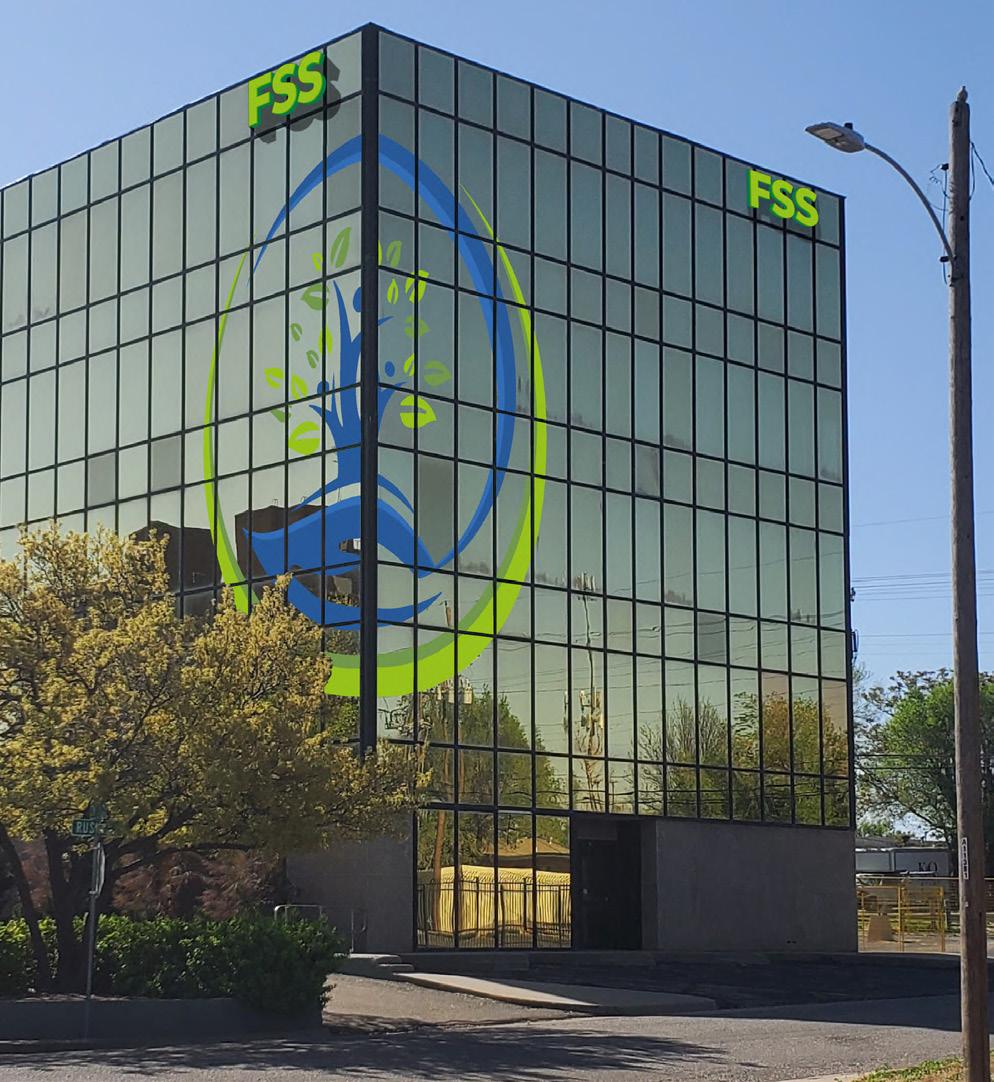

How and when did your organization begin? The Amarillo Area Foundation was founded in 1957 by a group of individuals who knew that a community working together brought strength that any one of them working separately could not. Formed as the second Community Foundation in Texas, the development of the Medical Center transformed health care and the future of health care in this region. The bequest of Don D. Harrington enabled the Foundation to begin giving grants, and this early health care-focused vision grew into a $250 million organization, having the philanthropic impact of strength, breadth and ingenuity.
Whom does your organization primarily serve? We serve all residents of the 26 counties that comprise the Texas Panhandle.

What specific community needs do you meet? We strive to achieve our mission of “improving quality of life for Texas Panhandle residents” through a variety of programs. From scholarships and grants to collaborations like THRIVE, ACE, and Panhandle Community Partnership (NLNE), as well as empowering and educating local nonprofits through the Nonprofit Service Center.

What is something locals may not know or understand about your work? In the past couple of years, our board made the strategic decision to put a finer focus on our work. We identified a few discrete areas of great need in our area: mental health, food insecurity, early childhood literacy, post-secondary education, digital literacy, and access to childcare. We are not only focusing grant funding on these areas, but are also partnering with local, state and national organizations to find innovative ways to work together in tackling these systemic issues.
Being in your position, what have you learned about local generosity? We are always amazed and humbled by the generosity of the Texas Panhandle. Whether through our annual giving campaign, The Panhandle Gives, or by helping our neighbors most in need through the Panhandle Disaster Relief Fund, our community always comes through! We are currently trying to expand our collective financial impact with our “Stratum Funds.” Stratum Funds help AAF build on the foundation of our mission by allowing donors to choose areas of focus that align with their philanthropic goals.




How and when did your organization begin? Ascension Academy began as the shared vision of a group of concerned parents and educators in the 1990s. This group of people saw an opening in the overall academic environment in our area for a school designed to prepare students for college and beyond. The Ascension Academy Board of Regents welcomed the school’s first group of students in September 2000. In August 2006, Ascension Academy moved into its permanent facility off Soncy Road. Ascension Academy remains the Panhandle’s only college preparatory school, providing a safe, nurturing, faith-respecting environment to maximize the potential of every student.
Whom does your organization primarily serve? Ascension Academy serves students in grades 6 through 12 who seek a challenging curriculum in an inclusive but diverse environment. Our school offers a small, safe school community that will prepare them for success in college and in life as Scholars, Artists, Athletes, and Leaders—our Four Pillars.
What specific community needs do you meet? Most of our students are already planning to attend college when they arrive at Ascension, but they also come here to develop the tools and skills necessary to become confident, collaborative lifelong learners who are prepared for success after graduation. Ascension Academy recognizes and maximizes the potential of each individual student.
What is something locals may not know or understand about your work? The profile of an Ascension student doesn’t fit into a box that one might think is typical for a private school. We have a diverse student body that ranges in social and economic status, athletic ability, artistic expression, and academic skills. Each student is an individual with unique gifts and talents, who is given significant opportunities for growth.
What needs does your organization have right now? We want the Amarillo community to know that motivated students of all backgrounds can find their home at Ascension. We want families to know that Ascension is an affordable investment in their student’s future, and we work with each family confidentially to customize tuition based on the family’s financial profile. As we grow, we strive to have a scholarship fund significant enough to provide the Ascension opportunity to every mission-appropriate student in our community. Being in your position, what have you learned about local generosity? Amarillo is a generous community that recognizes the value of investing in our youth. Many churches, groups, and organizations exist because they are dedicated to the success and support of our local students. Here at Ascension, we know that when we invest in our youth, we ensure the success of our local economy and the talent that is necessary to move our community forward for decades to come. We live this mission each and every day— it is the Ascension Difference.
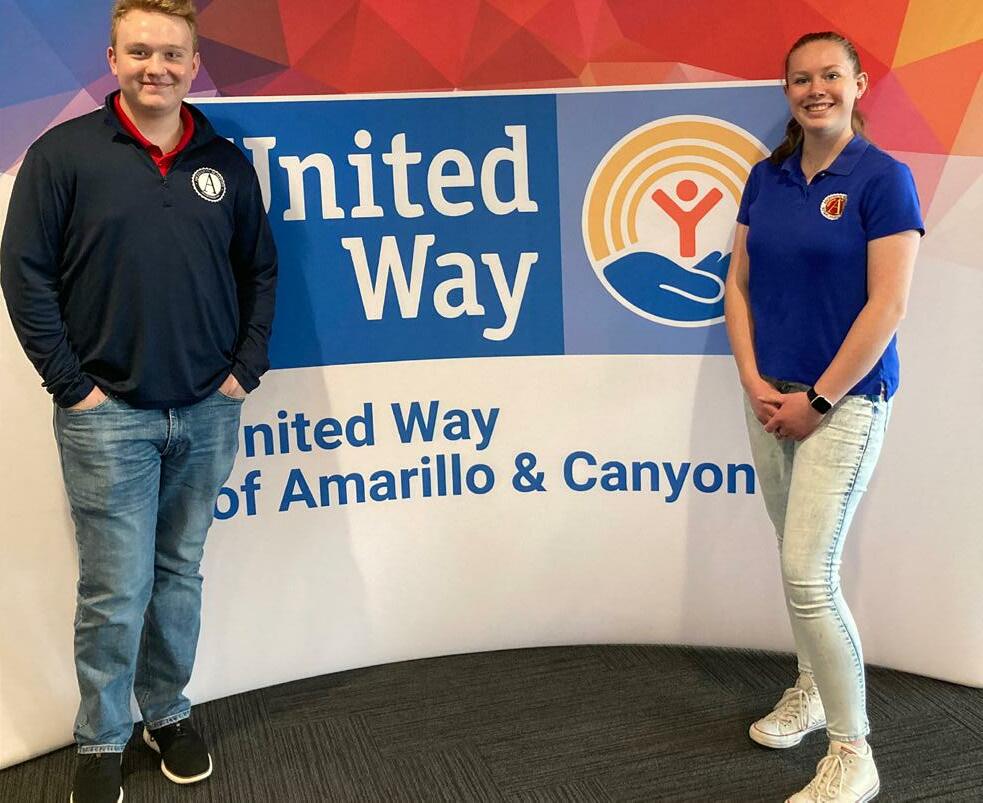
How to help: Help us share the Ascension opportunity will all area students.



at ascensionacademy.org.
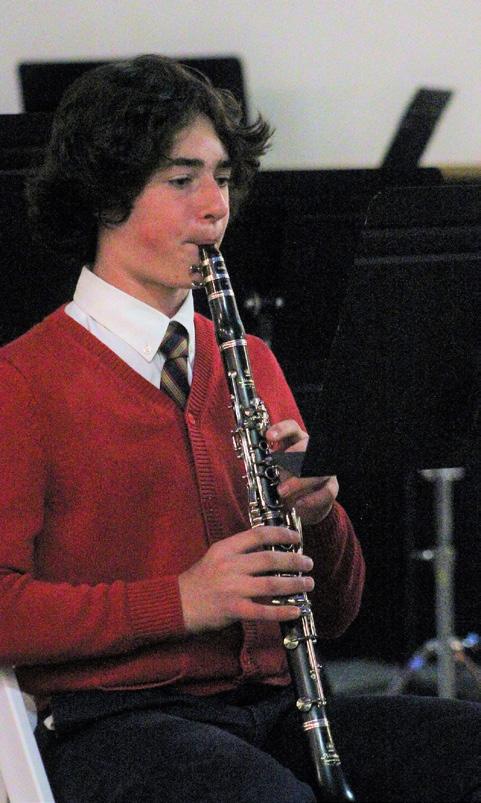
The Guyon Saunders Resource Center (GSRC) has facilitated resources for the homeless since 1993. More than 5,000 men, women and children are served annually. The GSRC provides daytime shelter, showers, laundry, mail service and resources for developing necessary skills for self-sufficiency.
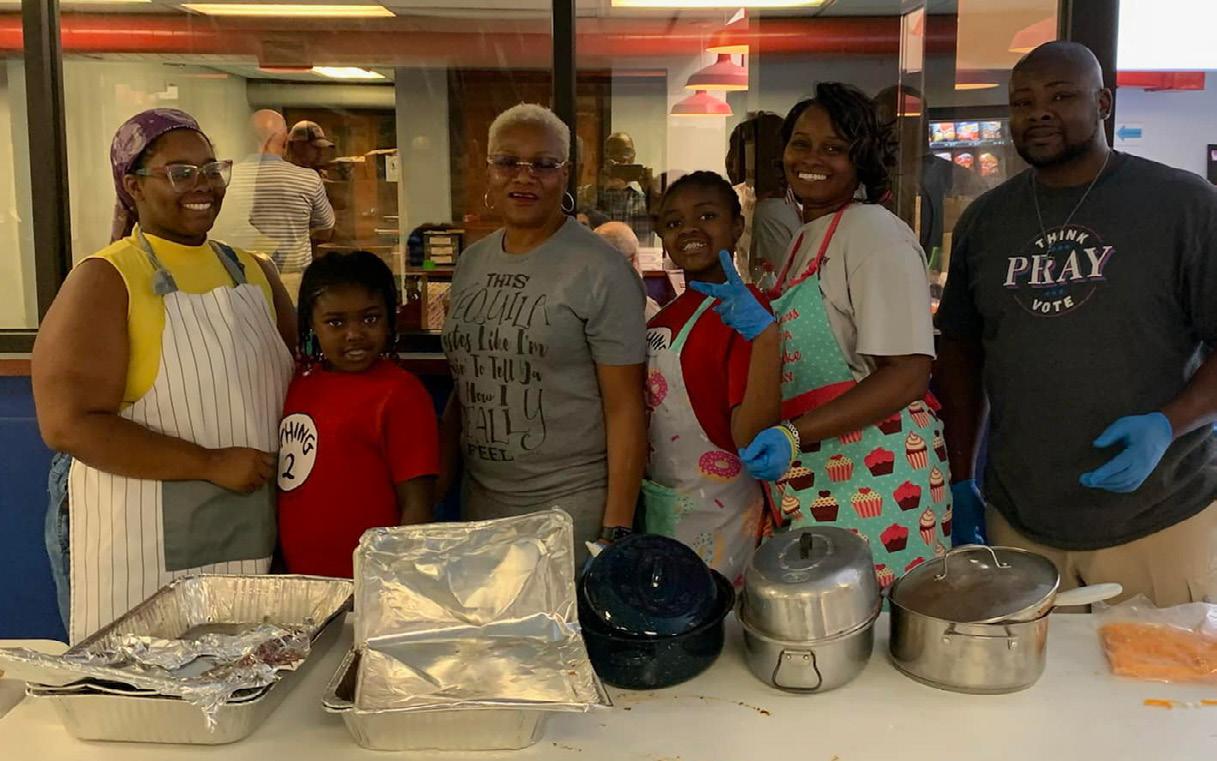


Each day the GSRC works with approximately 120 clients to find the best solutions to move from crisis to stability. The GSRC continues to evolve and meet the needs of the homeless population within our region, while working to change the community perception of homelessness.
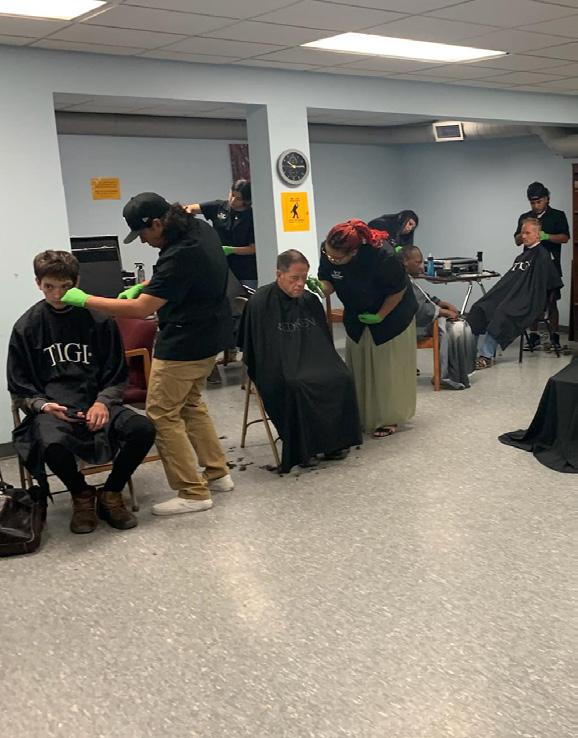
The Mission of the Guyon Saunders Resource Center is to provide a safe daytime refuge, offering basic services in a respectful environment that fosters dignity, trust and hope for those experiencing homelessness and poverty. We hope you will choose to be a resource for the homeless in our community.

How YOU can be a RESOURCE: The programs and services of the GSRC would not be possible without the generous support of our caring community. Donate to the GRSC at our website and during The Panhandle Gives (Nov. 21-29).

“A foundation of strength for those we serve” — Guyon Sanders
How and when did your organization begin? Kids, Incorporated was founded in 1945 by Cal Farley. During World War II, Mr. Farley saw the need for organized activity for young boys to keep them out of trouble.
On the first Monday of January in 1945, Coach Bus Dugger picked up 11 kiddos from Glenwood Elementary and began coaching them in basketball. That’s how Kids, Incorporated began.
Whom does your organization primarily serve? Kids, Inc. serves children and families from the entire Amarillo/Canyon region. In 2022, participation in Kids, Inc.’s sports programs is expected to exceed 17,000 players.

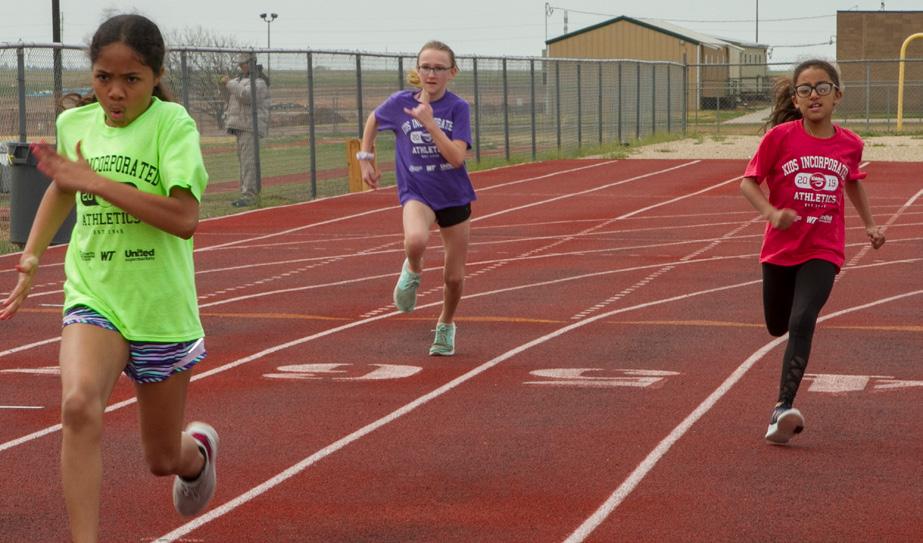
What specific community needs do you meet? With the growing number of select sports programs and travel teams, many children and families cannot afford to participate. For the past 77 years, Kids, Incorporated has maintained affordable fees to make its program available to all. If there is a child who desires to participate in a Kids, Inc. sports program, it is our job to make sure that happens!
What is something locals may not know or understand about your work? There are still many folks who are not aware that Kids, Incorporated is recognized by the Internal Revenue Service as a 501(c)(3) nonprofit charitable organization. All donations are taxdeductible to the fullest extent of the law. Approximately 15 percent of our annual revenue comes from private support. Without this support, our program fees would be much higher.
Being in your position, what have you learned about local generosity? Philanthropy in the Amarillo/Canyon region is exceptional. Those of us in the nonprofit sector could not provide our services without the generosity of so many. The Texas Panhandle is one of the most generous places anywhere—Texas Panhandle folks still look out for one another.
This includes volunteerism. Kids, Incorporated is a great example of the volunteer spirit in this area. We estimate approximately 4,000 individuals give their time each year to coach one of our sports teams.
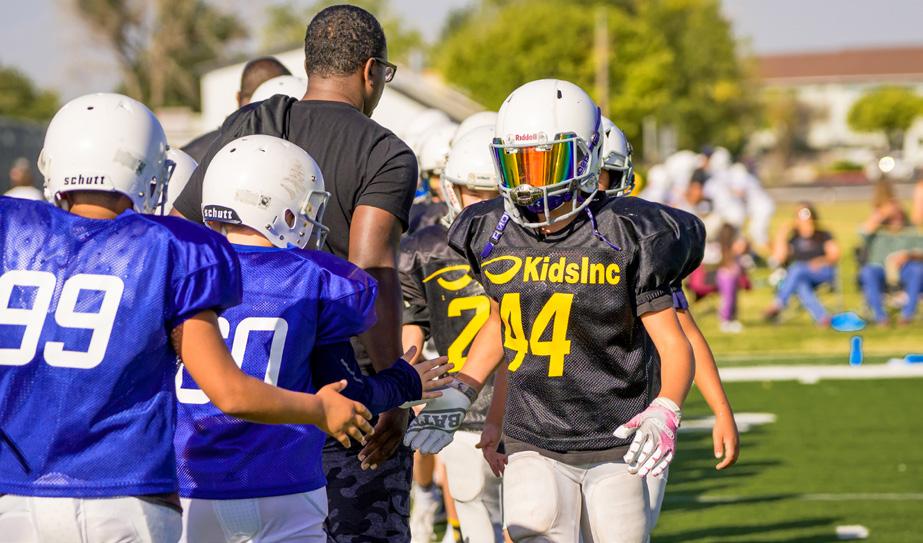

What needs does your organization have right now? The greatest need for the organization at this moment is to complete our $30 million capital campaign. We plan to construct a state-of-the-art sports complex on 90 acres of land gifted to us by Rockrose Development. Learn more at kidsinc.org/complex
We announced the campaign on Jan. 25, 2022. To date, we have raised
than $15 million. With year-end giving upon us, we are asking for gifts to the campaign to help us reach our goal. We can then begin construction on this exciting project.

Downtown Women’s Center has provided programs and services for women recovering from substance use disorders for more than 33 years. Using a holistic approach to recovery, DWC believes that when individuals seek help, in time they can live clean, sober, contributing lives. DWC offers hope coupled with practical resources for changing lives. Programs and services include housing and wrap-around services to ensure long-term sobriety. A staggering 86 percent of the women who graduate from the DWC Recovery Program are clean and sober one year later.
DWC’s goal is to provide services to support long-term sobriety for women served through a nine-level Recovery Program that includes:
• Health: Abstaining from alcohol and illicit drugs to create opportunities to make informed, healthy choices to support physical, mental and emotional well-being
• Home: Providing a stable and safe place to live, along with their children
• Purpose: Participating in meaningful daily activities outside of recovery work, such as a job, education
or volunteering, as well as having the independence, income, and resources necessary to engage in societal activities
• Community: Developing relationships and social networks that provide support, friendship and hope for a better future
• Spiritual: Encouraging women and their children to attend the church of their choice and providing regular spirituality groups
DWC oversees three shelters (Haven House, Abba House and Gratitude House), operates three retail thrift stores (Thrift City, Thrift City Too and Uptown Shoppe—all on 10th Street), and manages the Meridian Apartments, offering quality, affordable housing for 35 lower-income or disabled residents. Through the Recovery Program in FYE 2022, DWC served 74 women and 99 children who would likely be homeless and desperately needing services. DWC served another 332 households through our Emergency Assistance Program with food, gasoline, utilities, rent, dental assistance, and more.

In September, we completed our luncheon after not having one for 3 ½ years. The Amarillo community welcomed our ladies with open arms as we celebrated their recovery. Since its inception in 1989, DWC has served more than 38,500 individuals. Additionally, since 2003 when DWC opened the first thrift store, we have given away $893,000 worth of merchandise at thrift store prices.
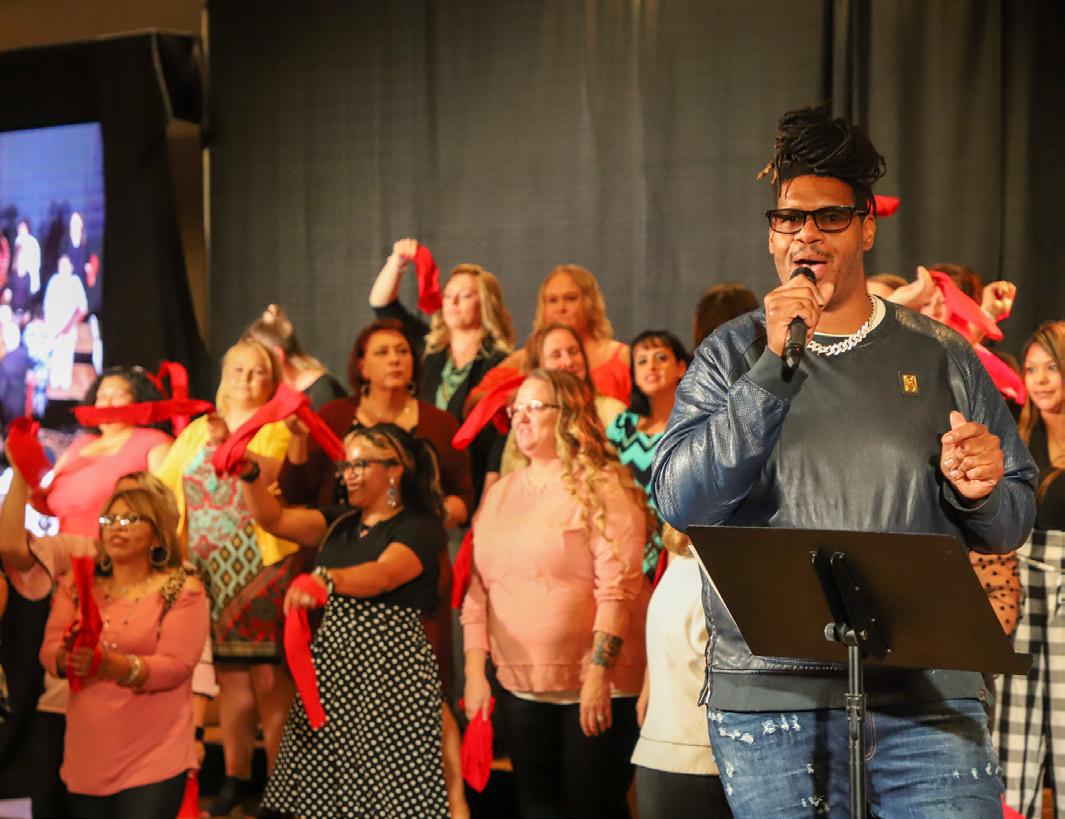



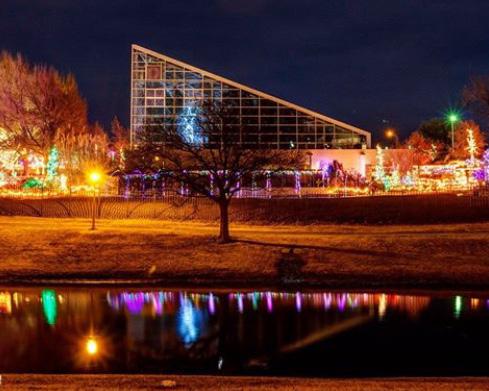
How and when did your organization begin? The Amarillo Botanical Gardens has undergone many transformations over the years. In 1929, an enterprising group of women banded together to create the first garden club of Amarillo. They set out to prove gardening was possible in the challenging High Plains of Texas. They sought out plant life that could survive drought, turbulent wind and harsh sun. By 1945, the club had grown to 125 members and had formed societies. In the late 1960s, they began fundraising and gathering supporters, and after many years they built the main building and gardens that form the center of what we have today. These members established an oasis of beauty and tranquility within a bustling city, and a place of education for the public. Over the years through generous donations, additional land was acquired and the gardens have expanded to 4 beautiful acres.
Whom does your organization serve? ABG serves the entire Panhandle; school children are served primarily through our educational programs. We were able to reach more than 3,000 children from around the region last year. We have a group of dedicated instructors that teach children classes from our ever-expanding curriculum.
What specific community needs do you meet? The gardens provide a firsthand botanical experience in a relaxed, peaceful setting that promotes fresh air, exploring and learning. We have multiple indoor and outdoor spaces for private special occasions and public events. Our experiences are tailored to bring people together in a beautiful setting where nature, science and culture meet.
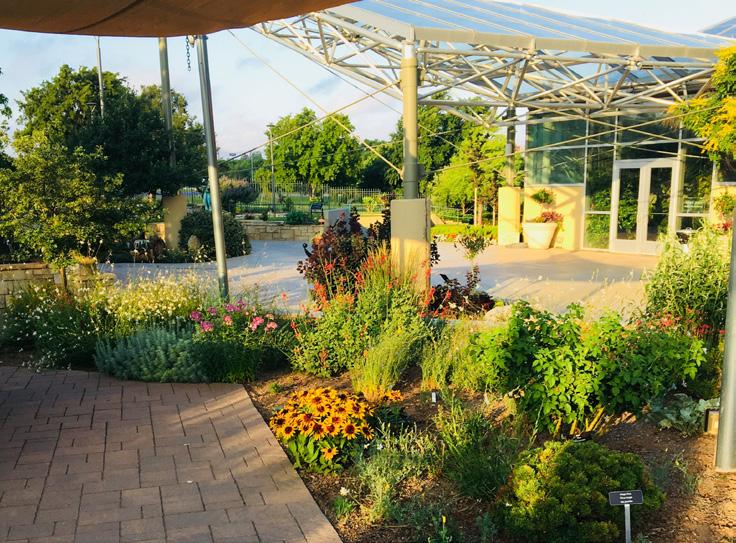
What is something locals may not know or understand about your work? Our garden has served the community for more than 54 years through inspiring interaction with plants, the environment, creating adventure and conveying knowledge. We have more than 80,000 visitors from around the country each year, and host 300 private and public events. ABG is not part of the City of Amarillo’s Park System and receives no public funding. We are entirely self-funded through our events and donations from the generous people of the Panhandle.
What needs does your organization have right now? Our greatest needs are securing funding from corporate and community supporters and gaining more volunteers. Our revenue is only enough to cover our operating expenses. We would like to continue expanding our educational programs for both children and adults, and create programs to support underserved people within our community. We have a very small staff and are dependent on volunteers to help us keep the gardens beautiful.
Being in your position, what have you learned about local generosity? The Amarillo Botanical Gardens is an unusual and unexpected oasis. To be completely supported by our community for 54 years through donations and volunteerism is overwhelming. Our citizens have a passion for giving and supporting local organizations

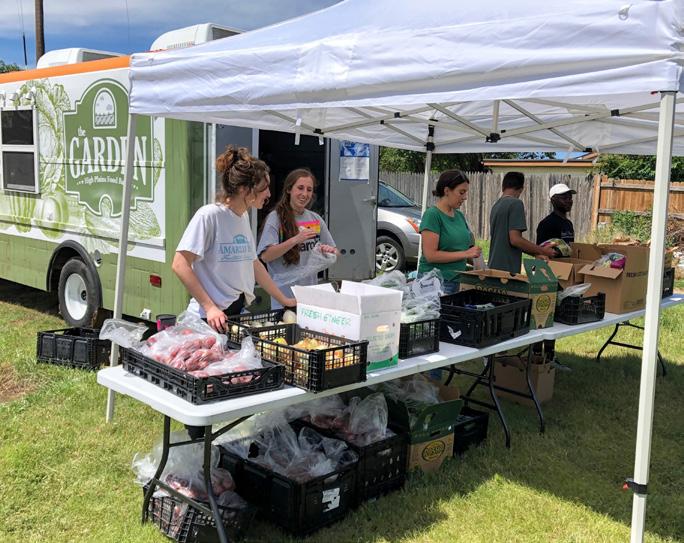

How and when did your organization begin? The High Plains Food Bank began when a group of concerned citizens saw the amount of donated food that could be collected and distributed to many in the Texas Panhandle that were going without food each day. In 1982, the High Plains Food Bank was formed to help be the clearinghouse for donated food for individuals and families in need. HPFB soon developed a delivery system to help connect all of our Texas Panhandle counties.
Whom does your organization primarily serve? High Plains Food Bank’s mission is to alleviate hunger in the Texas Panhandle. HPFB serves the 1 in 7 individuals and the 1 in 6 children, who struggle with food insecurity in the Texas Panhandle. We serve individuals from every ethnicity and age group through the feeding programs that we provide. HPFB secures, sorts, stores and distributes food through a safety-net of more than 140 feeding partners, across the top 29 counties in Texas.
What specific community needs do you meet? To combat food insecurity and improve the overall health of the people that we serve, HPFB provides a variety of community programs, including Kids Cafe, Direct Mobile Distribution, a senior adult food box program (CSFP), Mobile Harvest produce distribution, and nutrition education through The Garden at High Plains Food Bank. HPFB can also help individuals apply for SNAP, CHIP and Medicaid, and refer individuals to other organizations and programs that can help them establish food security, improved health and self-sufficiency.
What is something locals may not know or understand about your work? HPFB strives to educate the public about the different food programs offered and the services that we provide to the top 29 counties of the Texas Panhandle. Food banking decreases waste by distributing food that would otherwise go uneaten to people who need it the most. Through the partnerships we have with local food distribution centers and supermarkets, we take donated products and sort, store and distribute to our agency partner network to get it to neighbors who need it the most.
What needs does your organization have right now? Volunteers provide critical support in alleviating hunger in the Texas Panhandle. To help distribute food to our most vulnerable neighbors, we need volunteer support to sort and pack donated food in product recovery, pack senior food boxes for our CSFP program, and perform various tasks to help the Garden flourish.
Monetary donations are always needed because funding allows us the purchasing power to supplement the warehouse with specific items to offer an appropriate variety and nutritional balance. As a member of the Feeding America network, High Plains Food Bank operates with high efficiency and low overhead. We take great pride in being responsible stewards and put $0.96 of every $1 donated to us toward food and feeding programs. Your $1 contribution to HPFB can provide about 14 meals worth of food. With so many of our neighbors facing food insecurity, every gift can make a true impact for a neighbor or family who faces the risk of hunger.
Being in your position, what have you learned about local generosity? We learn every day that the extraordinary generosity of the Texas Panhandle is unlimited. Even when the hardest of times hit our world in 2020, we saw giving like we’ve never seen in our history. The residents of the Texas Panhandle truly care about their own

Sign up to volunteer on our website at HPFB.org. Morning, afternoon, evening and weekend hours are available! $1 can provide up to 14 meals to our neighbors in need in the Texas Panhandle and you can choose to make a one-time or monthly gift directly at HPFB.org 815 ROSS ST. 806.374.8562 | HPFB.ORG

Colorful Closets is a 501(c)(3) nonprofit organization dedicated to providing mini-wardrobes for students in need, right here in our community. After recognizing the need, Keely Brown and Lindsey Wing began Colorful Closets and set out, in 2016, to collect, organize and distribute tenderly used and new clothing throughout the Amarillo and Canyon areas, while also ministering to the students they serve by spreading the love of Jesus Christ.
Colorful Closets’ mini-wardrobe consists of 10 tops, five bottoms, a full-size bag of toiletries, five pairs of brandnew socks, and five pairs of brand-new underwear. All the garments are arranged by outfit, laundered and packaged in a crisp, clean reusable garment bag.
Not only does Colorful Closets clothe infants through seniors in high school, both Keely and Lindsey make it their goal to provide age-appropriate, stylish, ontrend, casual attire for the school day. They like to think of themselves as the local “Stitch Fix” for students. A term they are known to use for the wardrobes they put together is “a hug in a bag,” meaning each and every clothing request is prayed over, well thought out and assembled with purposeful care and intention.
Since 2016, Colorful Closets has clothed more than 4,500 students. That is 45,000 tops and 22,500 bottoms! Thanks to the Amarillo and Canyon communities, Colorful Closets has been able to provide clothing, warmth, hope and dignity to children all across the area.


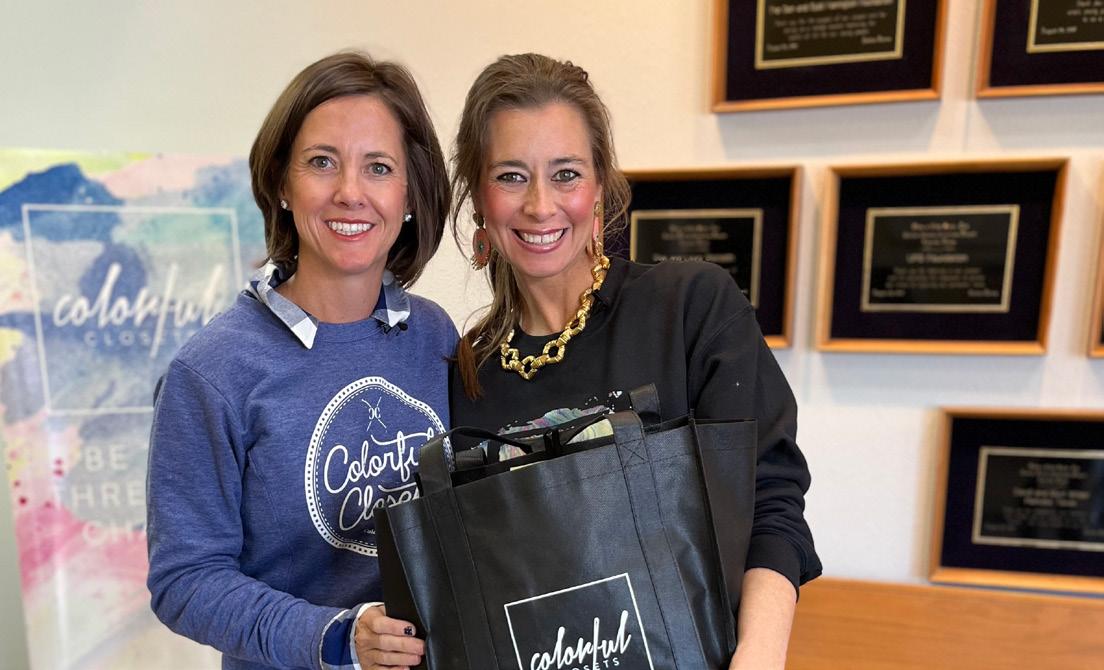
Are YOU ready to be the thread of change? You can become a contributor to our cause by serving as a volunteer, organizing toiletry or undergarment drives, donating tenderly used and new, age-appropriate clothing, or by making a financial contribution by mail or donating online through the website. Clothing donations can be made at any of Colorful Closets’ drop-off locations listed on the website. Simply place all clothing donations in a bag and label each bag “Colorful Closets.”

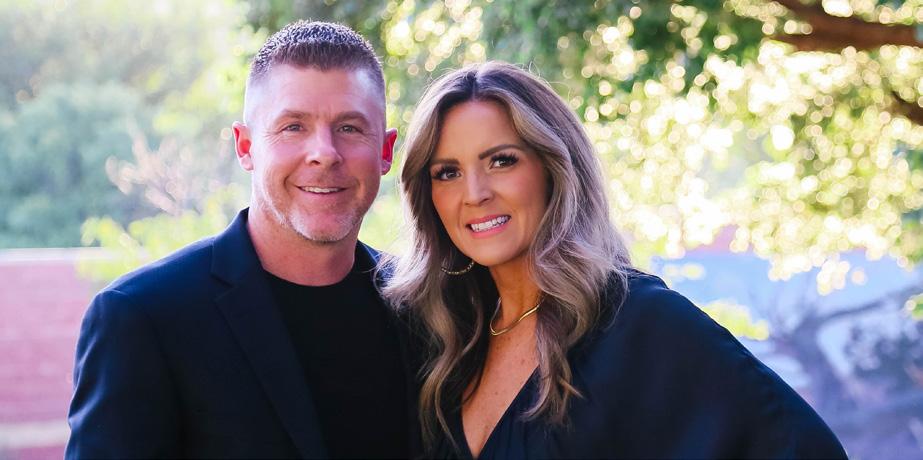


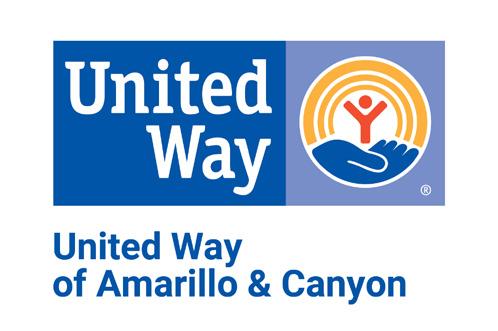

How and when did your organization begin? The heritage of our community is deeply rooted in helping those in need. To us, it’s just the right thing to do. That’s why 98 years ago (1924), the leaders of our community decided we needed a community chest, later named United Way. Since our inception, we have been working hand in hand with the community to solve complex problems and provide a better life for our citizens. Through the collective power of the community, we have been providing funds to better our community, honoring the traditions of our forefathers, and supporting needs as they have changed, evolved and even grown.
Whom does your organization primarily serve? At United Way, we fight for the health, education and financial stability of every person in our community. Our goal is to create long-lasting changes by addressing the underlying causes of these problems. Every year, we allocate funds to programs as vast as the needs of our community. These funds are used by our program providers to fuel better outcomes. We want to impact lives so that our citizens thrive with income stability, education and health, and are independent of charitable and governmental needs.
What specific community needs do you meet? The problems are as varied as the people who live here. United Way of Amarillo & Canyon is uniquely positioned to meet the needs of individuals that struggle to earn a thriving wage. To solve the challenges, what this place needs is all of us living united.
What is something locals may not know or understand about your work? Raised here. Stays here. The money raised by our community stays in our community. Ninety-nine cents of every dollar donated stays in the Amarillo and Canyon communities. And the decision of which programs receive funding is determined by community members, not staff. UWAC funds programs, not nonprofit organizations.
What needs does your organization have right now? We need our community to unite through education about the needs of the community, advocating for those needs to be met, and connecting with the community. We need individuals ready to help those in our community by giving today! UWAC helped more than 50,000 individuals last year. This year, let’s make it 60,000.
Being in your position, what have you learned about local generosity? Our community has helping hearts. Our partners contribute more than money. Their ideas, volunteer power, in-kind support and skills are helping make Amarillo and Canyon a better place to live, work and play. From running corporate campaigns to participating in dialogues about issues in the area, UWAC partners are helping change the story of individuals and families across our community. We sincerely appreciate the support! It takes everyone in the community working together to create a brighter future.
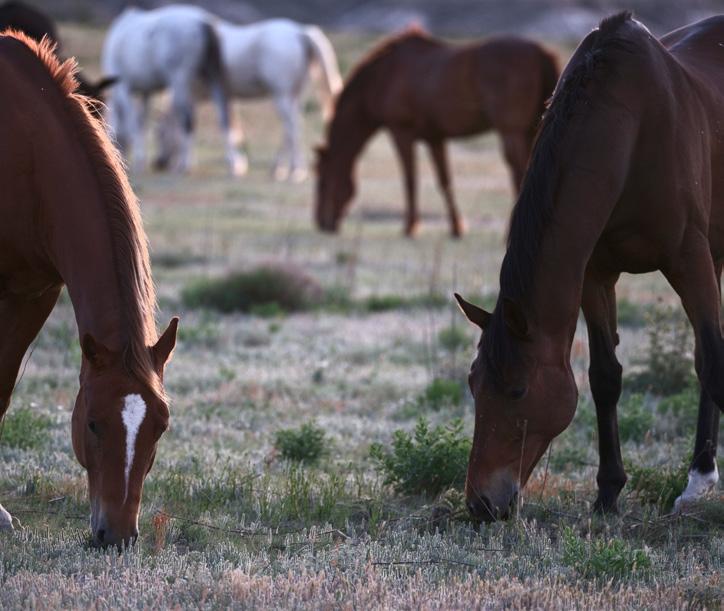

How and when did your organization begin? In 2008, Laurie Higgins-Kerley’s husband of 25 years passed away from stage 4 cancer. Afterwards, she spent many days at Dove Creek Ranch, walking the land, finding periods of solace with the horses. This was a salve for her broken heart and eventually what ignited her desire to help them. In 2012, Laurie started Dove Creek Equine Rescue. The ranch became a place where horses are rescued, rehabilitated, retrained and re-homed. DCER’s mission is to restore the dignity, purpose and wholeness of unwanted horses who need a second chance in life, and humans who need healing and direction by providing compassionate care, connection and education. DCER’s vision is to heal the heart of humanity through authentic partnership between horses and humans.
Whom does your organization primarily serve? Dove Creek Equine Rescue serves the “Unwanted Horse” population in the 26 counties of the Panhandle. Unwanted horses are domestic horses who are no longer considered useful, or whose owners are no longer capable of providing necessary care. There are currently between 100,000 and 175,000 unwanted horses in the US. DCER is a member of the Home for Horses Coalition and Horse Sanctuary, and verified by the Global Federation of Animal Sanctuaries. DCER also serves humans through the Led By Horses program, which offers equine-assisted healing. Led By Horses partnered with Family Support Services Hopes Program in 2021, serving families with children. Laurie also holds workshops for the public on mindfulness, grief, leadership and women in transition.
What specific community needs do you meet? Dove Creek Equine Rescue helps horse owners who are no longer capable of providing care for their horses. We educate current and prospective horse owners on how to own responsibly, including proper care and available resources to prevent unwanted horses. We raise awareness of the issue and its consequences in the horse industry. We have reduced the number of unwanted horses in the Panhandle and are working toward eliminating the problem. Dove Creek has received 245 animals over 10 years and re-homed 80 percent of them. Through the Led By Horses program, Laurie and her staff assist those who suffer from anxiety, depression, domestic violence, and other challenges. Through partnership with horses, we help people create stress-reduction, stronger emotional health and regulation, healthier boundaries, and body language awareness.
What is something locals may not know or understand about your work? Our horses roam on 500 acres in a wide canyon, allowing them to be in a herd, which is their natural environment. We have an on-site trainer who works with horses on ground manners, as well as establishing a good foundation under saddle. We give horses all the time they need to instill trust in humans. In the Led By Horses program, we create beautiful experiences where horses and humans find a common connection through partnership and respect. Horses as sentient beings help us bypass our intellect and access our heart and inner wisdom.
What needs does your organization have right now? Financial support for the Led By Horses program, which will be expanding in 2023, offering monthly classes and workshops to the public in mindfulness, leadership and grief. Donations to support the feed, care, rehabilitation and rehoming of our horses through one-time donations or monthly giving. We also have volunteer opportunities for all ages 7 days a week, for those interested in learning more about the horses at Dove Creek.
Being in your position, what have you learned about local generosity? This community is incredibly generous and has helped us make a positive difference in the lives of horses and humans over the past 10 years. Our “When in Drought” campaign this past summer helped us raise $29,000, $9,000 over our goal! Thank you, Amarillo, and the surrounding areas!



How and when did your organization begin? Square Mile Community Development was formed in 2016 by a small group of individuals with more than 30 years of collective experience in both international and domestic community development, food insecurity, health, education, and poverty. This group of pastors and community leaders recognized the good work done by many community organizations to meet immediate needs, but also saw the lack of focus on long-term solutions for struggling communities. Square Mile was formed to fill that gap and work to find ways to help struggling communities thrive.
Whom does your organization primarily serve? We serve rural and urban under-resourced communities. We work primarily with low-income people of all ages, refugees, minority groups, veterans, and women.
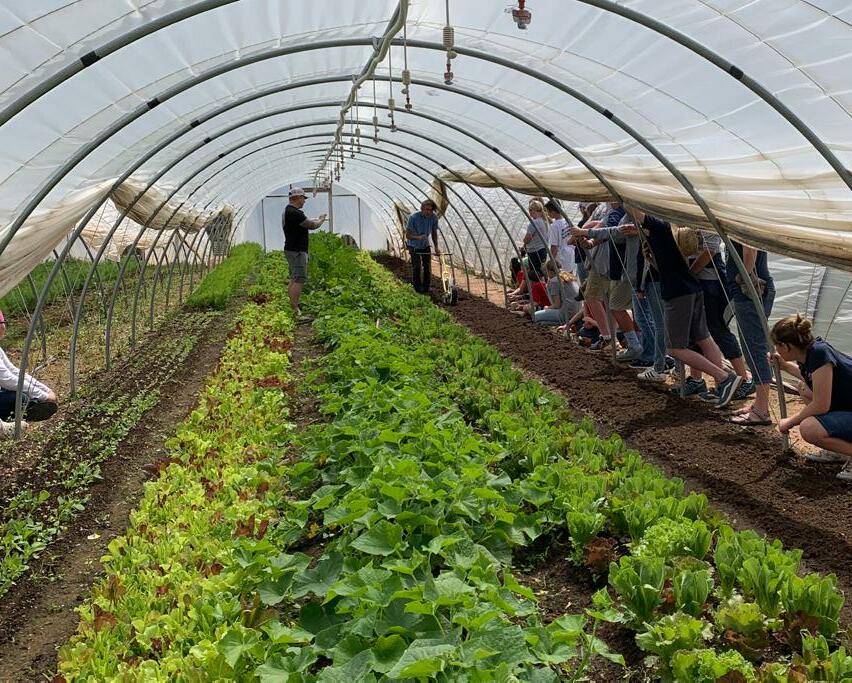
What specific community need or needs do you meet? We focus on three main areas: Food insecurity, economic development, and refugee support. We provide local produce and meat through our urban farm project and through developing and supporting more local and regional producers, small business support and development through our PATH program (pathtobusiness.org), and refugee support through our work at The PLACE.
Our five Key Areas of focus are: Economic Development, Housing, Health, Education, and Spiritual Care. Projects and partnerships fall under the scope of these core areas.
What is something locals may not know or understand about your work? Although we do help with people’s immediate and pressing needs, our main focus is finding solutions to the underlying issues facing our struggling communities. This often means we are balancing our time between helping individuals directly and working behind the scenes with partner agencies and institutions to address endemic community issues. We also offer consulting services for organizations, churches, businesses, and civic groups to help them be more effective in cross-cultural communication and systemic services. Through our PATH program, we have helped more than 65 entrepreneurs, small businesses and nonprofit organizations, ranging from food trucks and cleaning services to veteran resources and faith-based ministries. Besides all the things we do here in Amarillo and the Panhandle, we also have projects as far away as Uganda and East Africa.
What needs does your organization have right now? Our biggest need is financial support! We are a small organization doing big things, but the needs outweigh our resources. We don’t pay for office space or facilities, so everything we raise goes back into our programs and projects. Volunteers can help at one of our urban farm projects, by mentoring entrepreneurs and small business owners through our PATH program, or by helping with newly arrived refugees at The PLACE.
Being in your position, what have you learned about local generosity? The Panhandle of Texas has some of the biggest
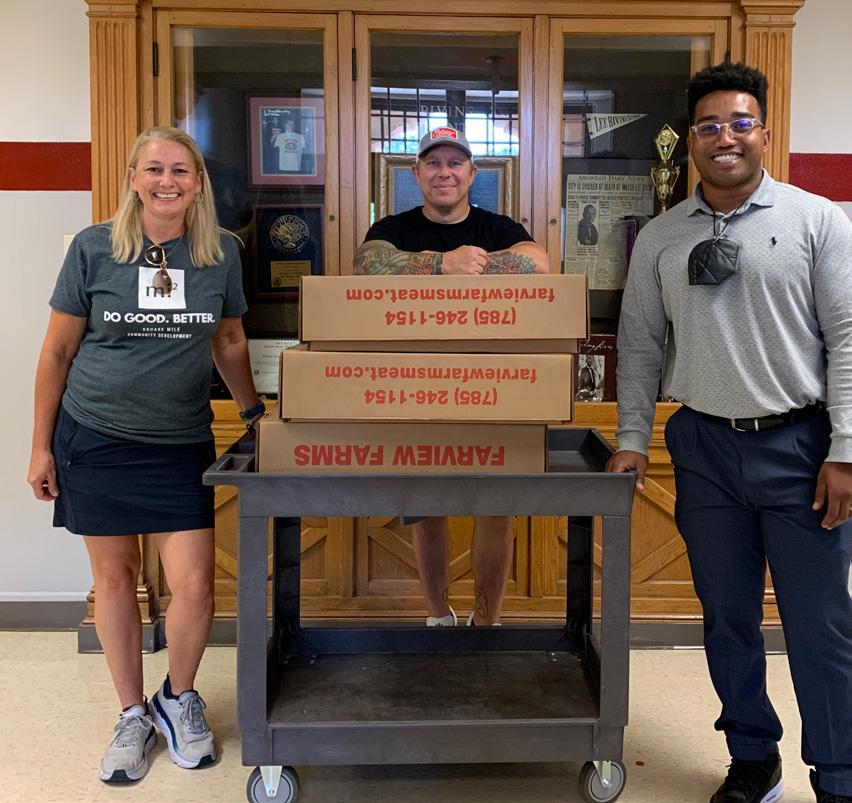
that we have seen anywhere in the world. When our community gets behind something, they do it right and they do it big! We aren’t afraid to try new things and blaze our own trails.

Did you know that kids who grow up with 20 books at home receive an average of three years more school than kids from bookless homes? This is likely one of the first things you’ll learn in a conversation with the Founder/Director of Storybridge, Chandra Perkins.

In 2016, Perkins took her two sons to a local park to give away some of the books they had outgrown to the children playing there. She recalls, “We only gave away eight books that first day, but something lifechanging happened in my heart on the drive home. I was convicted of two things:
1. A shelf full of good books is a luxury only a small percentage of our children grow up with, and
2. The ripple effects of this reality are felt early for children, last a lifetime, and affect our entire community.”
Since that first day, Perkins has read numerous studies and academic commentary on book access for children while gathering data specific to the Amarillo area. “What we know right now based on over 3,000 survey responses is that only about 23 percent of our children under 5 in Potter and Randall counties own at least 20 books,” Perkins reports, “but this is a solvable problem! Imagine a city where all children get bedtime stories because they all have books at home.”
Today, Storybridge is made up of an energetic staff, dedicated board, and a passionate army of donors and volunteers working toward that vision. Together this team manages five programs designed to provide greater access to books for families in need and drive all children toward increased literacy.
More than 300,000 books have been placed directly in children’s hands through Storybridge programs:
• DOLLY PARTON’S IMAGINATION LIBRARY: Serving more than 5,200 enrolled Potter/Randall children under 5 with a brand-new book in the mail every month. Storybridge pays the monthly bill, so the books are free for families.
• KINDERBRIDGE: Guided playgroups for parents and children under 5. Made possible through partnership with Amarillo ISD.
• LITTLE FREE LIBRARIES: 25 free-standing book boxes installed in neighborhoods with limited book access, stocked weekly with children’s books.

• FREE BOOK FAIRS/ BOOK TRAILER VISITS: Thousands of books each month distributed to high-need elementary schools and community events for children to self-select books for home libraries.
• SUMMER STORYTIMES: Weekly high-quality literacy experiences around Amarillo with free books for all attending children.
“If you believe ‘an ounce of prevention is worth a pound of cure,’ you believe in our work at Storybridge,” Perkins says confidently. “Join us! Give children the resources they need to achieve their dreams, and they will make you so proud.”
Learn more about Storybridge programs and current needs at storybridgeama.org

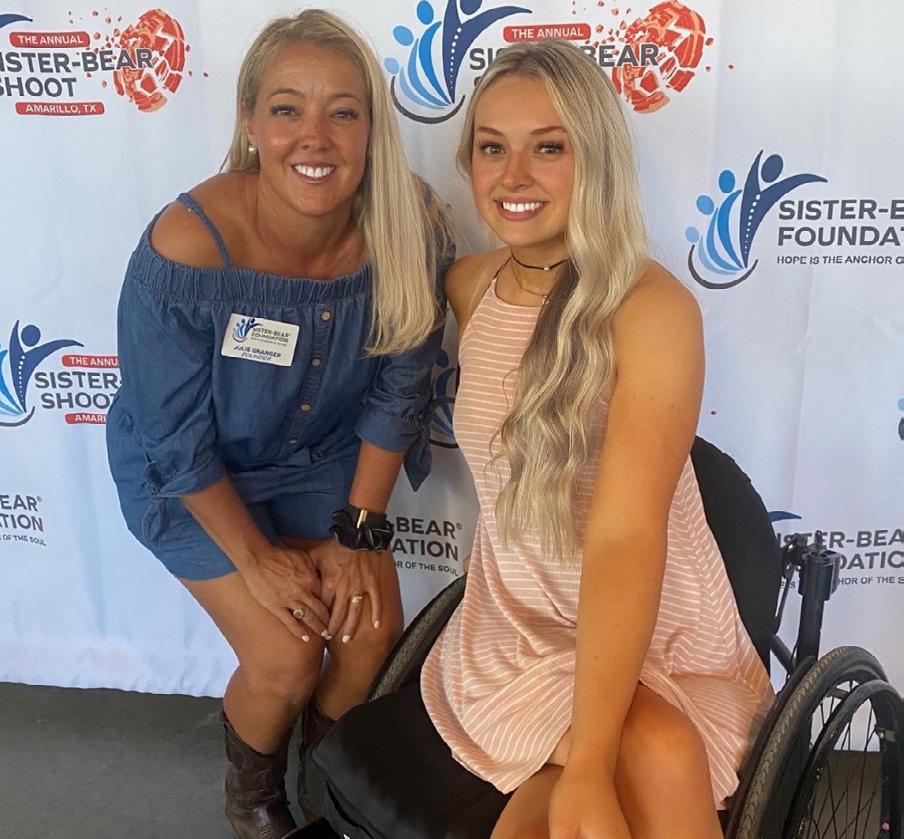

How and when did your organization begin? In March of 2018, my daughter, Kathryn, was severely injured in an auto accident that left her paralyzed from the chest down. We quickly realized the lack of specialized neurological resources in the Texas Panhandle. Kathryn and I traveled weekly to Ft. Worth for seven months, so she could receive advanced rehabilitation and treatments. Today, Kathryn lives independently in her own home, drives her own car, and has a job.
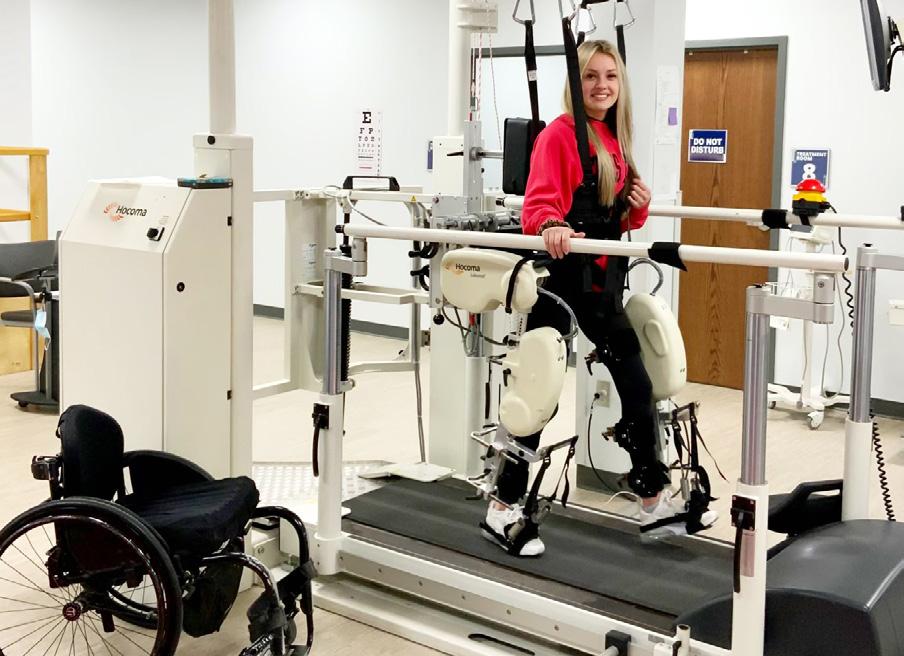
Our family’s experience is the catalyst that led me to start the Sister-Bear Fund in 2019. Sister-Bear Foundation obtained 501(c)(3) status in July 2021, and is led and managed by a volunteer board of directors.
Whom does your organization primarily serve? Sister-Bear Foundation provides grants to qualifying adults who live in and around the Texas Panhandle with mobility issues caused by neurological, brain or spinal cord injury or illness. We help defray expenses related to fitness and wellness and improved quality of life that are not covered by insurance.
What specific community needs do you meet? Not only does Sister-Bear Foundation provide grants to mobility-impaired adults, but we also strive to fill the void of neurological rehabilitation equipment in Amarillo. Through proceeds raised at our Sister-Bear Shoot and Auction and during The Panhandle Gives, we were able to purchase the Panhandle’s first Lokomat in 2021, which is housed at Northwest Texas Healthcare System Therapy Center in Wolflin Village. Lokomat therapy increases muscle strength and range of motion, which improves endurance, balance and muscle tone regulation.
What is something locals may not know or understand about your work? When a family suddenly faces a tragic accident or diagnosis, we want to help them in their time of need with resources that can make their journey easier. Our goal is to be the hub that connects health care providers, medical equipment and supply retailers, and other organizations serving adults with a life-altering impairment or illness. We are also actively advocating for handicapped parking and helping our city to bring businesses and property management groups up to code where accessibility is concerned.
What needs does your organization have right now? We need to make people aware of our grants program, so we can receive more applications. If you know adults with a brain or spinal cord injury, multiple sclerosis, cerebral palsy, or complications from stroke or Parkinson’s, please encourage them to visit our website and learn how we can help make their lives a bit easier. As always, the financial support of the community helps Sister-Bear Foundation help others.
Being in your position, what have you learned about local generosity?
has been incredibly humbling. From the day our lives changed, the support of individuals and businesses who jumped in to help our family, to today through the foundation, is amazing. Beyond financial support, the volunteers and board members who have spent countless hours supporting this initiative is something for which I am eternally grateful— Jule Granger, Founder and President
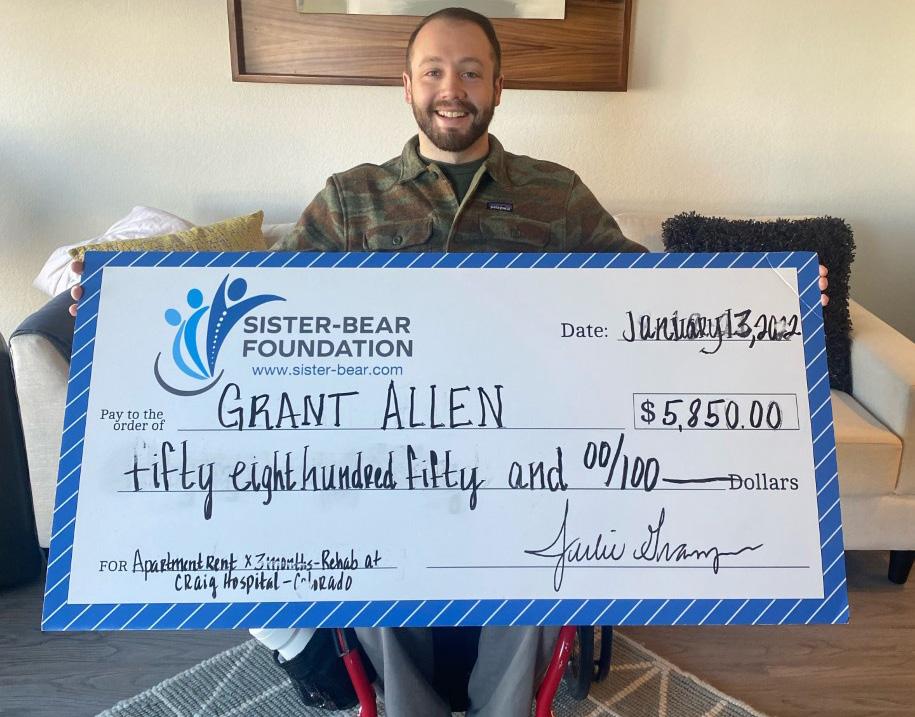
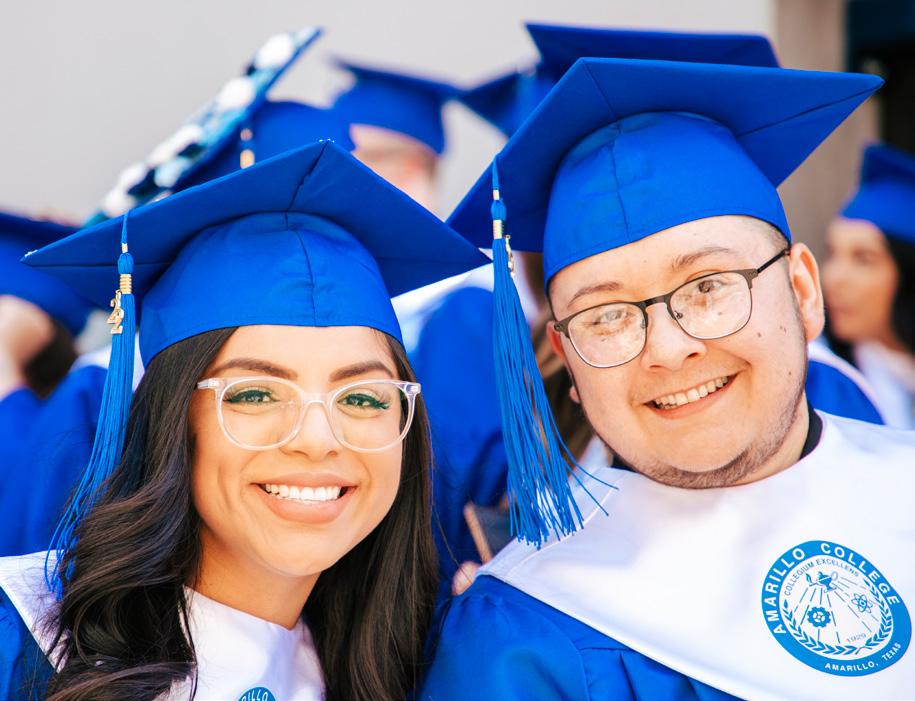

The Amarillo College Foundation was established on Jan. 23, 1962 on the strength of a modest $2,500 gift from Scott Lumber Company. The Foundation’s sole purpose is to solicit and administer gifts and grants for the benefit of Amarillo College and its students, staff, programs and facilities. Bolstered by substantial community buyin and administered by an ever-revolving but consistently devoted board of directors, the AC Foundation has steadily increased its modest nest egg so that now it annually awards scholarships well in excess of $1.5 million.
Embracing the theory that it’s best to strike when the iron is hot—the College, after all, is ranked in the top five nationally by the Aspen Institute for Community College Excellence and, additionally, received a rarely awarded perfect score on its most-recent accreditation renewal report—the Foundation has undertaken an ambitious new fundraising effort.
On Oct. 5, the AC Foundation launched the public phase of a $45 million comprehensive campaign—Badger Bold. It is the first comprehensive campaign in AC’s 93-year history, and the public phase follows a highly successful “quiet phase” that since 2020 has garnered $31.5 million in gifts and commitments—a full 70 percent of its goal.
Badger Bold supports, among others, three primary initiatives:


• Student Experience: Access and Completion, STEM Scholars Program, Earn & Learn, and Athletics
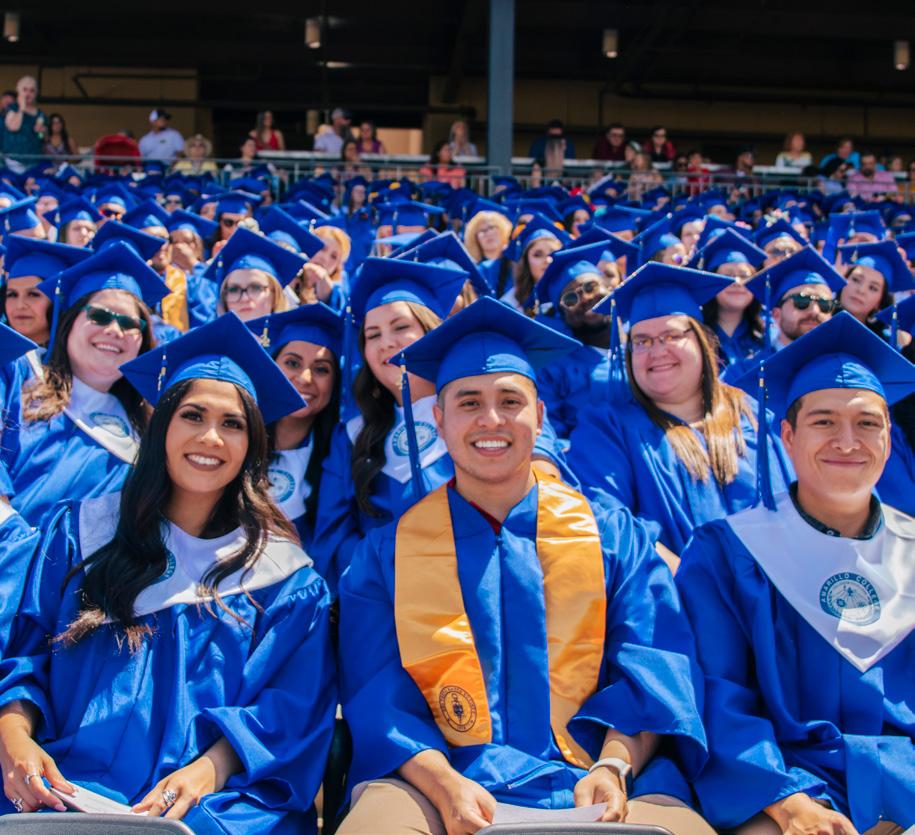
• Faculty and Staff Enrichment: Endowed Faculty Awards, Program Development
• Capital Enhancement: Innovation Outpost, Enrollment Center, Athletic Center
During the quiet phase of Badger Bold, the Foundation received six contributions of $1 million or more. AC Vice President of Institutional Advancement Joe Bill Sherrod says all forms of giving are impactful, from small gifts given year after year to major gifts, and planned gifts that denote AC as the beneficiary in a will.
“The support for Badger Bold has been phenomenal and we are elated at this point,” Sherrod says.

How and when did your organization begin? Sharing Hope Ministry started in 1999, when women from a local church provided Christcentered materials to locally incarcerated women. The ministry grew and became an independent, nondenominational nonprofit in 2001. Patsy’s Place Transitional Home was opened for post-offending women who were re-entering our community and the Center for Advancement was opened to provide education, resources and support.
Whom does your organization primarily serve? The programs of Sharing Hope Ministry serve women who are incarcerated, are postoffenders, are actively seeking help for an addiction, and local women whose current circumstances put them in jeopardy of living a stable life.
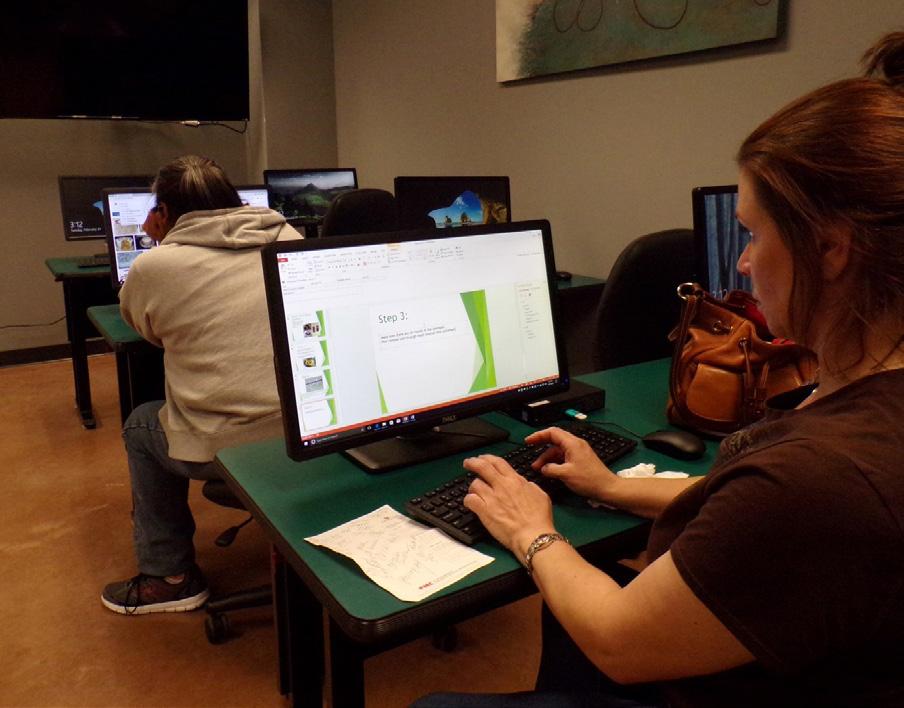

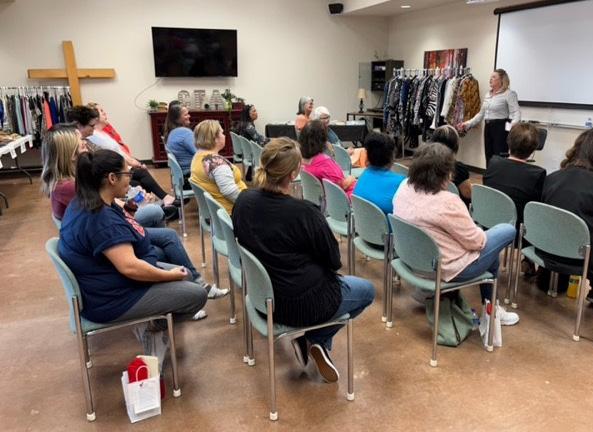
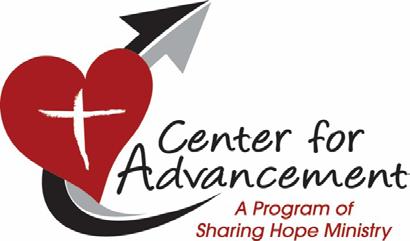

What specific community needs do you meet? Our programs are unique as they work to equip women to be productive members of society, achieve their potential and lead Christ-centered and selfsufficient lives through education, empowerment and encouragement. What is something locals may not know or understand about your work? Our organization accomplishes our mission by working closely with volunteers, social service agencies and businesses to offer G.E.D. prep, basic computer classes and life skills education, such as job readiness and financial literacy. A computer lab is open for job searches and resume building. Food, hygiene items and clothing are also available to women we assist.
What needs does your organization have right now? There are many ways to help provide for the education and needs of our area women. Financial donations are important to the health of our organization, but our programs also utilize in-kind support like clothing, food and donated vehicles. Our website has an Amazon link for easy access for interested supporters to purchase needed supplies, educational materials and hygiene items that can be sent to our location. There are many opportunities for individuals or groups to volunteer.
Being in your position, what have you learned about local generosity? Our organization relies almost entirely on local generosity through financial support, volunteerism and partnerships with other likeminded agencies and businesses. This generosity has strengthened our organization and allowed our impact to be greater. Together, our work helps at-risk women find self-sufficiency and a better quality of life.
How and when did your organization begin? In 1984, the Coalition for Child Abuse Prevention, formed by agencies serving children in the Texas Panhandle, recognized that the system addressing child abuse was unintentionally re-victimizing the children it intended to help. Court cases were lost due to a lack of comprehensive case management practices. In 1989, The Bridge opened as the first Children’s Advocacy Center (CAC) in the state of Texas to provide a child’s path to healing and justice in the wake of abuse. The Bridge is the only CAC in our region.
Whom does your organization primarily serve? The Bridge serves children residing in the top 26 counties of the Texas Panhandle who make an outcry of abuse or witness violence.
What specific community needs do you meet? Children are referred to The Bridge by law enforcement and social services for forensic interviews and physical exams as required by Texas law. Interviews are recorded and qualify as evidence in court cases. Case coordination by The Bridge with law enforcement, social services, prosecutors, and medical and mental health providers improves prosecution rates
in child abuse cases. Bridge family advocates provide referrals to specially trained counselors to help children become children again.
Bridge staff provide child abuse awareness training for adults and child safety education for kids. Our staff also fields all reports of abuse in the 26 counties of the Texas Panhandle. In 2021, 1,557 children came to The Bridge—40 percent more than the previous year.

What needs does your organization have right now? It costs approximately $1,000 to provide all services to one child. Community members can help children become children again by joining The Bridge Healing Heroes.
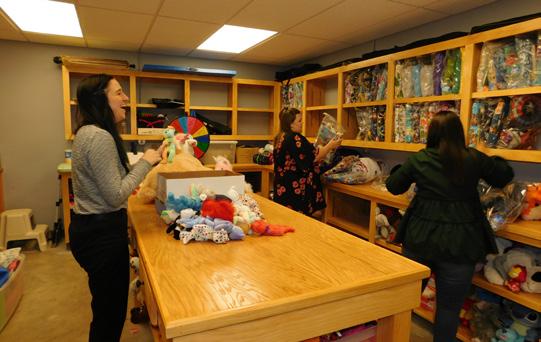
Donate: bridgecac.org/donate In-kind gifts are always welcome, including blankets, crayons, coloring books, journals, and colored pencils. See our wish list: amzn.to/3E5Jucq
Volunteer: Volunteers are welcome and required to pass background checks. More information about volunteering is available on our website: bridgecac.org
How and when did your organization begin? The Amarillo Art Institute was started in 2004 by artist Ann Crouch and a group of her friends. Their goal was to create a place where people of any age and background could learn and create art.

Whom does your organization primarily serve? Though more than 70 percent of students and members at the Institute are seniors (age 60-plus), there are also classes and workshops available for all ages, including kids as young as 6.
What specific community needs do you meet? We provide a creative space for artists at any stage to grow their skill, get exposure to the public, and thrive. The Institute also serves the community by providing on-site art classes at Panhandle schools and local organizations.

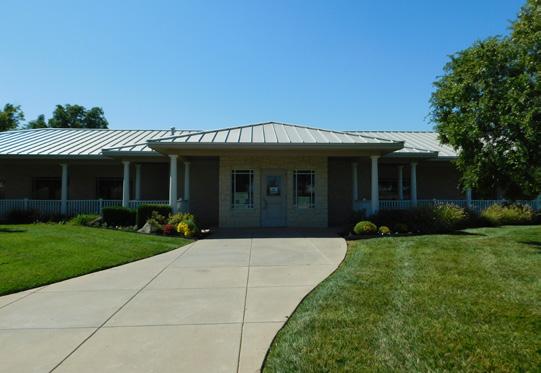
What needs does your organization have right now? Since our facility, Arts in the Sunset, is currently under construction, we have a hard time letting people know we are still here! We are asking the community to spread the word that the Amarillo Art Institute is open throughout construction, which will complete in January.
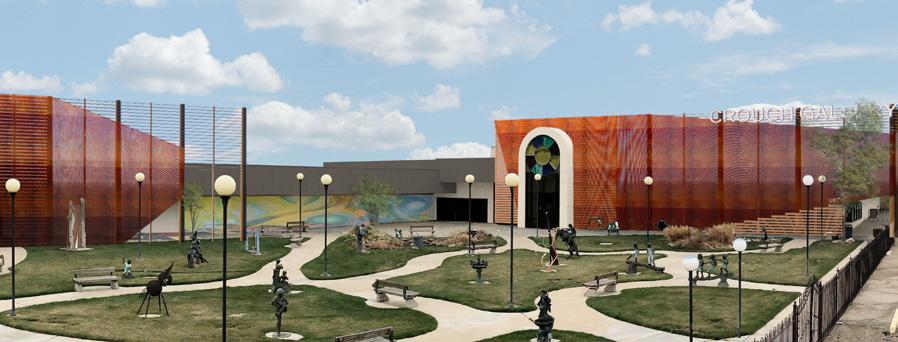
through our website to help support community programs that are provided at no cost
804

How and when did your organization begin? We were founded in 2004 by Brooks Boyett, in order to meet the needs of families and children who live in poverty.
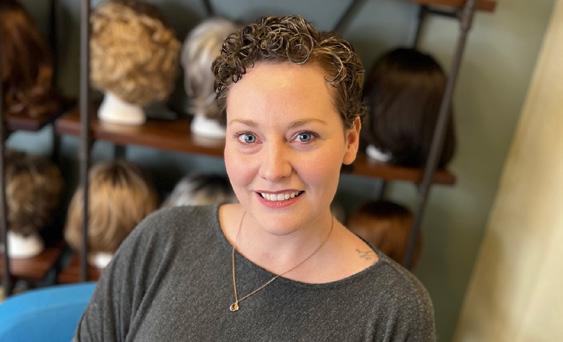
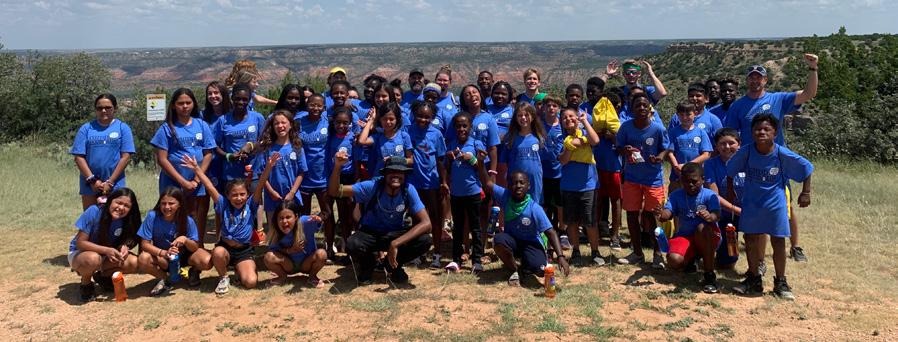
Whom does your organization primarily serve? We work with children and families living in affordable housing communities throughout Amarillo.
What specific community needs do you meet? We work on a daily basis in multiple affordable housing communities through after-school programs on each property, resident assistance, and a variety of outreach and special activities throughout the year. Our desire is to “Feed, Clothe, and Love” our neighbors in need.
What needs does your organization have right now? We are always on the search for more volunteers willing to serve in our after-school programs, whether that is once a week or once a month.

How to help:
Volunteer: mission2540.org/volunteer Donate: We’ve grown a lot over the past year, and the amount of needs we are meeting has never been greater, so financial support is vital to the work we do. mission2540.org/give We provide snacks to 150 kids every week, so we are always happy to take non-perishable snack items.

The Harrington Cancer and Health Foundation was established on Jan. 2, 2013, with proceeds from the sale of the BSA Health System and the Don & Sybil Harrington Cancer Center. As the successor to the BSA Foundation and The Don & Sybil Harrington Cancer Center, HCHF carries a legacy that involves decades of support from people throughout the region. The Foundation fulfills its mission by continuing the programs that operated under BSA Foundation and HCC. It also initiates new programs and funds community organizations that are making an impact within our areas of focus.
Whom does your organization primarily serve? HCHF is a community health foundation serving Amarillo and the upper 26 counties of the Texas Panhandle. The mission of the Foundation is to reduce the burden of cancer and to promote and serve the health care needs of residents living in Amarillo and surrounding communities. HCHF serves local cancer survivors through programs focusing on survivorship, prevention, and patient assistance. HCHF and its programs help
local survivors regardless of where they receive treatment.
What specific community needs do you meet? There is more to cancer than a survivor’s diagnosis and treatment. HCHF and its programs help survivors with needs such as financial assistance for expenses including mortgage and rent, utilities, and fuel; transportation to and from treatments through ChemoCars; FREE counseling services, group classes, a wig room, and more at the 24 Hours in the Canyon Cancer Survivorship Center; FREE mammography assistance; FREE PSA blood tests, and more.
What needs does your organization have right now? Contributions from generous donors across the community are the reason these programs at HCHF exist. Every donation stays local, helping to reduce the burden of cancer on survivors in our area. The more people are aware of these important services, the more cancer survivors can be served.
Donate: Make a tax-exempt donation at hchfamarillo.org.
P.O. BOX 20771
AMARILLO, TX, 79114 806.681.6334
How and when did your organization begin? Children’s Miracle Network is a program of the Harrington Cancer and Health Foundation, serving Amarillo for more than 30 years to create community partnerships to help local kids.


Whom does your organization primarily serve? Children’s Miracle Network serves sick and injured children from the top 26 counties of Texas, four counties in New Mexico, three counties in Oklahoma, and one county in Kansas. CMN is dedicated to promoting and improving the quality of children’s health care and serves children from birth through 18 years.
What specific community needs do you meet? CMN supports the Child Life Programs at Northwest Texas Hospital and BSA Hospital. The Child Life program ensures that infants, children, youth, and families have resources to cope
with the stress of illness, injury, and treatment while in the hospital. CMN provides organizational grants to rural hospitals, as well as Texas Tech University Health Sciences Center Department of Pediatrics for critical pediatric equipment. CMN also provides family grants to assist with medical bills, prescription costs, individual medical equipment needs, and more.
What needs does your organization have right now? It is imperative that local families of sick or injured children are aware of the resources CMN provides, as well as how to apply for assistance.
To apply for assistance or to make a donation, please visit cmnamarillo.org
500 S. TAYLOR ST., SUITE 1060 806.331.6938 | CMNAMARILLO.ORG
How and when did your organization begin?
Center City began in 1996, when citizens became concerned about preserving our historic downtown. They chartered Center City as a nonprofit organization dedicated to revitalizing downtown. In 2002, Center City became a Texas Main Street City. For 20 years, Center City has been accredited by Texas Main Street and National Main Street, showing that we meet or exceed the standards set for a thriving downtown.
Whom does your organization primarily serve? Center City serves the entire city of Amarillo as we work to make downtown everybody’s neighborhood. Center City hosts events, including High Noon on the Square, Jazztober, the Electric Light Parade, Amarillo Community Market and the Center City Mural Run. We invite people from throughout the Panhandle to discover Amarillo’s downtown. With our Downtown Dining District, three hotels and Hodgetown stadium, Center City is a destination for residents and visitors alike.
What specific community needs do you meet? Center City provides family-friendly

and pet-friendly events to bring more people downtown. Center City has a vibrant banner program, streetscape and Facade Grant program to give downtown added curb appeal. Center City works with the Texas Historical Commission to preserve and restore historic buildings that give our downtown its distinct personality.
What needs does your organization have right now? Center City needs to grow our membership. By making a tax-exempt donation to Center City, you can become a member, supporting our goal to make Center City everybody’s neighborhood. Our membership dues help us offer free and low-cost events to bring people downtown to live, work, play, learn and worship. Center City always needs volunteers—individuals and groups—to help us in our mission to promote downtown.
Donate: Make a tax-exempt donation. Volunteer: Individuals and groups can help us in our mission to promote downtown.


How and when did your organization begin? The PARC began as a dream to fill a gap in our community by helping those that are homeless find hope and realize their possibilities. After months of uncertainty and setbacks, that dream started to become a reality. We opened the doors of the PARC on Nov. 19, 2014, and the dream keeps growing. Success happens quickly as we observe that the vision and core principles upon which this agency is based work.

Whom does your organization primarily serve? The Panhandle Adult Rebuilding Center is a caring, relational place that promotes a sense of self-worth and helps those experiencing homelessness become aware of life’s possibilities. Those experiencing homelessness are often overlooked. We love that when you look across the room, you can’t always tell who is homeless, a volunteer or staff. We’re all the same. We all need each other. We all need the acceptance to be ourselves.

What specific community needs do you meet? The Panhandle Adult Rebuilding Center

was created to fill a need we see amongst that community, and honestly a need of every human being: relationship. We believe it is important for everyone to be called by their name. It’s important that those experiencing homelessness have a place to be known and accepted. We believe it is in the safety of acceptance and the accountability of relationships that people find the confidence to better their lives. We also believe that means you never run out of chances. There is always a next possible step to take, and we help our members achieve their unique goals.
What needs does your organization have right now? We are currently working toward expanding our space to serve more people. We would love your involvement through monetary donations and volunteering. We also have a list of supplies we use daily, such as canvas, paint, coffee, etc.
Donate: Visit theparc.net to learn more. Volunteer: Teach a class, spend time with our members.

How and when did your organization begin? Refugee Language Project was launched in 2017 by Dr. Ryan Pennington as a service project under the oversight of Redeemer Christian Church. RLP became a standalone nonprofit in 2019, and has since grown to include a team of seven employees and a myriad of volunteers from across Amarillo. We opened The PLACE, a multicultural community center, in January of this year in collaboration with two other nonprofits.

Whom does your organization primarily serve? Refugee Language Project exists to see individuals from refugee communities in the Amarillo area increasingly flourishing as they confidently interact with the world around them. We serve refugees and former refugees from many different ethnic groups. What specific community needs do you meet? Our programs revolve around removing the language barriers refugees face, honoring their cultures so they can integrate without sacrificing their heritages, overcoming emotional hurdles to build leaders within their communities, facilitating solutions for long-term issues, and engaging
with local churches. Practically, we offer oneon-one mentorships, ESL classes, a weekly shared meal, translation services and a storybook project of bilingual books that tell the stories of Amarillo’s refugees.
What needs does your organization have right now? RLP depends on financial support from individuals and churches. If you are interested in partnering with us, please give us a call or visit our website.
• Set up a one-time gift or recurring donation online at refugeelanguage.org/give. If you give during The Panhandle Gives campaign (November 21-29), your donation is amplified!

• Purchase one of our storybooks for $25 on our website.
• Join us for Table Talk at The PLACE on Tuesday nights from 6-8 p.m. to get your feet wet.
• To learn more about becoming a mentor, email jennifer@refugeelanguage.org.
Imagine opening your home and heart to a child who is experiencing one of the most difficult times in their young life. Brought to a new home by a caseworker, children are very often scared, nervous, traumatized and may only have the clothes on their backs.

Everything that is their “normal” has changed and suddenly everything is new and different.
Each child that enters the foster care system is at risk of:
• Moving seven times in two years;
• Regressing educationally four to six months each time they move;
• Becoming a teenage parent with a strong likelihood of losing that child back into the system;
• Suffering from PTSD;
• Being unemployed by age 24, and; Becoming homeless, incarcerated, trafficked or dead after they age out of the system.
But it doesn’t have to be that way.
Amarillo Angels exists to change these statistics so that every child experiencing foster care has the opportunity to achieve their dreams, reach their goals and experience their brightest and best future.
Since 2017, Amarillo Angels has walked alongside children, youth and families experiencing foster care by providing consistent support through intentional giving, relationship building and mentorship.
Our Love Box program, Dare to Dream mentoring program and events are designed to wrap community around those experiencing foster care, increase placement longevity, and promote health and healing for everyone in the home.
You are invited to be a part of our work and make a difference in the life of those experiencing foster care by starting a Love Box group, becoming a mentor or supporting us as a financial partner.

To learn more about Amarillo Angels, please follow us on social media or visit amarilloangels.org.
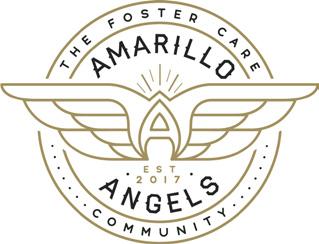

How and when did your organization begin? Founded in 1975 as an educational accompaniment to the public schools and operated by the Amarillo Independent School District, the Discovery Center was reorganized in 1984 as an innovative, nonprofit science technology center with a mission to serve the entire five-state region with curricula-aligned informal science education programs. In 2021, Wildcat Bluff became a part of the DHDC family.
Whom does your organization primarily serve? DHDC serves students, educators, and residents of the Texas Panhandle (population of 427,927) and our neighbors in the surrounding four-state regions of New Mexico, Colorado, Kansas and Oklahoma. We have served an avgerage of 130,000 guests per year since 2009, ranging in age from younger than 2 to senior citizens.
What specific community needs do you meet? The Discovery Center is the only organization of its size in the Panhandle that focuses on informal education for learners of all ages. We provide hands-on and interactive experiences, exhibits and learning opportunities, and work to ensure that


everyone has access to the same educational resources to support their life and career. We encourage people to take their learning to the next level-to discover their own path, and be inspired to be a scientist, engineer, programmer, doctor or whatever they want to be.
The Center also works closely with schools and districts to supplement what students are learning in class. We give students the opportunity to become more engaged in their own learning by interacting with books and other educational resources that are most interesting to them, at their own pace, and free from the pressures of school. Our exhibits and programs develop skills like observation, discussion, communication, reading, creativity and many others.
What needs does your organization have right now? Supporters and donors are critical to the future of the Don Harrington Discovery Center. We are always in need of volunteers, board members, and in-kind or monetary donations to continue providing high quality educational experiences, exhibits, and activities for learners of all ages.
EIGHTH
SUITE 918 806.570.2010
How and when did your organization begin?
Established in 1992 by local community members and nature lovers, Wildcat Bluff Nature Center has been the backbone of outdoor education and nature experiences in Amarillo for 30 years. Wildcat Bluff provides the community with 7 miles of hiking trails, stunning views and unique interactions with wildlife and native plants of the Panhandle. We also have 5 acres of ADA accessible outdoor experiences in our headquarters area, including Libb’s Trail (a paved hiking path), a pond, Gilvin Education Building, and the Visitor’s Center.

In 2021, Wildcat Bluff joined the Don Harrington Discovery Center family.
Whom does your organization primarily serve? The mission of Wildcat Bluff has always been to foster an awareness, understanding and appreciation of nature within the Texas Panhandle, and to encourage education in the natural sciences from a current and historical perspective. We serve visitors from all over the Texas Panhandle to the state at large, to travelers passing through discovering the grandeur of the High Plains.
What specific community needs do you meet? The average American child spends less than 10 minutes per day playing outdoors, and six to nine hours in front of a screen. Outdoor education and time spent outdoors improves mental health and physical fitness, while increasing science test scores. Studies show that Amarillo and the Region 16 education area have the fewest number of environmental education opportunities in the entire state of Texas, and Wildcat Bluff provides an easy-to-reach opportunity for individuals and families to learn and play outdoors.
Wildcat Bluff Nature Center is filled with outdoor learning, such as hiking trails, ADA accessible Libb’s trail, exploration play areas, and exhibits about the geologic and human history of the Panhandle-Plains.
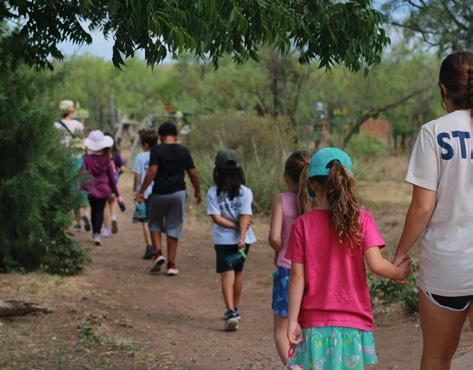

What needs does your organization have right now? Wildcat Bluff has only survived over the years because of donors and supporters like you. Your investment, and the love of the community will help us continue to serve our community with outdoor activities and education in our own backyard. We are always in need of volunteers, and in-kind or monetary donations to support our work.
Amarillo Habitat for Humanity (AHFH) has been serving families in Amarillo for more than 40 years. We were founded in December 1981 as an affiliate organization of Habitat for Humanity International. Since incorporation, we have served 116 families.

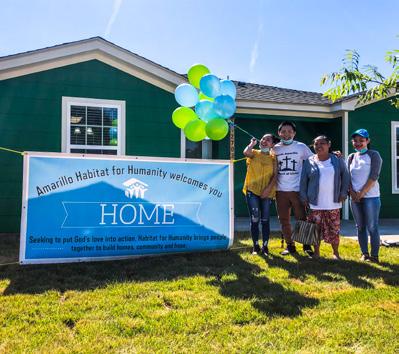
Whom does your organization primarily serve?
AHFH serves families in need of a decent, affordable place to call home. Our partner families earn between 30 to 80 percent of area median income (AMI) and demonstrate a need for affordable housing. Though our partner families are the primary beneficiary, the entire community benefits from an increased supply of affordable housing.
There are significant barriers to homeownership. Families are often cost-burdened, spending more than one-third of their income on their rent and facing substandard conditions like overcrowding, mold or pests. According to a 2018 Urban Institute study, 68 percent of renters identified saving for a down payment as the greatest barrier to homeownership. Additionally, the cost of residential construction has skyrocketed in the past 20 years, making both new construction and existing homes unaffordable for many families. The COVID-19 pandemic also put stress on the global supply chain,
making housing materials, especially lumber, up to 25 percent more expensive. Increasing housing values are outpacing wages, making fewer homes affordable for lower-income households.
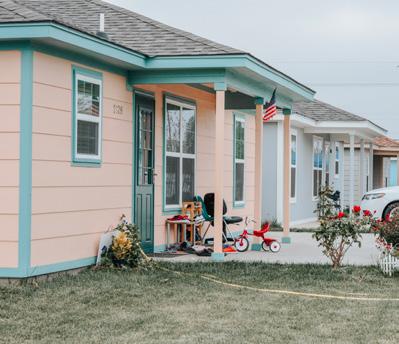
What needs does your organization have right now? Community volunteers working alongside Habitat families who are completing “sweat equity” hours, financial support of our mission and compassion for those striving toward selfreliance and stability through homeownership. Our mission is to bring people together to build homes, communities and hope.
• Volunteer on our construction site, at our AHFH ReStore or serve on our Board of Directors or committees.
• Donate through our website, by mail at P.O. Box 775, Amarillo, TX 79105 or via Vemno at @AmarilloHabitat.
• Support our mission through donations of furniture, building supplies, household goods, or through your purchases to the AHFH ReStore at 2626 Paramount Blvd.
more information, email director@amahfh.org.
2301 N. SONCY ROAD 806.352.6007
WILDCATBLUFF.ORG
’Tis the season for so many tasty recipes, right? I know you are just as excited as I am to make all the delicious dishes! When I think of the holidays, my mind immediately goes to comfort foods like creamy mashed potatoes with giblet gravy, followed by a rich dessert or a cozy cup of hot cocoa. Although you can enjoy these things all year, they just hit you differently during the holidays.
Let’s close out this year with a few recipes to liven up your holiday table, whether you’ve been nice or naughty. The good news is that they’re vegan-friendly and gluten-free.
I know what you’re thinking: Why in the world would I want to add jackfruit to gravy? For starters, it’s a great meat substitute for that “shredded” characteristic you might appreciate in turkey, chicken, or beef brisket. It also provides ample amounts of vitamins A and C and blood pressurelowering potassium. Plus, it’s delicious!
1 (20-ounce) can young jackfruit in brine, drained ½ large or 1 small yellow onion, peeled and finely chopped
1 tablespoon olive oil
2 tablespoons vegan butter
2 to 3 tablespoons cornstarch (add 3 tablespoons water to make a slurry)
2 cups vegetable stock
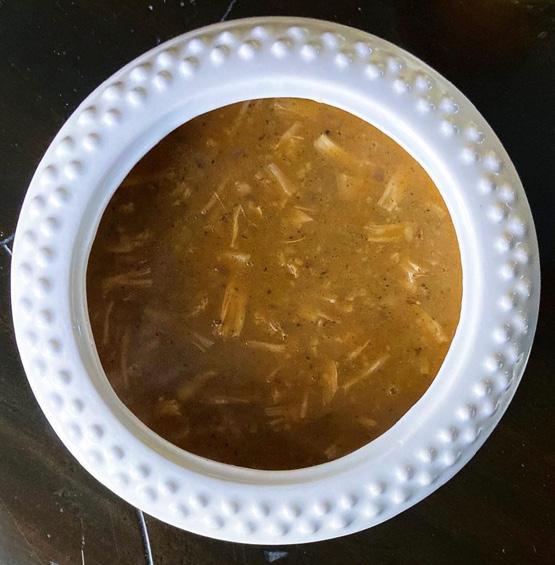
1 teaspoon ground sage
1 teaspoon celery salt Cracked pepper to taste
For the gravy, dry out the jackfruit once you have drained it from the can. Heat oven to 350 degrees. Using a cutting board and knife, slice core ends from jackfruit pieces and discard. Shred the softer part of the jackfruit with your fingers and then place on a baking sheet lined with parchment paper. Place in oven and roast for 20 minutes, or until jackfruit has dried out. Remove from oven and set aside. Once the jackfruit has dried, you can store it in an airtight container in the refrigerator for about a week.
This recipe for a traditional mashed potato and gravy side dish is full of that “holiday flavor” we all crave come November. I eat this dish all year because mashed potatoes!

6 parsnips, peeled and sliced
3 large russet baking potatoes, peeled and sliced
½ cup unsweetened almond milk
1 to 2 tablespoons vegan butter
Salt and pepper to taste
Jackfruit gravy
In a large pot, add parsnips and potatoes. Add enough water to cover an inch above the vegetables. Place over medium-high heat and add a hefty pinch of sea salt to water. Boil for 20 to 30 minutes, or until parsnips are soft. They will cook more slowly than the potatoes, so if those can be easily poked with a knife when checking for doneness, then drain the liquid. After draining, place pot back onto stovetop; reduce heat to low. Mash vegetables with a potato masher until smooth. Add almond milk, butter, salt and pepper. Stir to combine and adjust seasoning if needed. Put a lid on it and set aside until ready to serve. When serving, ladle jackfruit gravy over potatoes and sprinkle with fresh thyme.
Makes 6 to 8 servings
Heat a medium saucepan over medium-high heat. Add olive oil and onions. Saute until onions are slightly translucent. Add butter and stir until melted. Slowly add cornstarch slurry to mixture and stir to combine. Once mixture is a soft paste, slowly add a bit of broth and stir to smooth out the onion and cornstarch mixture. Then add the rest of the broth, sage, celery salt and pepper. Stir gravy and reduce heat to a simmer until thickened. Taste and adjust seasoning if needed. Once the gravy is the desired consistency, add jackfruit and stir. Keep gravy warm over low heat until ready to serve.
Note: If your gravy is still too thin, make a bit more slurry and stir it into the saucepan with gravy. Simmer for a few more minutes, and the gravy will start to thicken.
Makes 6 to 8 servings
RUTHIE LANDELIUSRuthie owns Black Fig Food catering and is proprietor of the online cooking platform Elevated Plant Plate. Learn more at elevatedplantplate.com and blackfigfood.com.
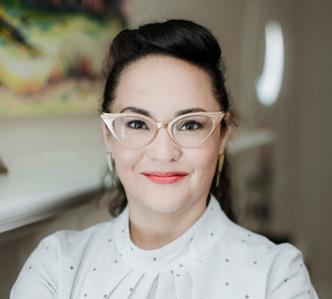

I shared this recipe a while back on Instagram, and it’s good enough to share again. Yes, there are beets in this hot cocoa, which give it a beautiful, deep, chocolatey red hue and creamy consistency. Although the recipe reads “cocoa,” I like to use cacao powder, because it is the purest form of chocolate you can consume. It is raw and less processed than cocoa powder, not to mention an excellent source of nutrients like vitamins, minerals, natural carbs and protein. Vegan alert: If you want to use regular cocoa powder, look for plain or Dutch (dark) powder, as the mixes can contain more sugar and milk powder.
2 cups almond milk
1 large beet, cooked, peeled and grated*
3 tablespoons cacao powder
1 tablespoon blue agave nectar
4 dates, pits removed
1 teaspoon vanilla extract
Dash of cinnamon
Dash of cayenne pepper (if you desire a bit of ‘oh snap!’)
Combine milk with grated beets, cacao, agave nectar, dates and vanilla in a highspeed blender; blend until smooth. Transfer cocoa to a medium saucepan and bring to a low simmer, occasionally stirring so it doesn’t stick to the pan. Once warm, pour into serving mugs and top with cinnamon and cayenne.
*To cook beet, roast it whole wrapped in foil at 350 degrees. Once it has cooled, the skin will peel off easily. Then, you can grate or chop it into small pieces before blending. (You might wear food gloves so you don’t stain your hands.)
Makes 4 servings
Life is
and


1929,
don’t
These
and we’re
that
n many ways it can seem more stressful to cook for Thanksgiving than Christmas. My reasoning goes like this: The meal is something of an afterthought at Christmas. At the very least, it’s secondary to the excitement of all the gifts. But on Thanksgiving, the meal is the main event. The holiday season is a bit like a marathon: Thanksgiving is the starting line and late December the finish. Weary and exhausted, we’re all just happy to get to the table.
Here’s a strategy that’ll help you come out of the gate strong at Thanksgiving and finish strong, too. Here’s how you can serve an impressive holiday meal without breaking a sweat: Make these few simple sides and a delicious Pumpkin Pound Cake with Bourbon
Glaze, and let the pros around town take care of the turkey and the rest of the trimmings. The truth is, you can farm out the whole meal, if need be. It’s totally up to you and what suits your needs best.
I love this approach because, while the rest of the world has been slowly returning to a post-pandemic normal, restaurants are still struggling. Almost three years later, they continue to face staffing shortages and supply chain issues. Supporting your favorite local food purveyors is one of the best ways I know to show gratitude for everything they do to nourish and feed our families, and the whole region, all year round. These folks will make your holidays so much tastier and a breeze to boot. Friends helping friends—now that’s the very definition of the quintessential American holiday. Here are our insider tips on all the best resources.
GIRASOL CAFE & BAKERY: Chef Jessica Higgins and crew make homemade, fresh foods with care and love—and they’re offering an entire holiday menu (including dessert!). 3201 S. Coulter St. 806.322 0023
KIND HOUSE UKRAINE BAKERY: Baking with a purpose. If you haven’t tried the fantastic baked goods and breads from this not-for-profit bakery, Thanksgiving would be a great time to start. Be sure you order ahead. 2100 SW 60th Ave. 806.220.8115 kindhousebakery.org
EDES CUSTOM MEATS: Get all your meaty needs covered here. Order a ham, boneless or whole smoked turkey, and some of the best prime rib around. 6103 Hillside Road, Suite 400 806.352.4242; 6700 W. McCormick Road 806.622.0205 edesmeats.com
SWEETS & MEATS and THE LOCAL WEDGE are two new go-tos for starters and gorgeous charcuterie.
Sweets & Meats: 3300 S. Coulter St., Suite 5 806.331.0105 sweetmeats.com
The Local Wedge: 5461 McKenna Square, Suite 102 806.676.4875 thelocalwedge.com
ORDER-AHEAD TAKE-AND-BAKE STUFFING AND CASSEROLES: Belmar Bakery (3325 Bell St. 806.355.0141 belmarbakery.com); Olive Branch Cafe (3313 SW Sixth Ave. 806.678.8647); United Market Street (2530 S. Georgia St. 806.468.6000 marketstreetunited.com)
ORDER-AHEAD HOMEMADE ROLLS: Belmar Bakery (3325 Bell St. 806.355.0141 belmarbakery.com); Delvin’s Restaurant & Catering (1300 N. Hughes St. 806.310.9410 delvinsrestaurant.com); Blue Crane Bakery (3223 SW Sixth Ave. 806.322.3233 blucranebakery66.com)
ORDER-AHEAD PIES AND OTHER SWEETS: Scratch Made Bakery (118 Sixth Ave. 806.731.4477 scratchmadebakery. com); Belmar Bakery (3325 Bell St. 806.355.0141 belmarbakery.com); Delvin’s Restaurant & Catering (1300 N. Hughes St. 806.310.9410 delvinsrestaurant.com); Ms. Piggy’s Custom Bake Shoppe (6030 W. 33rd Ave. 806.353.9983); The Ruffled Cup (3440 Bell St., Suite 100 806.318.3961 theruffledcup.com); Sweet by Cara Linn (7406 SW 34th Ave., Suite 2A 806.290.5777 sweetbycaralinn.com)
KETO-FRIENDLY AND GLUTEN-FREE BAKED GOODS: Blue Crane Bakery (3223 SW Sixth Ave. 806.322.3233 blucranebakery66.com); Sweet by Cara Linn (7406 SW 34th Ave., Suite 2A 806.290.5777 sweetbycaralinn.com)
This recipe is perfect for the holidays because it’s a cut above normal mac & cheese, but the real advantage is that you can do the work up to five days ahead. If you toast the breadcrumbs in advance, store them at room temperature in an airtight container. Sub your favorite cheeses to make a dish your crowd is sure to love.
1 pound penne pasta
½ cup, plus 2 tablespoons unsalted butter, divided
6 tablespoons all-purpose flour
2 teaspoons kosher salt
½ teaspoon garlic powder
4 ounces cream cheese
5 cups milk
1 tablespoon Dijon mustard
2 ½ cups (10 ounces) shredded gruyere cheese
4 ounces Brie or other soft-ripened cheese, cut into chunks
Cooking spray
1 ½ cups panko breadcrumbs
2 tablespoons fresh flat-leaf parsley leaves, chopped
2 teaspoons fresh thyme leaves, chopped
Cook pasta in boiling salted water for 7 minutes or until almost al dente; drain. Rinse pasta with cold water and set aside. Meanwhile, melt ½ cup butter in a saucepan over medium heat. Stir in flour, salt and garlic powder; cook 1 minute, whisking constantly. Add cream cheese to pan, 1 tablespoon at a time, whisking constantly. Gradually add milk to pan, whisking constantly; bring to a boil. Cook 2 to 3 minutes, or until sauce is smooth and thick, whisking often. Remove from heat. Add mustard, gruyere and cheeses; whisk until smooth. Add cooked penne to saucepan with cheese sauce. Coat a glass or ceramic 9- by 13-inch baking dish with cooking spray. Pour pasta mixture into prepared dish. Cover with foil; chill 8 hours or until ready to serve. Melt remaining 2 tablespoons butter in a skillet over medium-high heat. Add panko; cook 2 to 3 minutes, or until toasted, stirring often. Remove from heat. Stir herbs into breadcrumbs. Heat oven to 350 degrees. Uncover baking dish and sprinkle toasted breadcrumb mixture evenly over top of mac & cheese. Cover with foil and bake for 30 minutes. Remove foil; bake, uncovered, for 20 more minutes or until bubbly. Serve immediately.
Makes 8 to 10 servings
I
reminds me of hard sauce
6
often
with bread pudding. If
bourbon, substitute with apple juice.
butter, softened
3 ounces cream cheese, softened
1
cups packed dark brown sugar
½ cup granulated sugar
4 large eggs
1
1
pure vanilla extract
cups all-purpose flour (6 ounces)
½ cup cake flour (2 ounces)
1 teaspoon baking powder
1 teaspoon ground cinnamon
½ teaspoon kosher salt
¼
ground dried ginger
⅛ teaspoon ground nutmeg
¼ cup whole milk
¼ cup half-and-half
¾ cup canned unsweetened pumpkin puree
Baking spray
1 ¾ cups powdered sugar
3 tablespoons bourbon
want to omit
Using the paddle attachment, cream together butter, cream cheese and sugars in the bowl of a heavy-duty stand mixer at medium speed until blended; scrape sides of bowl. Increase mixer speed to high and beat until light and fluffy; scrape sides of bowl. With motor running, add eggs, one at a time, beating until egg is fully incorporated after each addition. Beat in vanilla. Weigh or lightly spoon flours into dry measuring cups; level with a knife. Combine flours and next 5 ingredients (through nutmeg) in a small mixing bowl. Combine milk and half-and-half. Add flour mixture to batter alternately with milk mixture, beginning and ending with flour mixture, beating at low speed just until blended. Stir in pumpkin. Coat a (10-cup) bundt pan with baking spray; scrape batter into prepared pan. Bake at 350 degrees for about 1 hour and 10 minutes, or until a wooden pick inserted into the center of cake comes out clean. Cool in pan 10 minutes. Invert onto a wire rack; cool completely. Whisk together powdered sugar and bourbon. Stir in a pinch of salt. Drizzle over cake and allow to stand at room temperature until set.
Makes 10 to 12 servings
The hot honey provides a subtle background sweetness and an ever-so-slight kiss of heat. Mike’s (and other brands of) hot honey are pretty widely available these days, but my favorite is from King Arthur Flour. You can use plain honey, if you prefer. Always blanch Brussels sprouts in boiling, salted water before roasting them because the color is more vibrant. Then roast in bacon drippings and finish with a little butter for great flavor.
3
3
2
1
1
teaspoons kosher salt, divided
Brussels sprouts, trimmed and halved lengthwise
bacon drippings
tablespoons unsalted butter
tablespoons hot honey
Arrange the top oven rack to 7 inches below broiler element. Place a large metal roasting pan in oven. Heat oven and pan to 425 degrees. Bring a pot of water to a boil. Stir in 1 tablespoon salt. Blanch Brussels sprouts 1 minute in boiling salted water; drain. Pat Brussels sprouts dry with paper towels. Carefully remove heated pan from oven and melt bacon drippings in hot pan. Add Brussels sprouts to pan. Sprinkle Brussels with remaining ½ teaspoon salt; toss to coat. Roast 6 minutes. Remove pan from oven. Heat broiler to high. Meanwhile, add butter to pan with Brussels sprouts; drizzle with honey. Toss Brussels sprouts and return to oven. Broil Brussels sprouts for 2 minutes, or until slightly charred.
Makes 8 to 10 servings
I like to use red-skinned potatoes for this dish because you don’t have to peel them. You can use any waxy potato, such as Yukon golds, if you prefer. Roast the poblanos while you slice the potatoes and shallots, and do all the prep for this recipe. Be sure to pop the potatoes into a bowl of water once you slice them, and drain them just before you’re ready to assemble. This prevents them from turning brown.
2 medium-size poblano peppers
1 tablespoon kosher salt
1 teaspoon ground cumin
½ teaspoon smoked paprika
Cooking spray
3 pounds red-skinned potatoes, rinsed and thinly sliced
2 medium shallots, peeled and very thinly sliced
1 pound sharp cheddar cheese, shredded
2 cups heavy whipping cream
Arrange the top oven rack 7 inches below the broiler element. Preheat broiler to high. Broil poblanos for 12 minutes, turning to brown on both sides. Place roasted peppers into a small bowl; cover with plastic wrap. Let stand 8 minutes. Remove stems, peel poblanos, and finely chop. Set aside. Reduce oven temperature to 425 degrees. Stir together salt, cumin and paprika. Arrange a third of potatoes in the bottom of a 9- by 13-inch baking dish coated with cooking spray; sprinkle with a third of salt mixture. Scatter half of sliced shallots over potatoes; top with half of chopped poblanos. Sprinkle a third of grated cheese over shallots, poblanos and potatoes. Repeat layers once, ending with cheese. Arrange remaining potatoes over top; pour cream over potato mixture. Sprinkle remaining salt mixture evenly over potatoes; top evenly with remaining cheese. Cover dish with foil and bake for 40 minutes. Uncover, and bake an additional 15 to 18 minutes, or until potatoes are tender and golden brown. Let stand 8 minutes before serving.

Let’s be honest: Holiday entertaining is fun but can also be stressful. That’s why a cookie swap is my go-to gathering in December. It’s a super-fun, low-stress party in which your guests help shoulder the work. (Obviously, all the delicious cookies just strengthen the argument. Right?)
 BY JULIE GRIMES
BY JULIE GRIMES
I would say the formula for success is as easy as pie. But most cookies are easier than baking a pie. So, it’s as easy as cookies! Here are my rules:
1. Plan ahead! Get invitations out early, so folks have plenty of time to prepare.
2. Give numbers. Specify how many cookies you want each guest to bring. Also, let them know how many cookies they’ll take with them, so everyone brings an appropriately sized container.
3. Gather recipes. Ask guests to bring printed copies of their recipes. It’s a good idea to ask participants to note common allergens like wheat, dairy or nuts. They can also draw attention to other dietary considerations, such as dairy- or gluten-free, vegan, etc. If you’re a stickler for presentation, get copies of guests’ recipes (ideally with photos) in advance so you can put together a book of recipes to hand out at the party. Make it as simple as a quick trip to your local copy store to have all the recipes spiral-bound into books. If you want to take it up a notch, try the free graphic-design platform Canva. For a really polished approach, try mixbook.com.
4. Add sides. Are cookies the only party nibble or should other party snacks balance all the sugar? Of course, you’ll want to have plenty of milk, coffee or hot cocoa available.
5. Consider competition. For additional fun, print up ballots and give out prizes for categories of your choosing (Best Decorated Cookie, Most Original, etc.).
Whatever you do, enjoy your friends and family and don’t stress. After all, that’s the whole point of hosting a cookie swap.


NOV |
BRICKANDELM.COM

4 large egg whites
1 cup granulated sugar
½ teaspoon cream of tartar
¼ teaspoon kosher salt
1 tablespoon seedless strawberry jam
1 teaspoon fresh lemon juice
1 cup dehydrated raspberries
Red food coloring gel
Parchment paper
Heat oven to 200 degrees. Place egg whites in a metal bowl. Stir in sugar, cream of tartar and salt. Place bowl over a saucepan one third full of boiling water and simmer over medium heat. Cook until egg white mixture reaches 170 degrees, beating constantly at medium-low speed with a hand-held electric mixer. Remove bowl from heat. Beat egg white mixture on high speed 5 minutes, or until thick and fluffy and cooled to room temperature. Stir together jam and lemon juice. Crush dried fruit to a powder in a food processor. Set aside about half of meringue mixture. Beat jam mixture and raspberry powder into remaining half of meringue. Beat in enough red food coloring gel to tint the meringue a deep red color. Open a 1-gallon zip-top plastic bag and fold it half-way down from the top; carefully spoon half the red meringue into each side of the bag. Using a clean spoon or spatula, spoon plain meringue into the center of the bag. Unfold bag, press out excess air, and seal. Snip a ½-inch hole in one corner of the bag and pipe meringue in a circular motion to form 24 equal mounds one inch apart on parchment paper-lined baking sheets.
Bake for about 1 hour and 20 minutes, or until meringues are crisp and set. Turn oven off and leave meringues in oven for 20 minutes with oven door closed. Remove from oven and cool completely.
Makes 2 dozen
European butter generally contains less water than some domestic brands. Though seemingly slight, the difference is evident in baking, especially in pastries and cookies, which are more prone to spreading. When making shortbread, splurge on good butter, like Irish Kerrygold, French Plugra or American Vital Farms.
1 cup unsalted butter, softened
1 cup powdered sugar
3 large egg yolks
1 cup cornstarch
1
cups all-purpose flour (7.44 ounces)
¼ teaspoon kosher salt
¼ teaspoon baking powder
½ cup sweetened dried cranberries

2 teaspoons grated fresh orange zest
1 teaspoon pure vanilla extract
Parchment paper
⅔ cup bittersweet chocolate chips
2 tablespoons chopped, roasted, salted shelled pistachios
Using the paddle attachment, cream butter and powdered sugar until light and fluffy in a heavy-duty stand mixer, scraping sides of bowl
as needed. Add egg yolks, one at a time, beating until fully incorporated after each addition, scraping bowl as needed. Weigh or lightly spoon flour into dry measuring cups; level with a knife. Combine flour, cornstarch, salt and baking powder, stirring to blend. Gradually add flour mixture to butter mixture, beating at low speed just until blended, scraping sides of bowl as needed. Stir in cranberries, zest and vanilla. Lay a piece of parchment on a flat work surface. Place dough on parchment and roll or press into an 8- by 18-inch rectangle. Cover dough with parchment; chill 2 hours. Heat oven to 325 degrees. Slice dough into 24 4- by 1 ½-inch rectangles. Arrange dough 1 inch apart on a baking sheet lined with parchment or a silicone baking mat. Bake for 15 to 20 minutes, or until edges are just beginning to brown and cookies are baked through. Cool on baking sheets 5 minutes; remove to wire racks. Cool completely. Melt chocolate; drizzle over cookies. Sprinkle cookies with pistachios while chocolate is still soft. Let stand until set. Store in an airtight container for up to 2 weeks or freeze for 3 months.
If you can’t find sparkling sugar locally, order it from kingarthurbaking.com or Amazon. You can also substitute turbinado or regular granulated sugar in a pinch. Since storebought nut butters can sometimes contain added sugar, I like to process toasted cashews with a bit of coconut oil to use in these gluten-free, dairy-free cookies. If you prefer to use store-bought cashew butter, use ½ cup, skip the food processor step, and proceed with the recipe as written, omitting the cashews.
2 ¼ cups gluten-free flour
baking powder
kosher salt
baking soda
toasted cashews
unrefined coconut oil, divided
packed dark brown sugar
granulated sugar
eggs
pure vanilla extract
spray (or silicone baking mat)
sugar


Heat oven to 350 degrees. Combine flour, baking powder, salt and baking soda in small mixing bowl, stirring well to blend. Set aside. Place ¼ cup coconut oil and cashews in food processor; process until a smooth paste forms (about 3 to 5 minutes). Scrape mixture into the bowl of a heavy-duty stand mixer. Beat remaining ½ cup coconut oil, cashew butter and sugars at medium-high speed, using paddle attachment until light and fluffy, scraping sides of bowl. Add eggs, one at a time, beating until incorporated after each addition. Beat in vanilla. Divide dough into 24 equal portions; roll each portion into a ball. Arrange cookie dough balls 2 inches apart on a baking sheet lined with a silicone baking mat (or coated with cooking spray). Flatten center of cookies by making a crisscross pattern with the tines of a fork. Sprinkle tops of cookies with sparkling sugar. Bake for 10 to 12 minutes, or until golden and set. Let stand on baking sheets 5 minutes; remove to a wire cooling rack. Cool completely. Store cookies in a parchment-lined, sealed airtight container for up to 2 weeks or freeze for up to 3 months.
2 dozen

These cookies are great year round. I add peppermint oil and garnish with crushed candies just for the holidays. They taste like homemade Oreos when you omit the candies and peppermint oil. And it’s easy to adapt them to many different occasions. At Halloween, for example, you can tint the filling orange.
Cookies:
¾ cup unsalted butter, softened ¾ cup granulated sugar
2 large eggs
1 ¾ cups all-purpose flour (7.44 ounces)
¾ cup special dark unsweetened cocoa powder
¾ teaspoon kosher salt ½ teaspoon baking powder
Cooking spray (or silicone baking mat)
Filling: ½ cup unsalted butter, softened 6 tablespoons vegetable shortening ¼ teaspoon kosher salt
2 ½ cups powdered sugar ¼ teaspoon peppermint oil
Crushed peppermint candies
Prepare cookies: Cream together butter and granulated sugar at medium speed with an electric mixer until light and fluffy, scraping sides of bowl as needed. Add eggs, one at a time, beating until fully incorporated after each addition. Weigh or lightly spoon flour into dry measuring cups; level with a knife. Combine flour, cocoa, salt and baking powder, stirring until blended. Gradually add flour mixture to butter mixture, beating with a mixer at low speed until just combined. Turn dough out onto a lightly floured work surface and knead dough 3 to 4 times. Cover dough and chill 30 minutes. Heat oven to 350 degrees. Roll dough out to ⅛ inch thickness. Using a 2-inch round cutter, cut dough into 52 circles, rerolling scraps as needed. Arrange dough rounds 1 inch apart on baking sheets coated with cooking spray. Bake for about 8 minutes, or until set and cooked through. Carefully remove hot cookies to wire racks; cool completely. Meanwhile, prepare filling: Beat butter, shortening and salt at high speed 3 to 5 minutes, or until smooth. Gradually add powdered sugar, beating until filling is smooth and fluffy, scraping sides as needed. Beat in peppermint oil. (Do not chill.) Scrape filling into a gallonsize zip-top plastic bag; cut a ½-inch opening in one corner of the bag. Pipe filling over 26 cookies; top with remaining cookies, flat sides down, to form sandwiches, pressing gently to squeeze filling out to the edges of each sandwich. Roll edges of cookie sandwiches in crushed peppermints, pressing slightly to adhere. Store cookies in a parchmentline sealed airtight container for up to 2 weeks or freeze for 3 months.
89
These deliciously nutty, melt-in-your-mouth cookies need no introduction. I’ll simply say: Consider doubling the recipe. These disappear in a flash every time I make them.

softened
light brown sugar
sugar, divided
salt
(6.5
Heat oven to 350 degrees. Using the paddle attachment, cream together butter and brown sugar until light and fluffy in the bowl of a heavyduty stand mixer, scraping sides of bowl as needed.
in 1 cup powdered sugar, vanilla and salt. Add egg yolks, one at a time, beating until fully incorporated after each addition. Reduce mixer speed to low. Weigh or lightly spoon flour into
dry measuring cups; level with a knife. Combine flour and cornstarch and gradually add to dough, beating just until blended. Stir in chopped pecans. Turn dough out onto a work surface; knead 2 to 3 times. Divide dough into 30 equal portions (about 1 heaping tablespoon each); roll each portion into a ball. Place remaining ½ cup powdered sugar in a bowl. Roll dough balls in powdered sugar; reserve excess powdered sugar. Arrange sugar-coated dough balls 2 inches apart on baking sheets lined with parchment paper (or a silicone baking mat). Press 1 pecan half in the center of each cookie. Freeze for 15 minutes. Bake for about 12 to 15 minutes, or until the bottoms of cookies are lightly browned. Let cookies cool on hot pans 4 to 5 minutes. Remove to wire racks; cool completely. Place remaining powdered sugar in fine-mesh sieve and dust tops of cookies with powdered sugar. Keep cookies in a parchment paper-lined airtight container for up to 2 weeks and freeze for up to 3 months.
F rom last year’s pandemic-recovery optimism to a year dominated by supply issues, inflation and economic uncertainty, it’s been a wild ride for local retailers. One of Brick & Elm’s core values is supporting local businesses, so we want to take this opportunity to send readers their way. Shopping local during the holidays doesn’t just help each retailer; it boosts the entire economy. As the season approaches, we hope this Holiday Gift Guide fills you with cheer, inspiration, and information about products and services your friends and family will love.















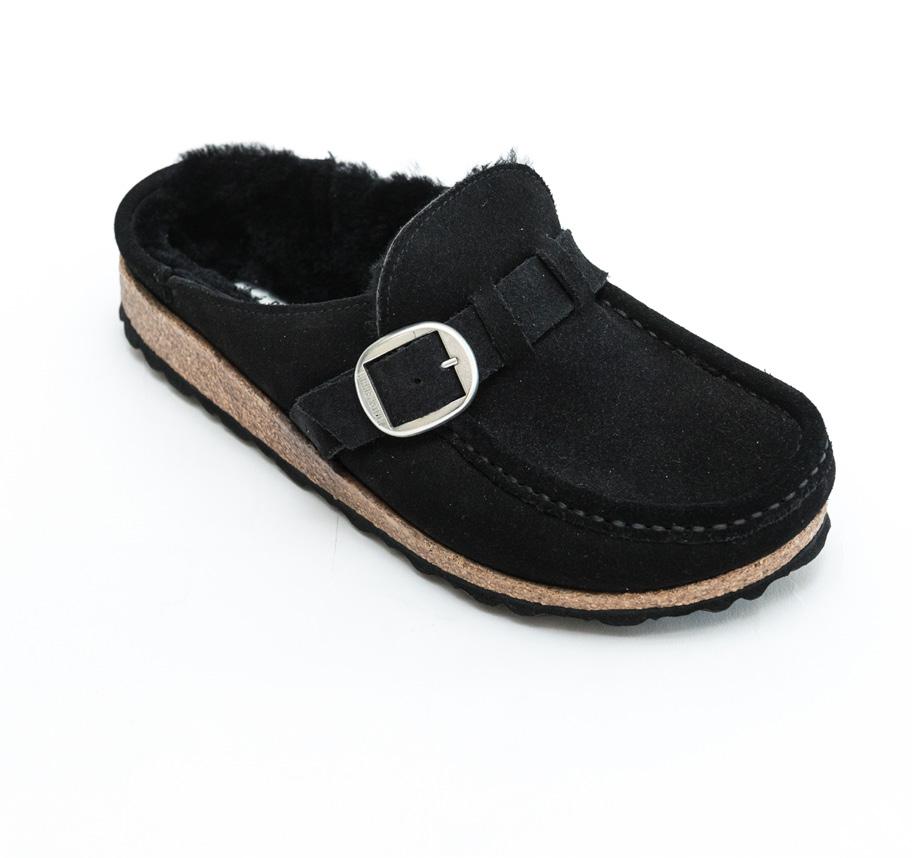




THIS BANGLE BRACELET IS FROM THE CHAMPAGNE BUBBLE COLLECTION. THE NAME ALMOST PERFECTLY DESCRIBES IT. 14KT YELLOW AND WHITE GOLD WITH A PAVE DIAMOND CENTER PIECE.


THIS RUBY AND DIAMOND PENDANT SET IN WHITE GOLD IS BOUND TO MAKE HER EYES LIGHT UP WHEN SHE OPENS IT THIS CHRISTMAS.


A VINTAGE-INSPIRED RING TAKES YOU BACK TO THE ERA FROM WHICH THIS DESIGN ORIGINATED, SHOWING OFF THE SPIRIT OF ITS TIME.

A LITTLE WHISPER OF CHRISTMAS: IF YOU LOOK CLOSELY YOU CAN SEE A SMALL HINT OF A SNOWFLAKE IN THIS PENDANT. IT’S DESIGNED FOR YEARROUND WEAR BUT CHARMS WITH A HIDDEN GLIMPSE OF THE HOLIDAYS.
SHINING AS BRIGHT AS THE SUN, THE YELLOW DIAMONDS SET THIS RING APART. ANNIVERSARY BANDS ARE SENTIMENTAL AND POWERFUL GIFTS.





















LOLLIA


CARRIÈRE


JOIN

he feedback we’ve been getting is this is the best chicken they’ve ever had,” says David Ballard, one of the proprietors of the new Charlee’s Chicken on Polk Street. “It’s the best fried chicken in Amarillo.”
Ballard’s collaboration with Marco Camp and Brian Singleton—a veteran restaurateur and former owner of Crush—has introduced a new “casual but gourmet” dining option to the former home of Polk Street Eats, just south of The Barfield. The menu is built around tender, slow-cooked rotisserie chicken. Charlee’s opened this fall after a soft opening in September, offering a full bar, desserts made in-house, and a dog-friendly covered patio.
Our clandestine “Cloak & Diner” author visited Charlee’s a few weeks ago for a review in Flavorillo, our local food-culture email newsletter. Here’s what they wrote: “Their chicken is dry rubbed and rotisseried, or battered and deep-fried, then doused with creative sauces that make it a standout from what you might find at any chicken shack competitors. Their signature dish is rotisserie chicken pieces served bone-in and piping hot, crisp-tender skin roasted to perfection, locking in juices that diners will want to sop up with an extra biscuit.”
The restaurant also features an expansive wine menu hand-picked by Singleton and a 4 to 6 p.m. daily Happy Hour. The owners tease future live music offerings and a possible brunch rollout next spring, all part of their desire to “spread happiness and bring traditional comfort food to downtown.”

Healthy meals to go. Build your own meal using already prepped foods, or choose from a flexible menu of options based on diet needs, whether vegan, trying to manage diabetes, or wanting enough protein to add muscle. Gourmet meals and meal-prep using high-quality, whole food ingredients. 2511 S. Georgia St., 282.5434 eightytwentymeals.com $
This comfort casual chain has very few locations, but ours on I-40 is constantly busy. The appetizers are great for sharing and the popular Happy Hour is ridiculously affordable. Each location offers a signature menu. Try a Black Angus steak or the pizza. 4110 I-40 West, 398.2776, aspencreekgrill.com/amarillo $$
This out-of-the-way spot is located south of town at Preston West Golf Course, but it’s got a loyal patronage. We might even say it’s worth the, um, long drive. Hit it on Taco Tuesday, or grab traditional bar/grill food the rest of the week. Regular drink specials quench your thirst. 9101 S. Coulter St., 353.7003 $
This family-owned bakery is known across the city for its cookies and cakes, but the restaurant side has a passionate clientele of its own. Grab an enormous breakfast burrito with Roasters coffee. For lunch, try the soup or a panini. Belmar also has great box lunches and party trays. 3325 Bell St., 355.0141, belmarbakery.com $
Formerly La Bella Pizza on Olsen, a locally owned pizza place with a dedicated clientele and a delightfully diverse menu. The pizza is great, of course—the 24-inch size is one of the biggest available in town—but they also serve burgers, gyros, calzones, subs, ribs, chicken and more. Full dining room and a full bar with live music. 3801 Olsen Blvd., Suite 9, 352.5050, ilovelabellapizza.com $
If you’ve driven from Amarillo to the Metroplex, you’ve passed this woodpaneled dive right after exiting I-40 for 287. It’s open for breakfast and lunch on weekdays, and serves dinner until 7:45 p.m. on Fridays. The chicken-fried steak is highly rated, and the portions are huge for weekly specials like enchiladas and meatball subs. 12800 S. US 287, 335.1938 $
The menu at this new restaurant is built around slow-cooked rotisserie chicken and juicy, hand-breaded fried chicken, plus a few seafood surprises like Sesame Seed Crusted Tuna. The desserts are amazing and the deep wine selection is way too good for a downtown chicken joint. 614 S. Polk St., 376.4700, charleeschicken.com $$
Look, Cheddar’s is a comfort-food chain with origins in the Dallas area. That makes this I-40 mainstay only sort of local, but it is always, always busy for a reason. Families love the affordable menu. Seniors love the discounts. Human beings with working tastebuds appreciate the honey-butter croissants. 3901 I-40 West, 358.2111, cheddars.com $$
On the Hey Amarillo podcast, Brick & Elm cofounder Jason Boyett once named this his favorite restaurant. It’s famous for its Frito pie, delicious beans, and nostalgic chopped beef sandwiches, all made from scratch by husband-and-wife owners. 4315 Teckla Blvd., 359.3176, crazylarrysbbq.com $$
Maybe you haven’t heard of this River Road mainstay. Also, the name “David” doesn’t exactly scream DELICIOUS MEXICAN FOOD. But the hundreds and hundreds of reviews tell another story. This little dive needs to be on your radar, especially if you love fajitas, enchiladas, and margaritas. 400 E. Hastings Ave., 418.6333 $
The opulent, moody atmosphere of the Drunken Oyster feels like you’ve stepped out of the Panhandle and into the heart of the bayou. The Louisiana-style cuisine never disappoints, from the fresh oysters to the jambalaya and crawfish étouffée. It’s also a great spot for live music. 7606 SW 45th Ave., Suite 100, 418.6668, drunkenoysteramarillo.com $$
This legendary cafe is nestled inside a longtime health food store in Wolflin Square, so you can feel good about everything on the menu. Its owner pioneered serving organic food in Amarillo. We’ve always loved the marinated carrots and enchiladas. Thirsty? Try the juice bar. 2425 I-40 West, 353.7476, eat-rite.com $$
This little red-and-yellow, walk-up hut is one of the true gems in the River Road neighborhood. Located near Pleasant Valley Elementary, it’s locally owned and open early for breakfast, serving incredible breakfast burritos and tortas. The wellseasoned lunch and dinner portions are large. 4404 River Road, 383.4545 $
The prominent I-40 location probably negates the title “hidden gem,” but we suspect a large percentage of Amarillo’s Mexican-food aficionados haven’t visited El Charro. That’s a mistake. The fresh-made salsa is wonderful and the food flavorful and authentic. Travelers and locals alike rave about the friendly service. 4207 I-40 East, 373.4555 $
Is it an ice cream parlor? A Mexican snack shop? We’re not sure how to fully categorize this northeast Amarillo business, other than to tell you to go check it out. The menu items are beautiful, handmade and colorful, from strawberries and cream to mangonadas, elote and an enormous selection of agua frescas. They cater, too! 818 Martin Road, 418.6155, elpaletontx.com $
This is not a comprehensive list of local restaurants. From issue to issue, we will try to include a wide variety of dining options based on the space available. If you notice an error, please email mm@brickandelm.com.
$$ $$$
Most entrees under $10 Most entrees $11 to $20
entrees over $21
to
is hidden on the back-alley side of the Summit Shopping Center—but it’s definitely worth the discovery.

love the fun atmosphere, calzones, paninis, craft beer and shareable starters. The brickoven pizza toppings are inventive, too. 7306 SW 34th Ave., Space 10, 331.2232, fireslice.com
A relative newcomer to the city’s Asian restaurant scene, this is one of just a few places with decent ramen, dumplings and bao in Amarillo. The lunch specials are served until 3 p.m. and the orders arrive fast. Like most new restaurants around here, it stays busy. 2219 S. Georgia St., 803.2219 $$
We are huge fans of Girasol, where the weekly specials are always creative, filling and delicious. The Saturday brunch never disappoints either, especially in the new outdoor dining area on a sunny morning. Girasol is lunch-only, so grab some baked goods or bread when you leave. 3201 S. Coulter St., 322.0023 $
This iconic location on I-27, tucked away between Amarillo and Canyon, is worth the short drive if you’re a fan of chicken-fried steak, country music, and a homespun family restaurant feel. The green-chile gravy is amazing, as are the hand-cut grilled steaks, burgers, and grilled chicken. 13651 I-27, 622.2200, greenchilewillys.com $$
A good burrito always makes people happy, and this small dine-in and takeout restaurant on the Boulevard does it right. Almost everything on the menu is less than $5, and loyal customers tend to order online and pick it up. Interestingly, we hear a lot about the burgers here. 908 Amarillo Blvd. East, Suite B, 379.8226 $
This Cajun/Creole seafood franchise offers mixand-match seafood boils, allowing customers to pair a favorite catch (think crab legs, lobster tail or crawfish) with their favorite sauces, spices and add-ons. The breaded-and-fried baskets are also made to please, including fresh flounder, catfish, oysters and more. 5807 SW 45th Ave., Suite 205, 803.3133, hookreel.com $$
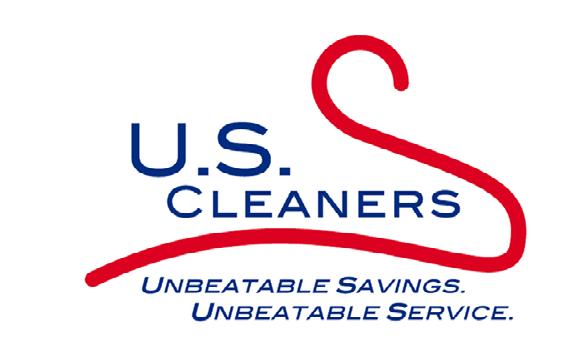
Amarillo loves its donuts, and this little indie stop on North Grand has a faithful following, served fresh by an always-friendly team. Moms and dads will love the colorful gourmet options kids go crazy for, as well as more grown-up treats like kolaches, breakfast sandwiches and breakfast burritos. 1615 N. Grand St., 803.0845 $
This cute, diner-style storefront on Olsen serves down-home meals with a focus on Mexican food. The pancakes and breakfast burritos are super-popular, as are the spicy chilaquiles. Family-owned, fair prices and always worth a visit. 3701 Olsen Blvd., Suite L, 418.8850, jacoboscafe.com $
Technically, this venerable Bushland restaurant isn’t in Amarillo, but it’s absolutely worth the drive. You’ll be surprised at the quality of this Italian food, from the New York-style pizza to the hot subs, pasta, lasagna and even the steak. The sauce is homemade and you can tell. 19151 I-40 West, 356.8191 $
The FM 1151 location south of town isn’t particularly convenient for Amarillo residents. But this takeout-only shack is worth the bite. The big cheeseburgers are amazing, as is the busted-egg sandwich. (For a side, get the cheese curds.) Then grab a cherry-lime or Mexican Coke and enjoy it on the nice, sunny patio. 1505 E. FM 1151, 335.5644 $
Located at the Embassy Suites between Hodgetown and the Globe-News Center, this southwest steakhouse provides an excellent, high-end addition to the downtown dining scene. The premium, all-natural Angus steaks are central to the menu, of course, but the salads and seafood are also worth a try. 550 S. Buchanan St., 437.1483, lbffinedining.com, $$$
You may have seen Mitch’s big black BBQ trailer at local events, but the brick-andmortar Mitch’s—located inside Toot ‘n Totum complexes—serves up food way better than anyone expects of “barbecue
from a convenience store.” The portions are huge. We love the Meme’s fried pies. Traveling? You can also find Mitch’s in Plainview and Clayton, New Mexico. 3320 S. Georgia St.;9000 I-40 East, 220.0978, mitchstxbbq.com $$
If you’ve ever thought twice about dining inside a convenience store, this will change your mind. This place serves some of the best soul food in the city. It’s known for huge portions—the nachos probably weigh three pounds—as well as its ribs, pork chops, fried catfish and breakfast items. 1621 NW 18th Ave., 418.6751 $

Open for lunch on Sixth, this relatively new, cozy cafe inside Moonwater Designs doesn’t just offer healthy, light lunch options including flavorful quiches and caprese salads. (The caprese grilled cheese? YES.) It’s also a wonderful option for holiday pies, cakes and sides like green bean casserole. The desserts are worth the extra calories. 3313 SW Sixth Ave., 678.8647 $
PONDASETA BREWING CO. Already popular for its craft beer, a new mobile trailer enables the brewery to serve a food truck-style menu. The focus is pub-style food like burgers, sandwiches and mac-and-cheese bites. Kids meals are available. The adults will want the charcuterie adventure board, with hummus, cheese, meat and crackers. 7500 SW 45th Ave., 418.6282, pondaseta.com $$
The donut wars are a thing in Amarillo, and we’re ready to proclaim at least one victor: Rise ‘N’ Shine has the best donut holes in the city. Really! Beyond the usual glazed, cake or filled doughnuts, you can grab fresh pastries, kolaches and croissant breakfast sandwiches. 3605 SW 45th Ave, 806.398.9622; 5901 S. Coulter St., 437.1511 $
Newly opened on 45th across from United, this SoCal chain advertises itself as “the only taquito-focused franchise in the world.” If that doesn’t draw you in, the variety will. Choose among a half-dozen taquito ingredients (shredded beef, marinated chicken, avocado, etc.), then pair the crispy rolls with fresh toppings, dipping sauces, and sides. 5900 SW 45th Ave., rollemup.com $
Never had a reason to go out to Tradewinds Airport? Now you do. This fun, home-cooking menu comes with runway views of private-plane takeoffs and landings. Locals love the breakfast options—served from 6:30 a.m. until 11—as well as the burgers on the lunch menu. Open for dinner on Thursdays and Fridays. 4105 Tradewind St, 699.1008 $
Most locals assume the most authentic Mexican food is on the city’s east side, but this joint serves authentic Jalisco-style Mexican food near 34th and Coulter. The menu is huge, but we love the breakfast, massive parrillada meals and seafood. (There’s also a Dumas location.) 3410 S. Coulter St., 331.6248; 5630 Amarillo Blvd. West tapatiotx.com $



River Road restaurants aren’t always on the radar of every local resident, but Wesley’s has been around forever and deserves its legendary reputation. Loyal customers return again and again for the genuine Texasstyle barbecue, especially the baby-back ribs, brisket and—yep—the beans. 6406 River Road, 381.2893 $
It started as a “food truck without wheels” and now this street food experiment is one of the city’s favorite restaurants, and one of the only vegan/vegetarian places in town. Definitely try the animal fries and diablo shrimp tacos. The burgers, craft beer and wine list are all wonderful. 2916 Wolflin Ave., 353.9273, yellowcitystreetfood.com $
levation changes perspective. Whether it’s a photographer standing on a ladder to take a portrait or a drone pilot maneuvering a flying camera hundreds of feet in the air, the resulting images transform our point of view.
That’s one reason Chris Hale, a longtime photographer and videographer, turned his attention to professional drone photography through 806Aerial.

His interest in photography began when he got his first 35mm Canon camera as a freshman at the then West Texas State University in 1983. He began shooting and editing videos over the next decade, and was hooked. When consumer drones started entering the market a few years ago, his family gave him his first drone. That was 2016.
Hale began experimenting and quickly got licensed through the Federal Aviation Administration (FAA). Not long after, he saw a market for construction, real estate, agriculture, media and industrial clients to use drone-captured aerial photos and videos. That’s when 806Aerial began. “I love capturing the wide-open spaces and industrious spirit of the Texas Panhandle,” Hale says.
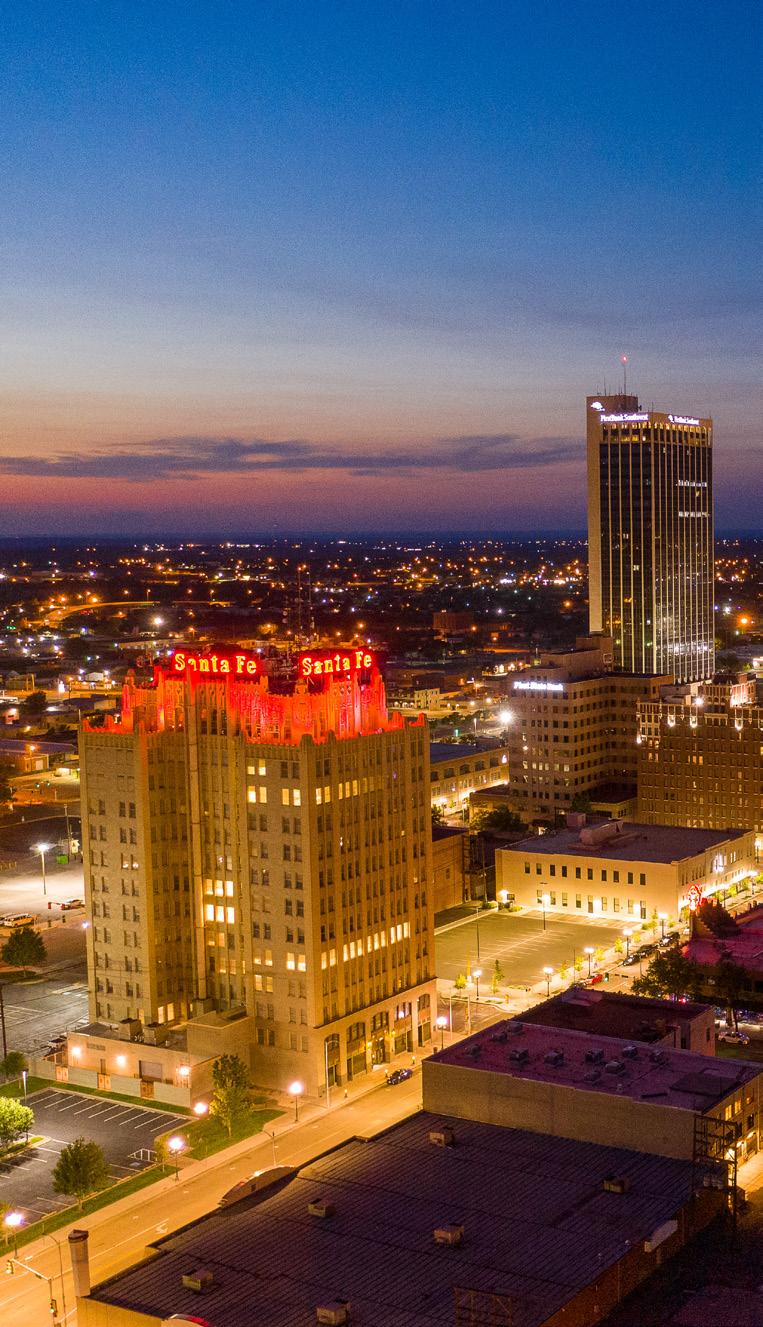
See additional examples of his work on Facebook and Instagram.








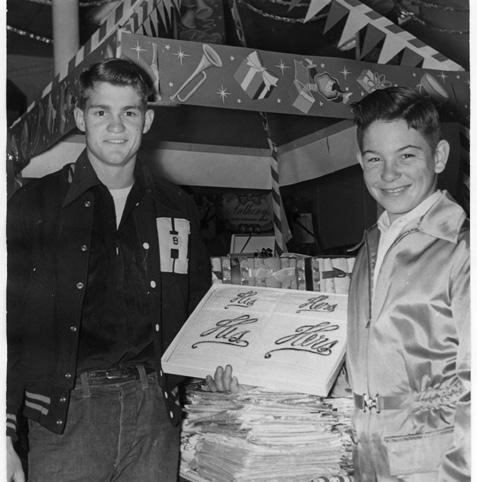


Ineed to confess that if you get a Christmas gift and the tag says “from Kim and Wes,” it’s probably all Kim because I have a history of not getting things done on time.
What’s more, the bulk of the gifts she purchases come to our doorstep while the green leaves still sing in the trees. The FedEx guy knocks and walks off before anyone can even ask how the kids are doing. I don’t even know if he has kids or not.
Christmas shopping has lost its magic.
It wasn’t always like this. Way back in the fog of memory, I can still picture the two of us, newly married, going out on frigid December evenings to attack the Christmas list after digging a little deeper into our ANB overdraft protection to splurge on fried vegetables at Gardski’s. Then came the thrill of finding gifts that seemed expensive but weren’t because our budget probably didn’t exceed $50. Hastings had us in mind when they brought in a load of bargain books.
And if I dial it back further, I faintly see the glow of colored lights swinging in the wind around the courthouse back home in Wellington. There was that one night when the downtown stores stayed open late and everyone in town was on parade. You could buy most anything in Wellington then, and Saied’s and Hatch’s would wrap and dress our gifts at no charge using their fancy bow makers and thick paper that tucked just right on the ends. A trip to Sears to see Santa marked the final station on this secular posada around the square, a happy (if not mildly confusing) memory, seeing how the jolly old elf looked a lot like Gary, the appliance repairman.
Shopping in stores, out in the cold, with whiny kids and groaning old folks was a memory-making experience, almost as exciting as the Christmas celebration itself. And while exchanging gifts goes way back with Christmas, it wasn’t until the late 19th century that gifting on an industrial level became a thing. Savvy department store magnates such as R.H. Macy in New York convinced Americans it was our religious and patriotic duty to spend and have some fun doing it. Then along came songs such as “Silver Bells” in the 20th century, tattooing in our minds scenes of merry shoppers virtually floating in the ether of nostalgic commercialism.


Amarillo once dressed its holiday cheer on the busy sidewalks of Polk Street. The great white way of the Panhandle, brash and gaudy with its nightly displays of neon the year round, would trip the light fantastic come December with holiday lighting displays designed on the premise that nothing succeeds like excess. It was here the Jaycees organized a big daytime Christmas parade to kick off the season with marching bands and elaborate floats, many with overt religious themes to convince folks that Jesus fully endorsed all the hoopla. And of course, Santa would ride into town on the heels of these parades, probably looking for last-minute deals at Fedway like everyone else.
If you stepped into Colbert’s you might see Max Cohen behind a counter flattering old women into buying a gift or two for themselves. It wouldn’t have been uncommon to see Stanley Blackburn policing the aisles down at Blackburn Brothers, making sure everything was in order. They not only knew their Amarillo customers, but also the folks who journeyed in from Dalhart or Memphis. Everyone had a name and a preference, and these folks made it their business to know both.
Maybe that’s why it wasn’t as much fun after a while, at least for some of us. The commercialization of Christmas is nothing new, but when mainstream American retailing lost the personal touch, when the lights went dark on Polk and the stores closed around the courthouse square in Wellington, Christmas shopping seemed to lose its religion. The pandemic played some role in this too (Christmas 2020—now that was fun), but we were feeling the burnout well before.
But let me finish on a high note and point out that my desire to buy things for people who don’t really need any more things has been rekindled to a degree. Pop-ups, thrift shops, used book and record stores and antique emporiums have been proliferating of late. They sell not only interesting and unique items, but also the idea of community— places you can shop and make lasting friendships. In the end, it’s this human connection, the peace and goodwill among all folks of every stripe, driving us against a chilly Panhandle breeze to spend money we don’t have. And that is what Christmas is really about.

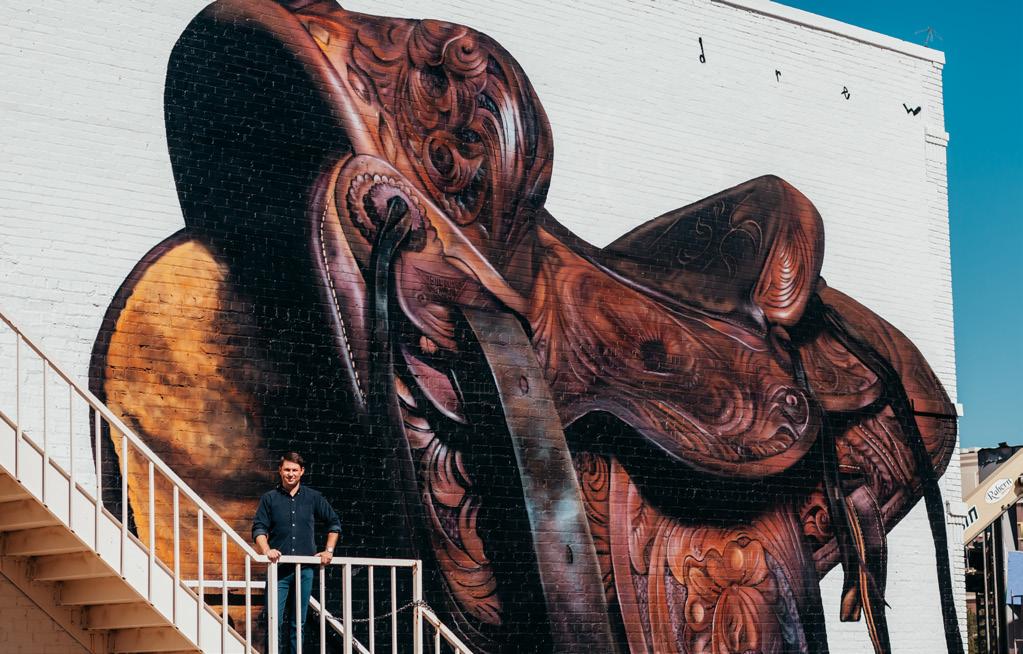


The best advice I ever heard is ... “No guts, no blue chips.” To make a true impact, you must be willing to take risks while not being afraid to fail.
My three most recommended books are ... Zero to One, by Peter Thiel; Make your Bed, by Admiral William H. McRaven; Can’t Hurt Me by David Goggins.
To me, success means ... working harder and smarter to obtain an outcome for which you can hold your head up and be proud of the result.
People who know me might be surprised that I ... love mountaineering and the rewarding challenges that come with pushing your mind and body to the summit. My next climb is Cotopaxi (19,347 feet) in Ecuador this January.
My biggest pet peeve is ... being late. A person’s time is limited and valuable. I always want to be respectful of their time and hopefully will get the same respect back. I hate being late to a meeting.
Everyone in Amarillo needs to experience ... a tour at the new Innovation Outpost. I can’t wait to see the positive impacts their programs will have on our workforce and economy.
If I could change any one local thing it would be ... the willingness to take long-term civic risks to maintain the health and viability of our town.
This city is amazing at ... I am so proud of Amarillo’s independent spirit and warm, welcoming attitude.
My favorite place in Amarillo is ... sitting at the bar at Crush downtown, interacting with fellow business people and out-oftown visitors.
A local organization I love right now ... Friends of Crossbar. I am very excited to work on getting access to the Bureau of Land Management’s Cross Bar Special Recreation Management Area (SRMA), north of Amarillo. We have the opportunity to create the state’s only BLM Campground. It would essentially be a sister to Palo Duro Canyon.



